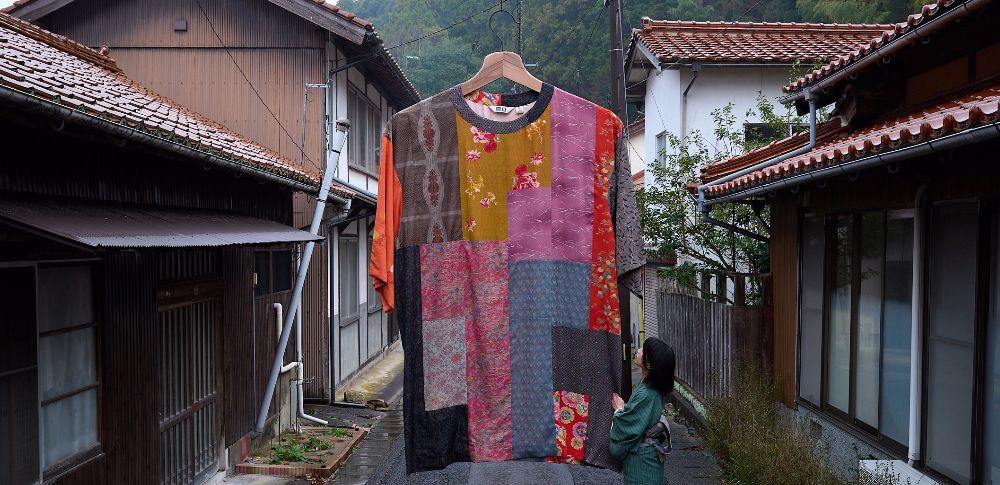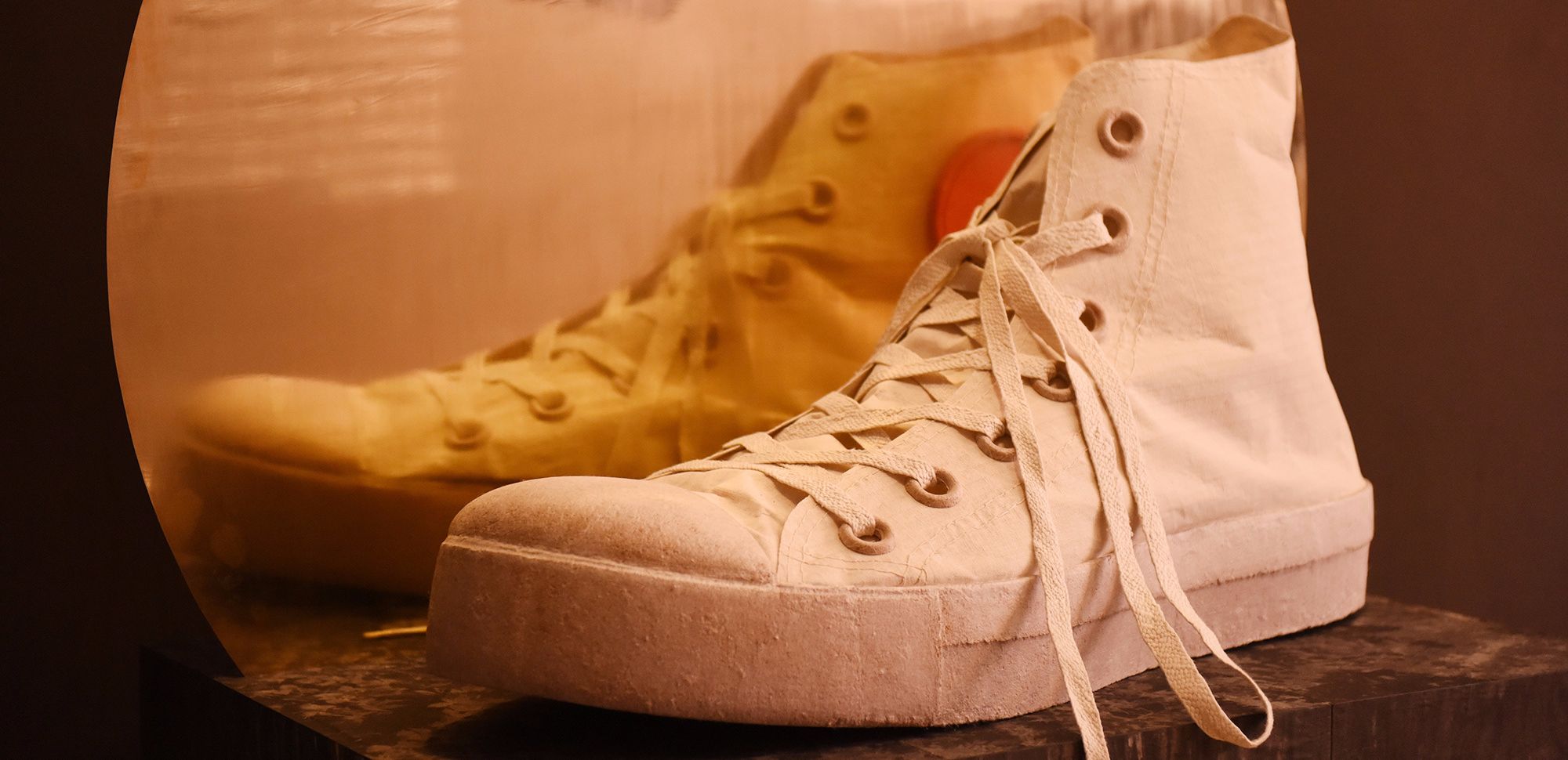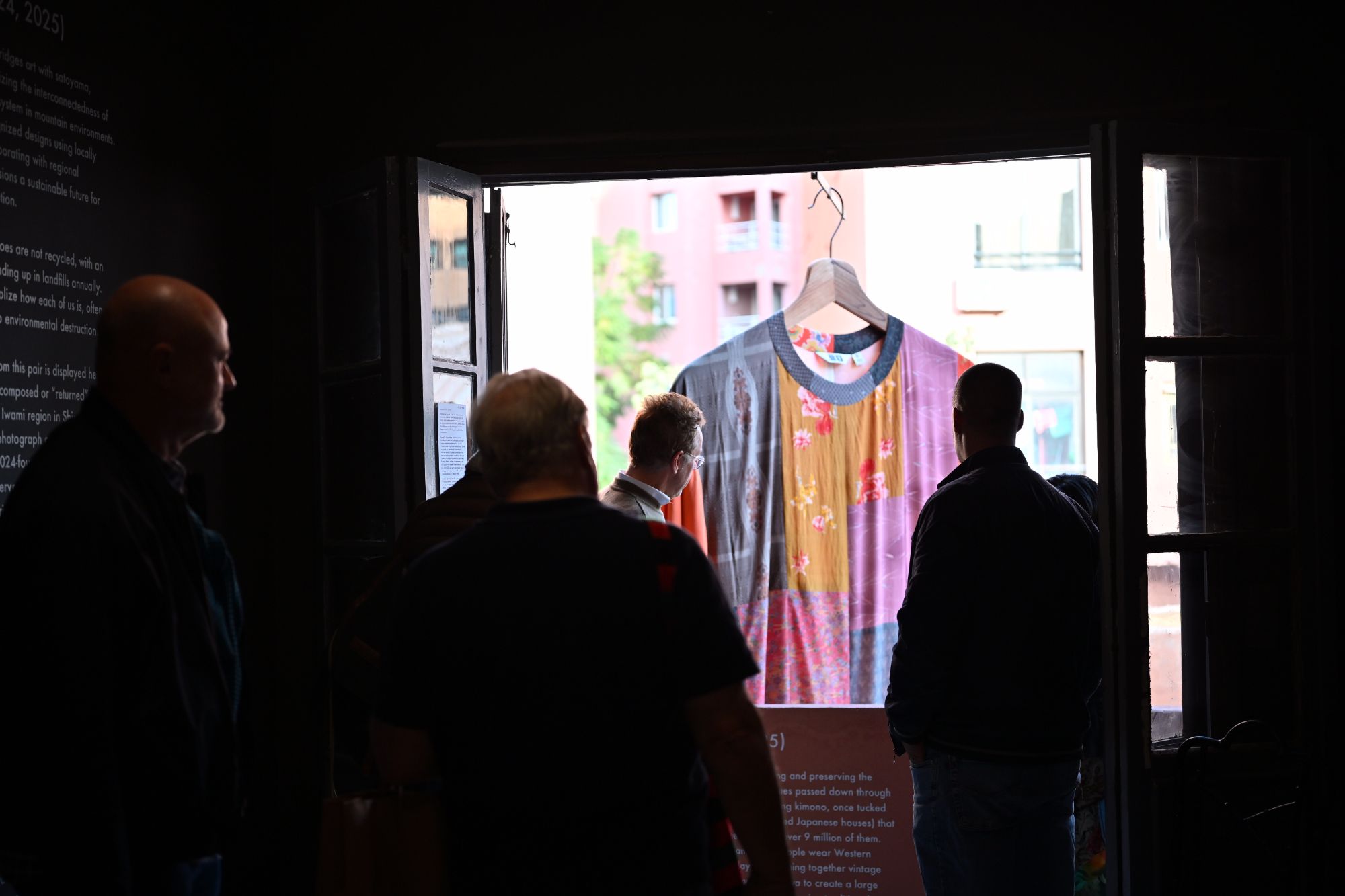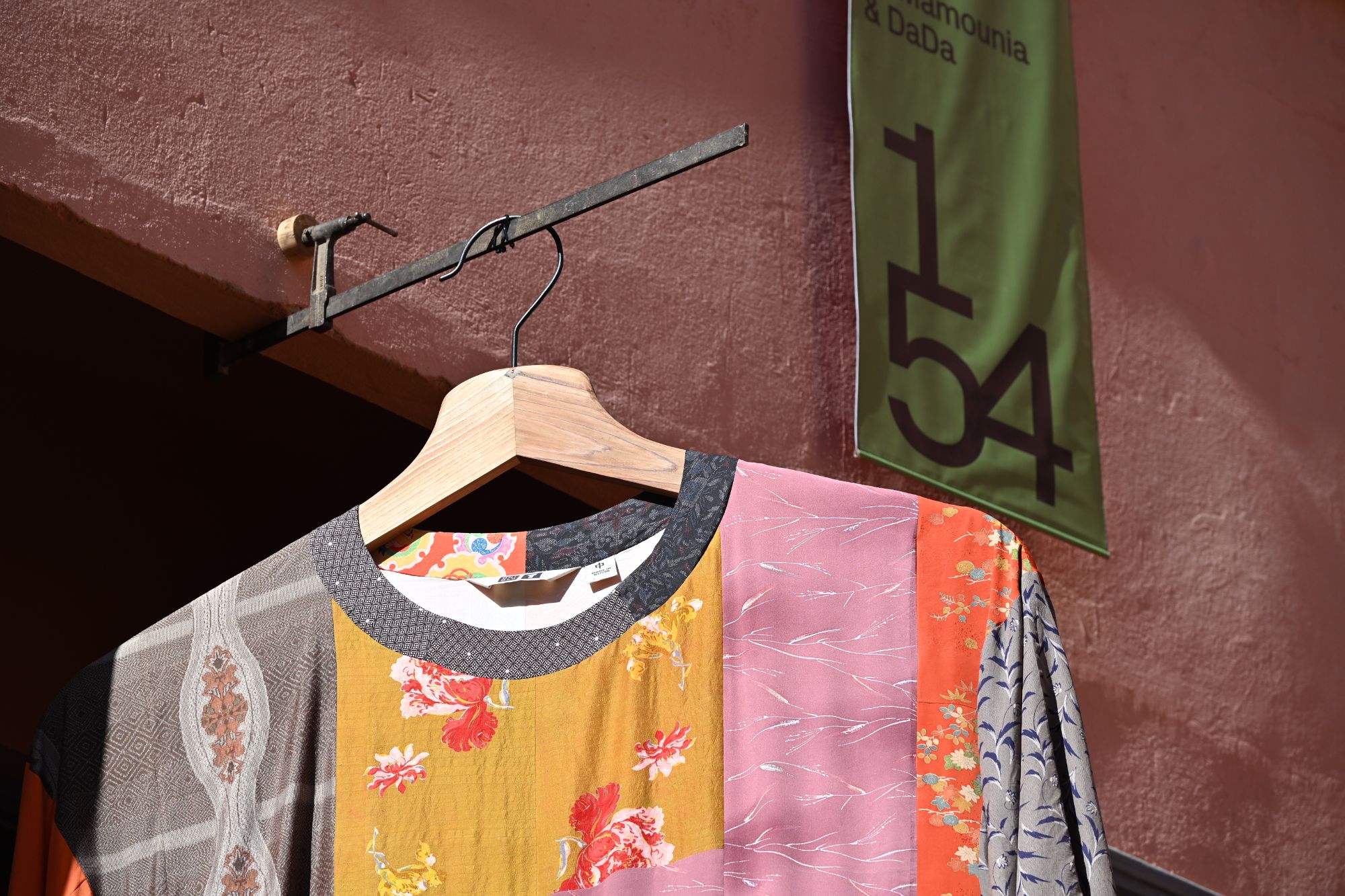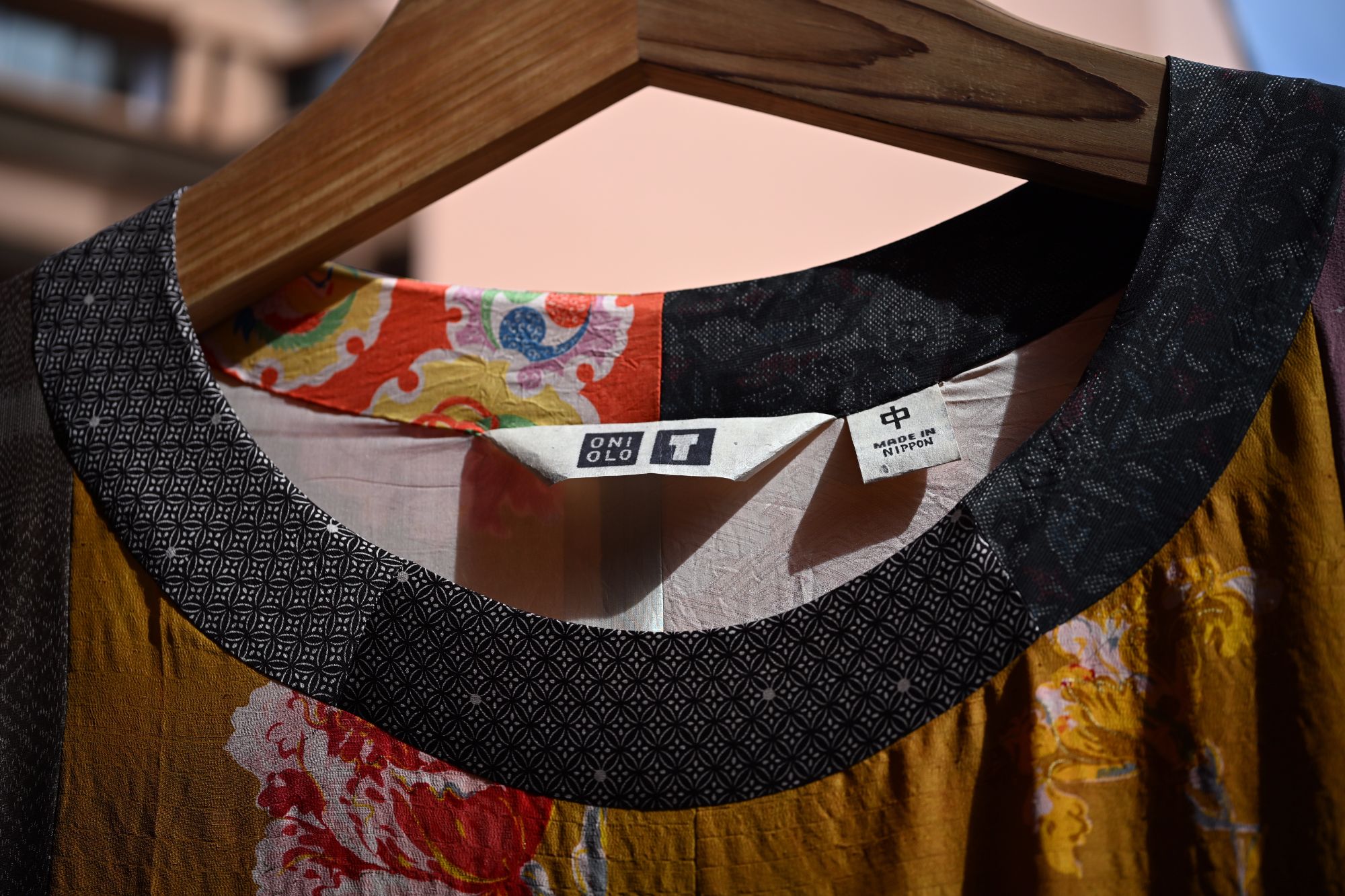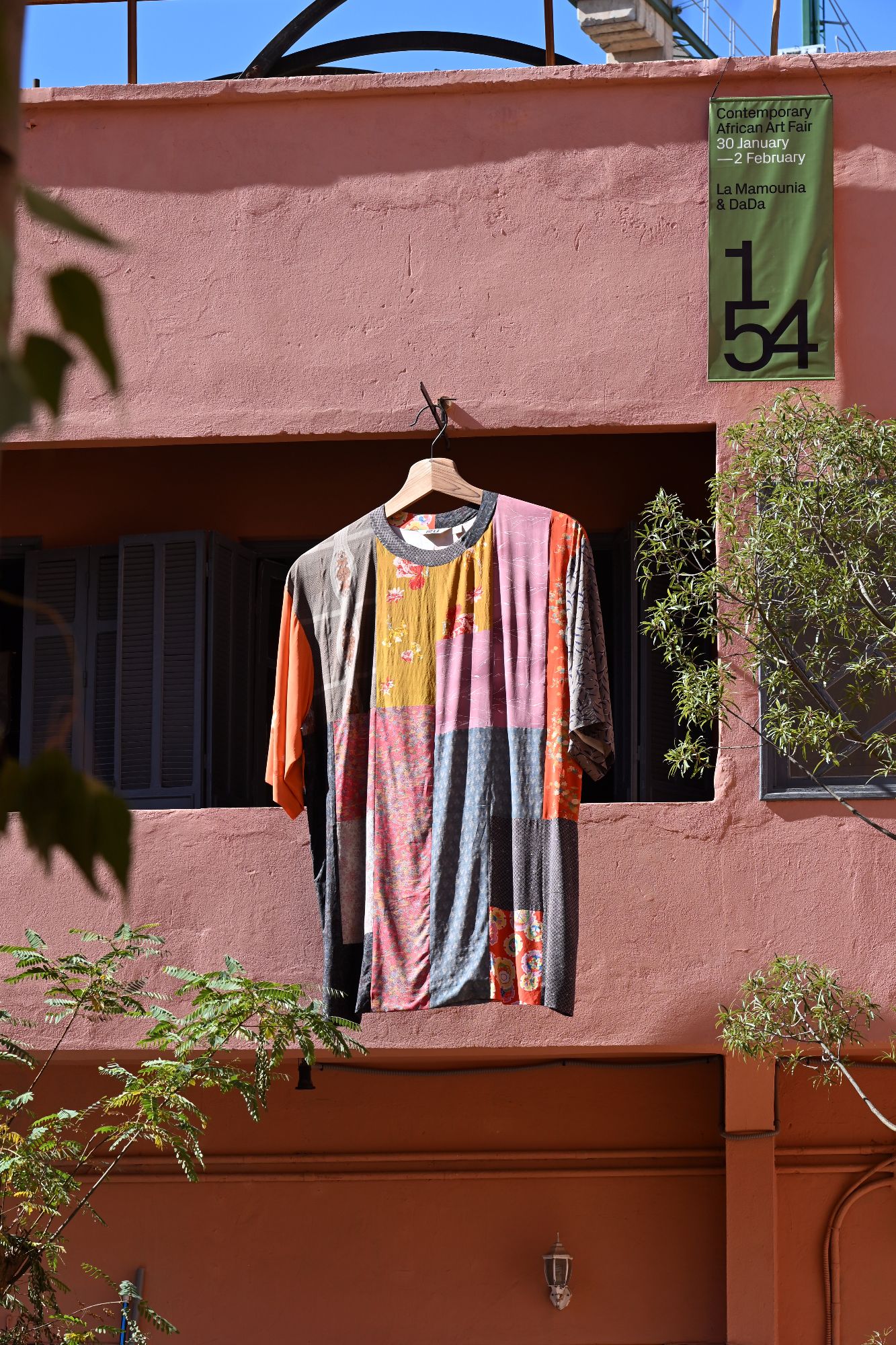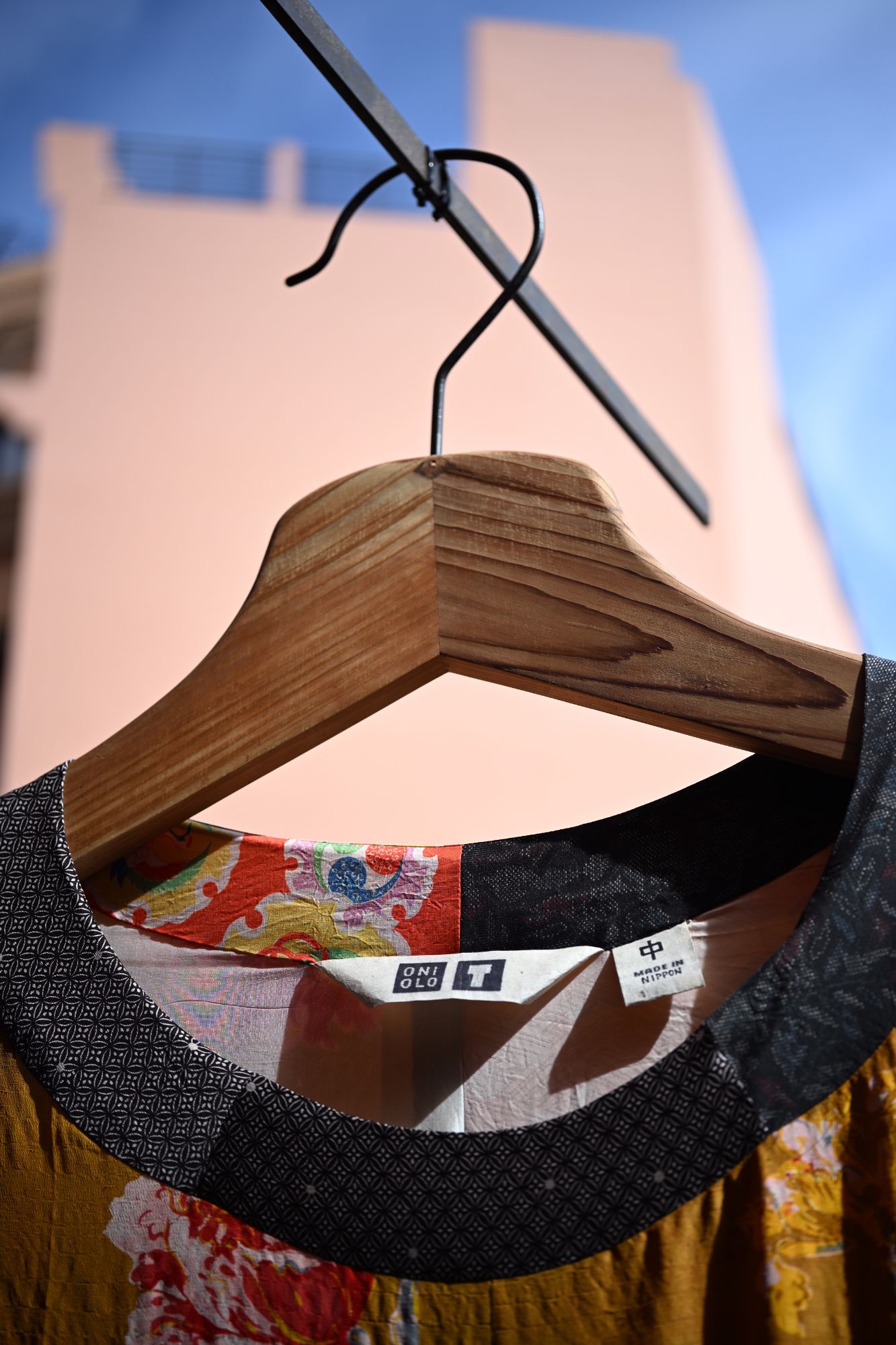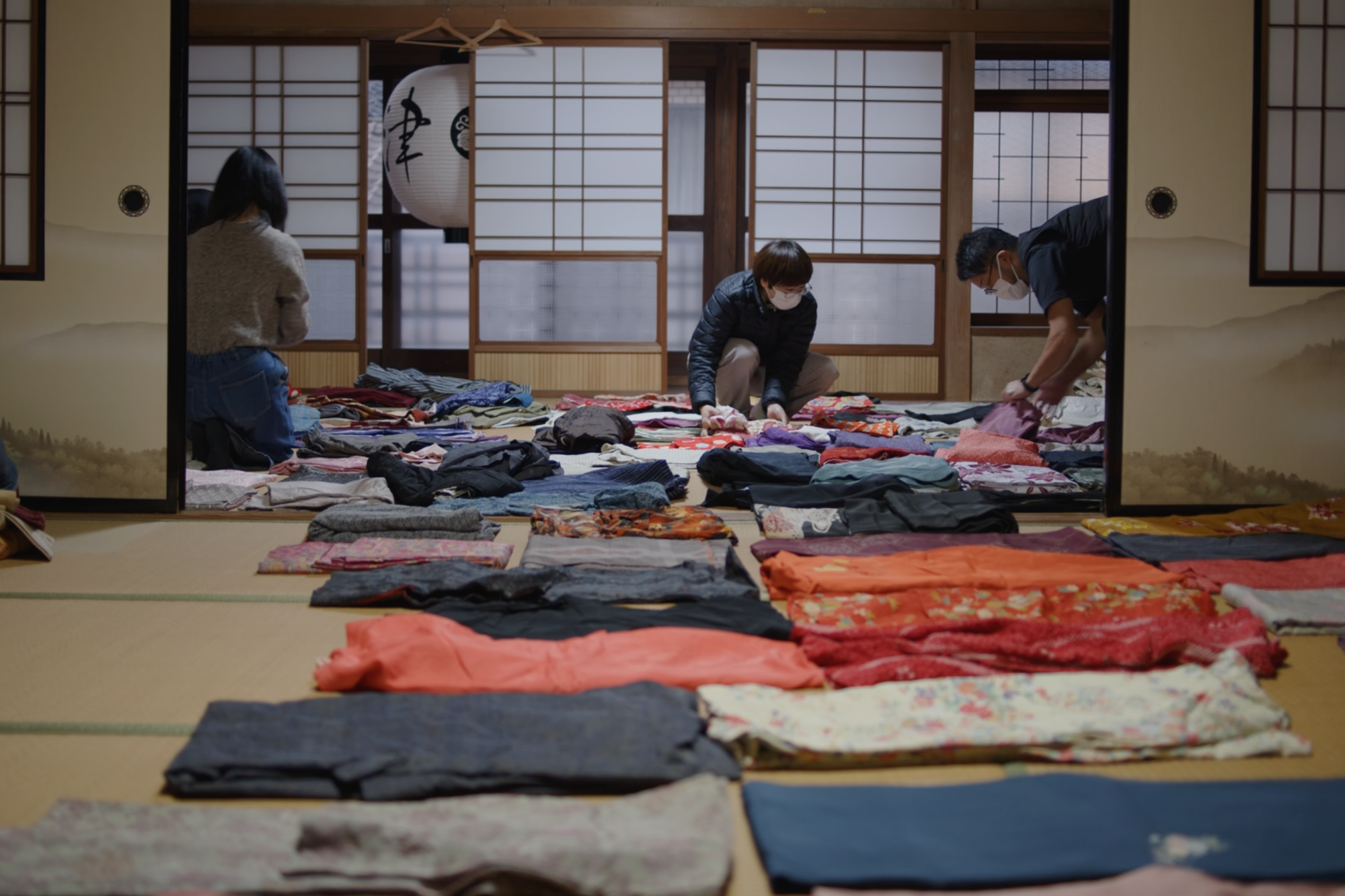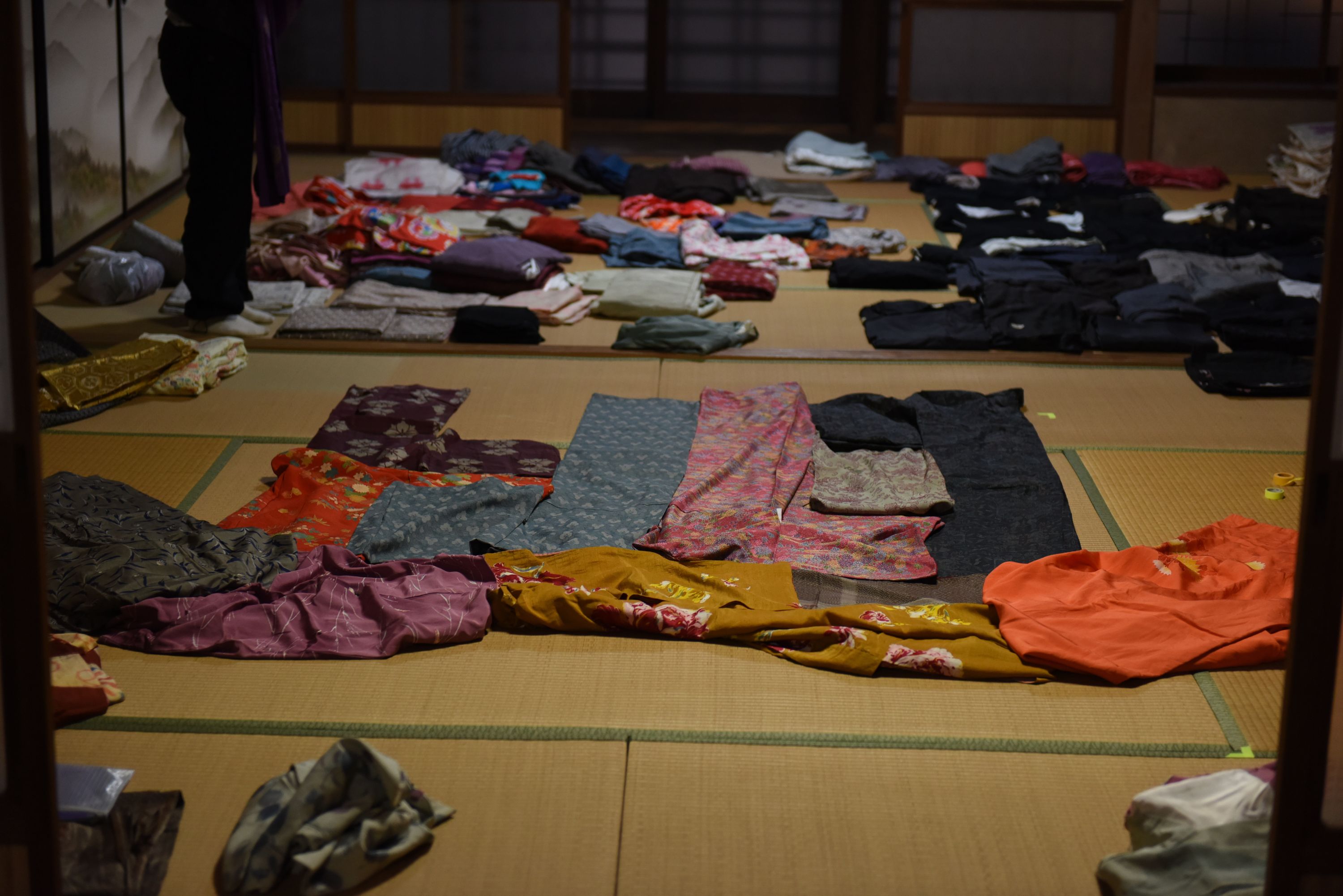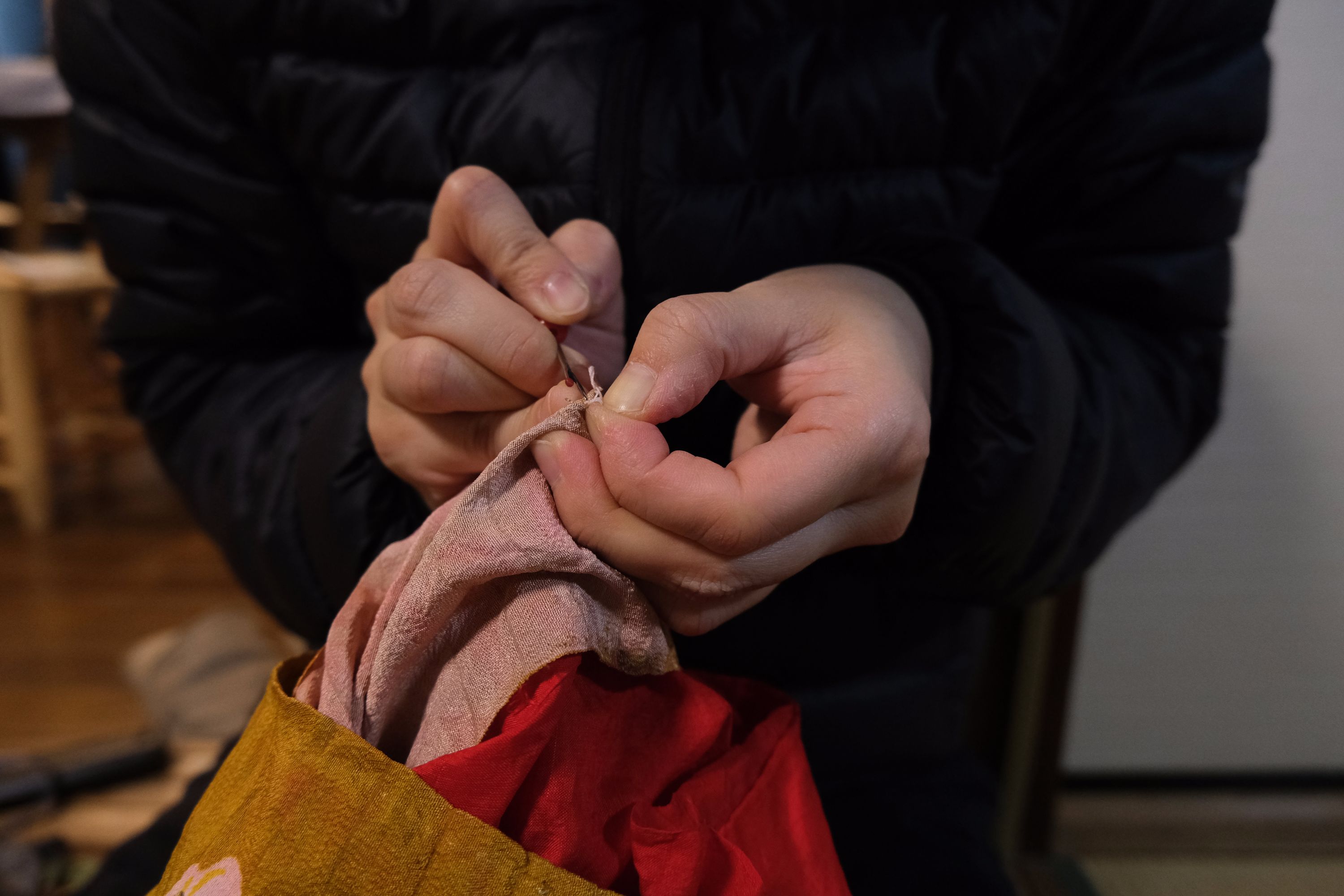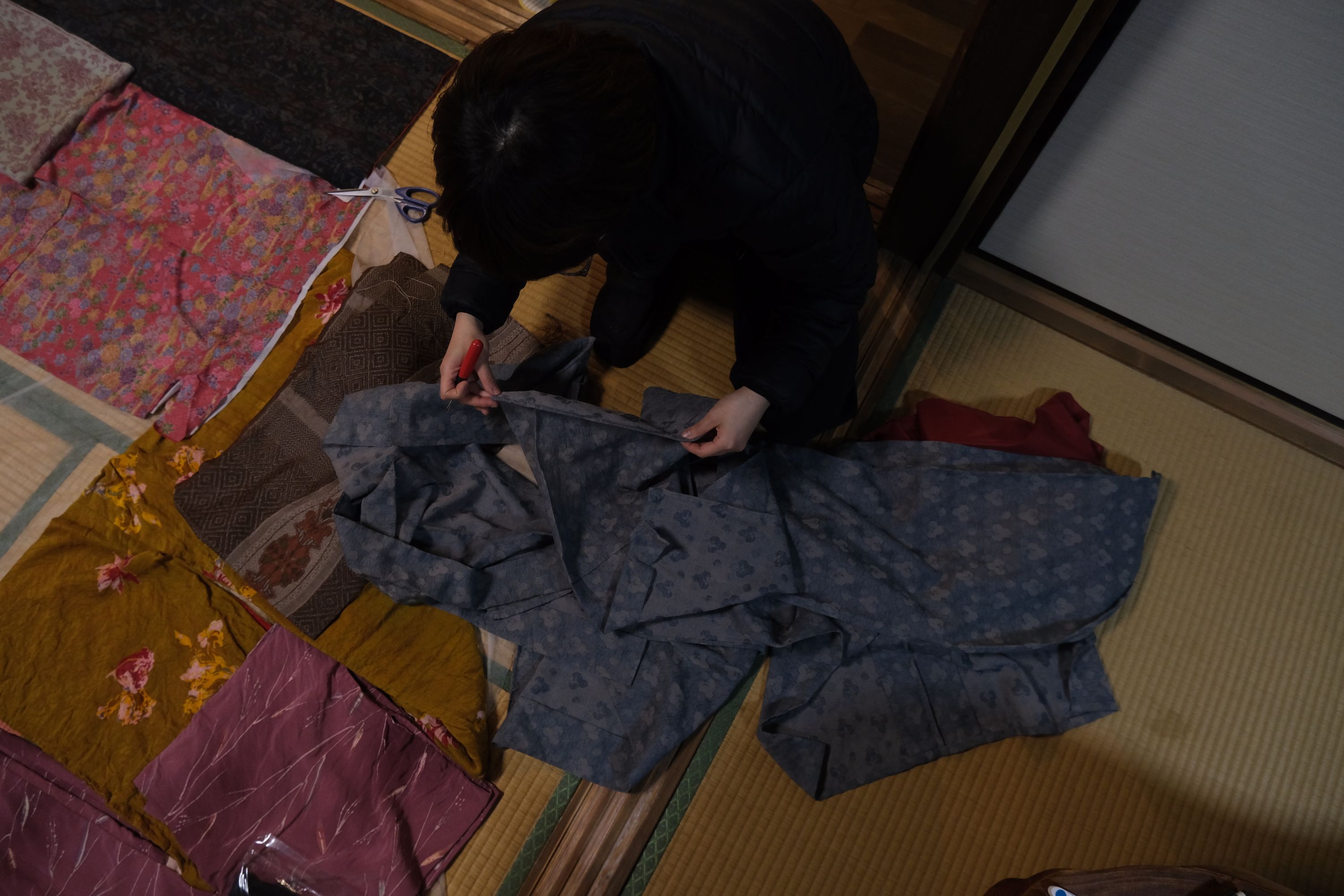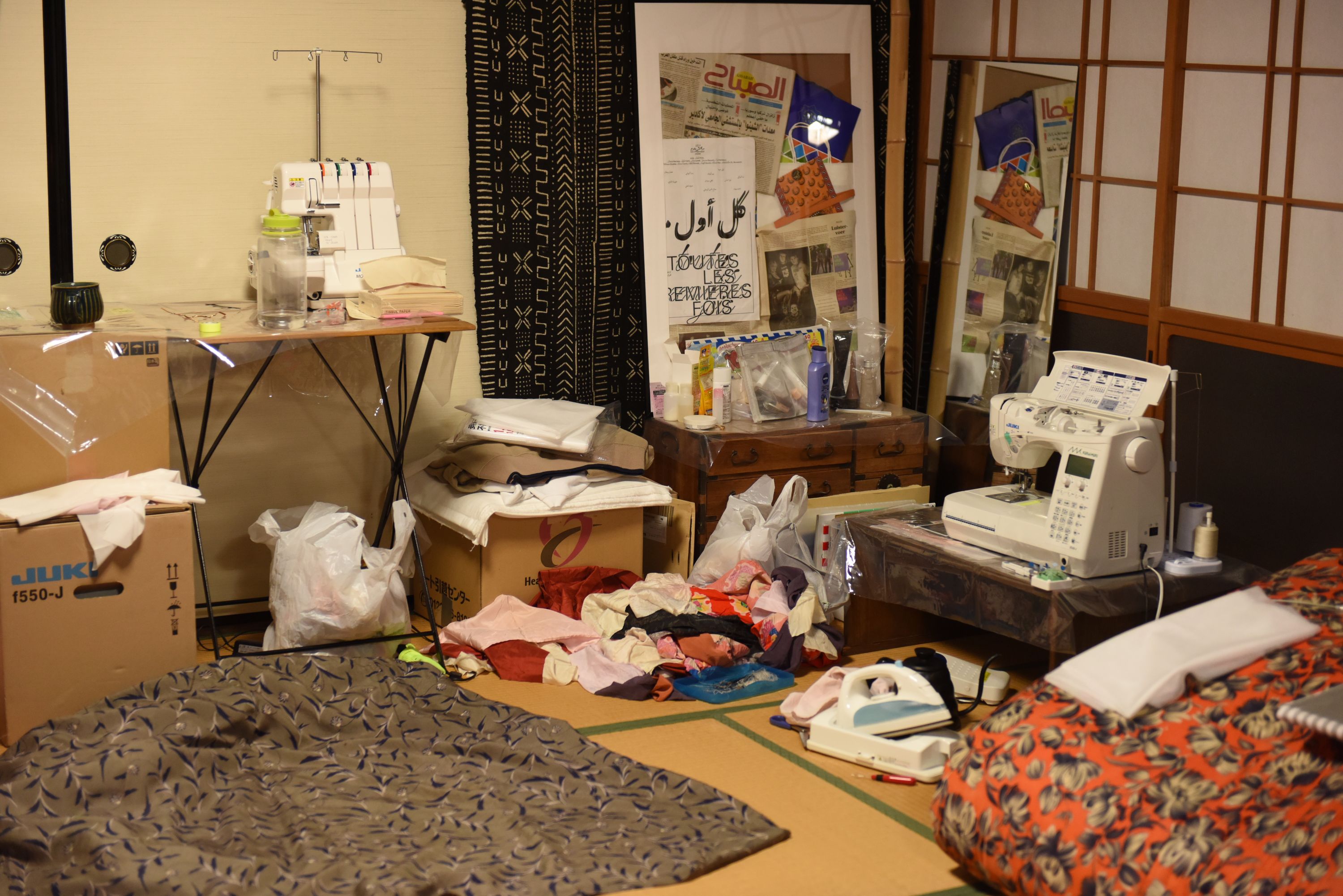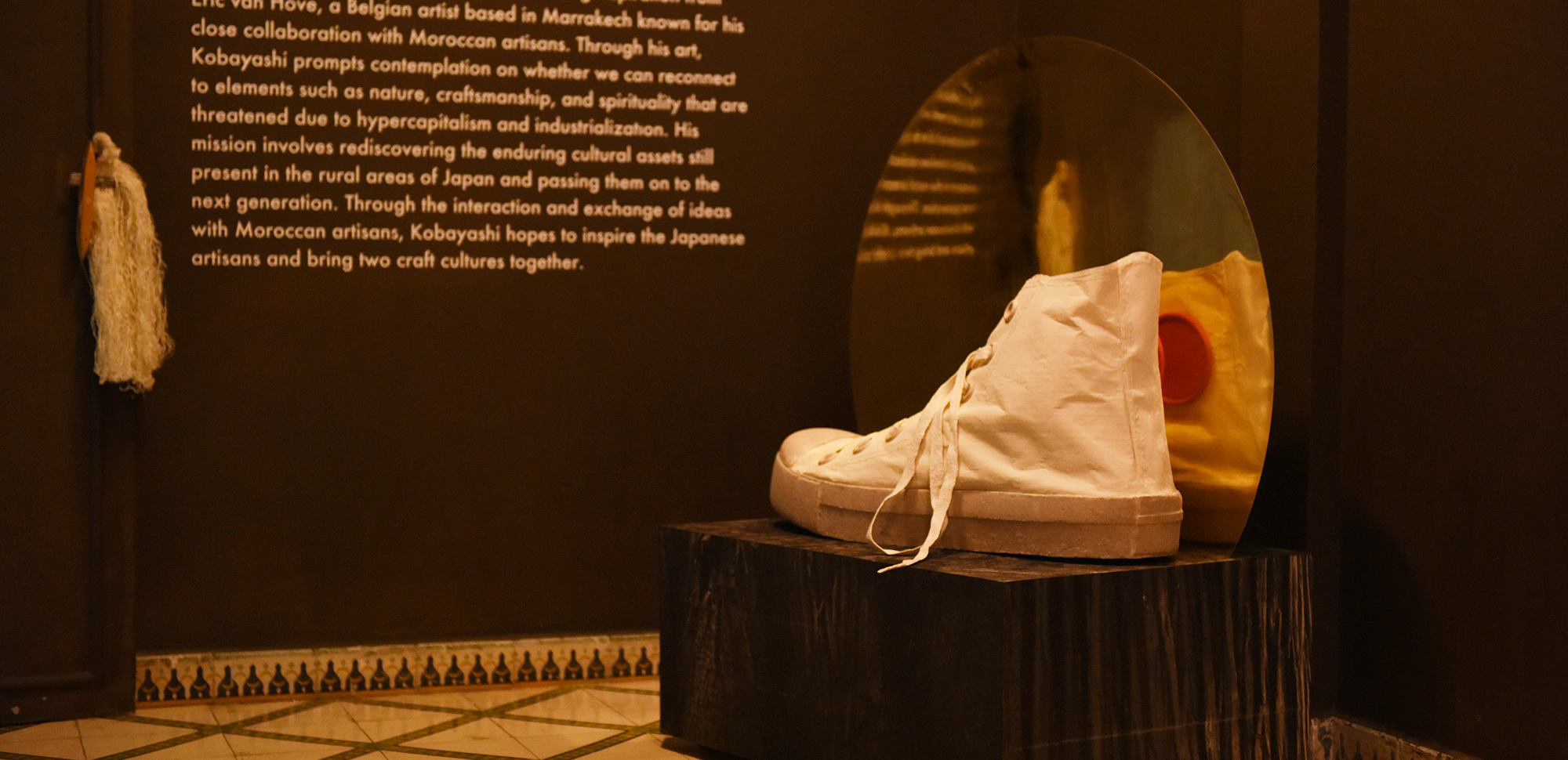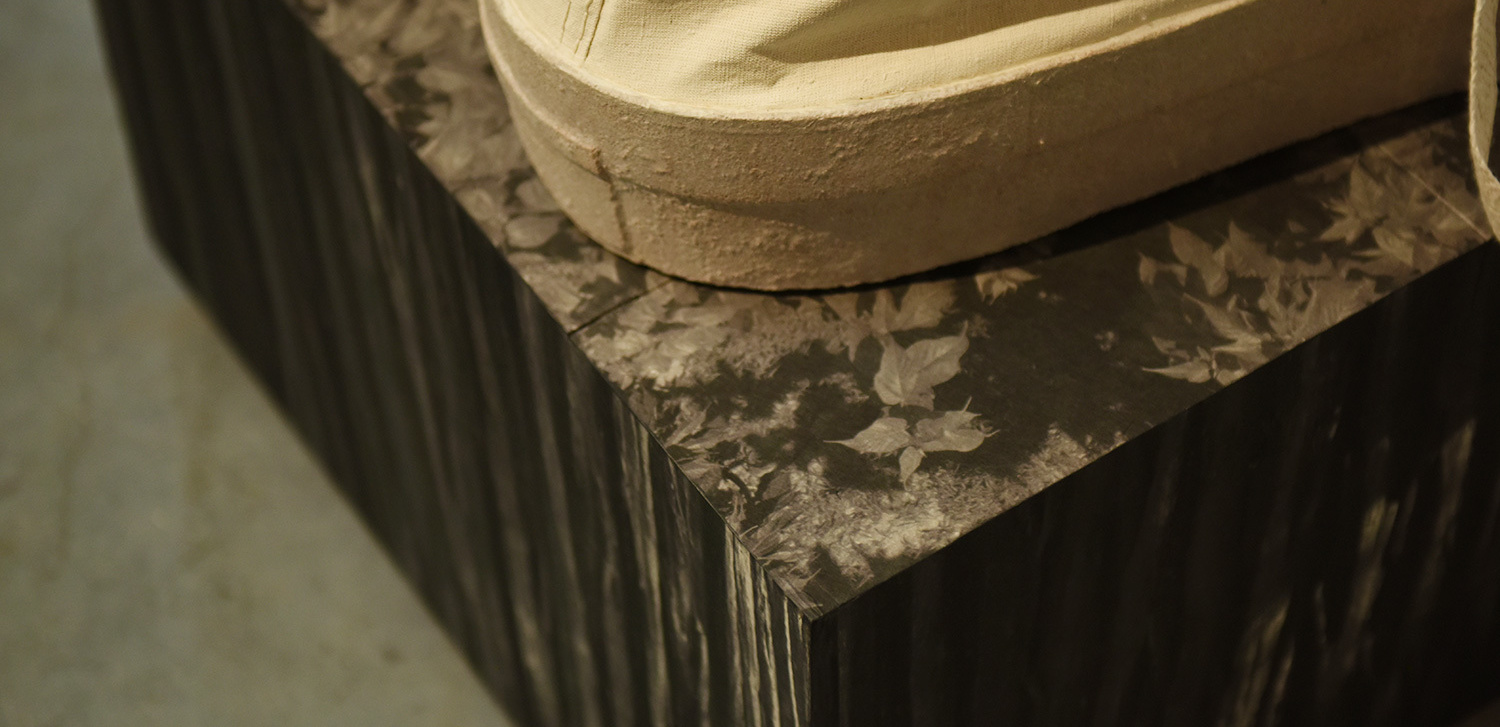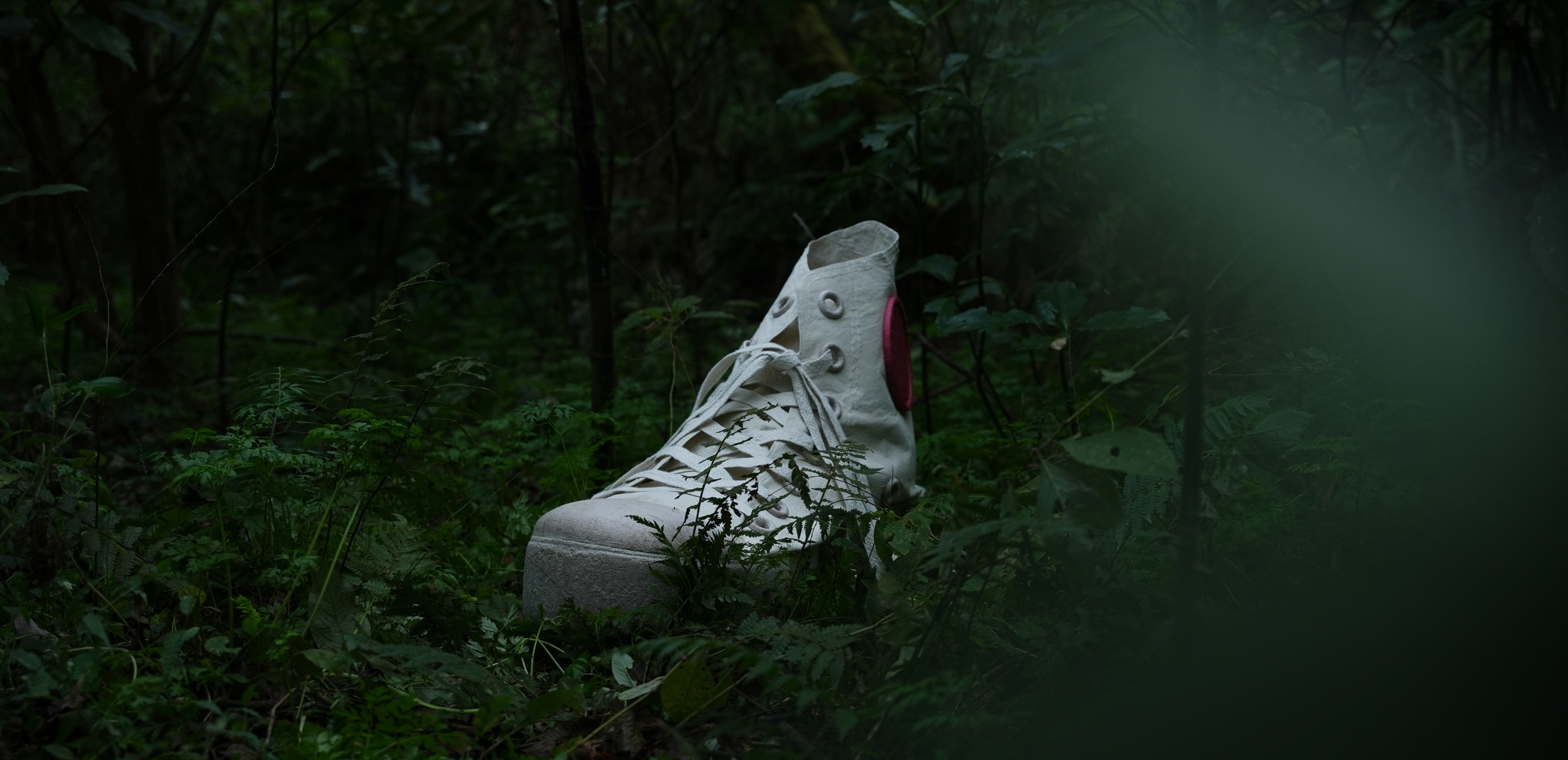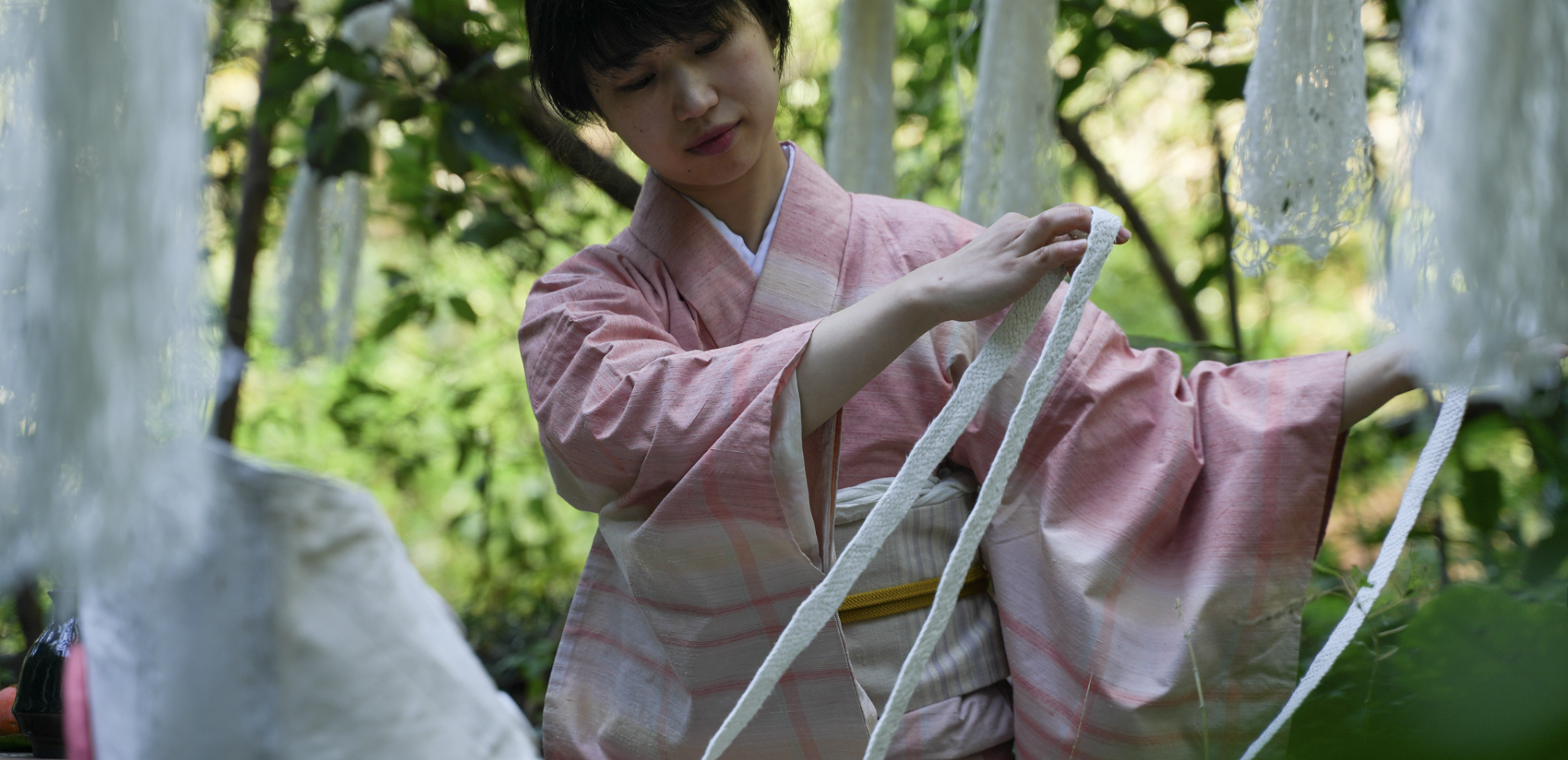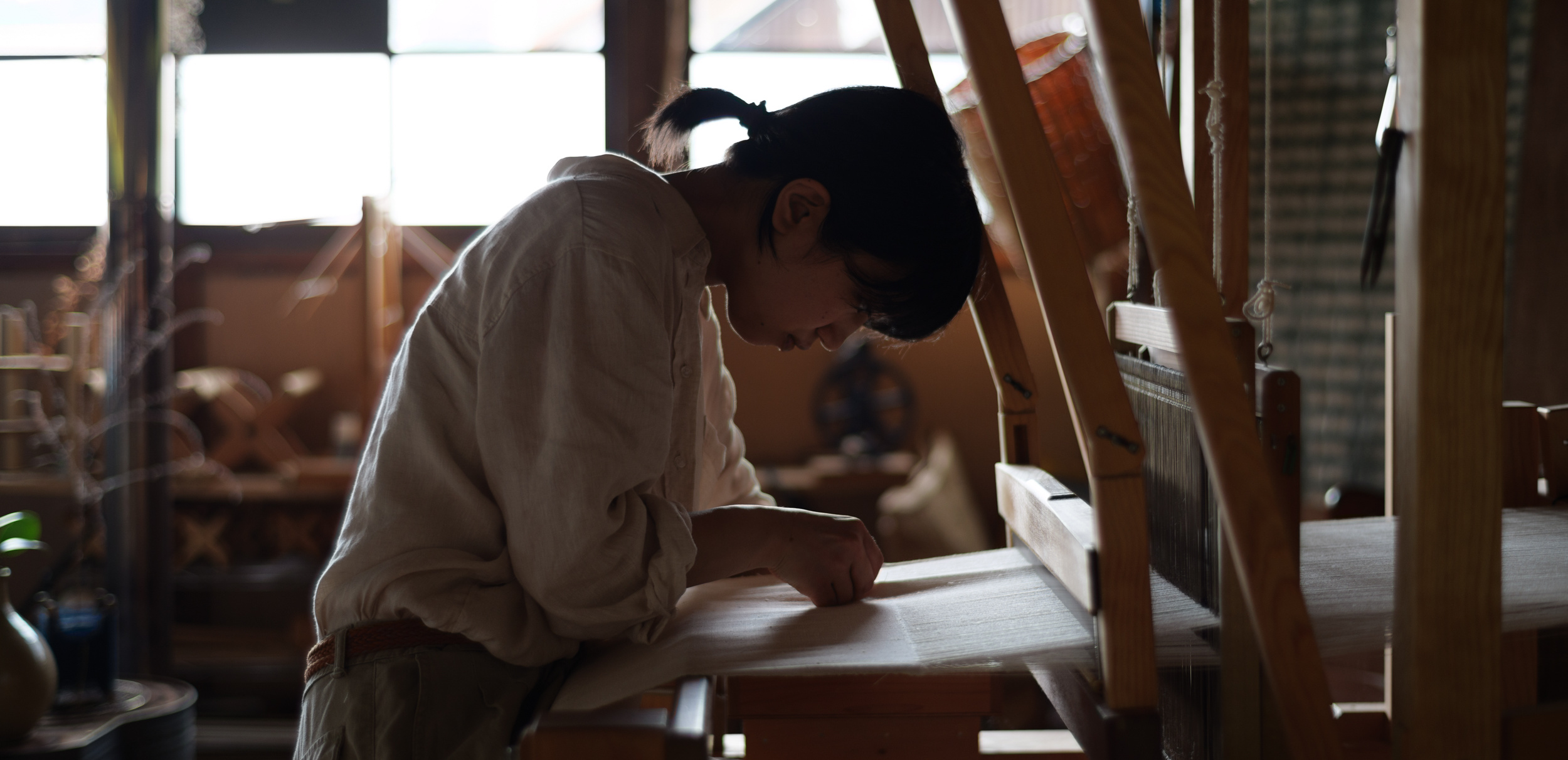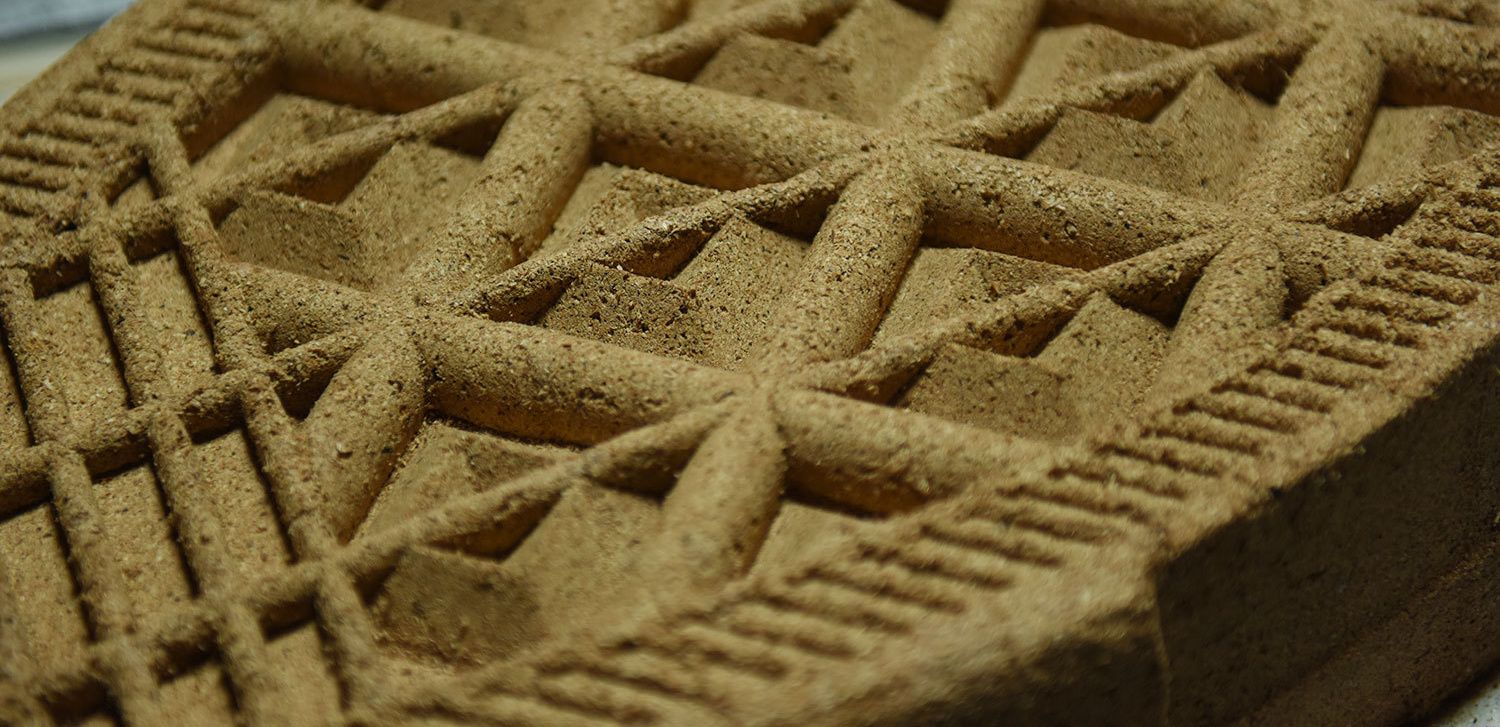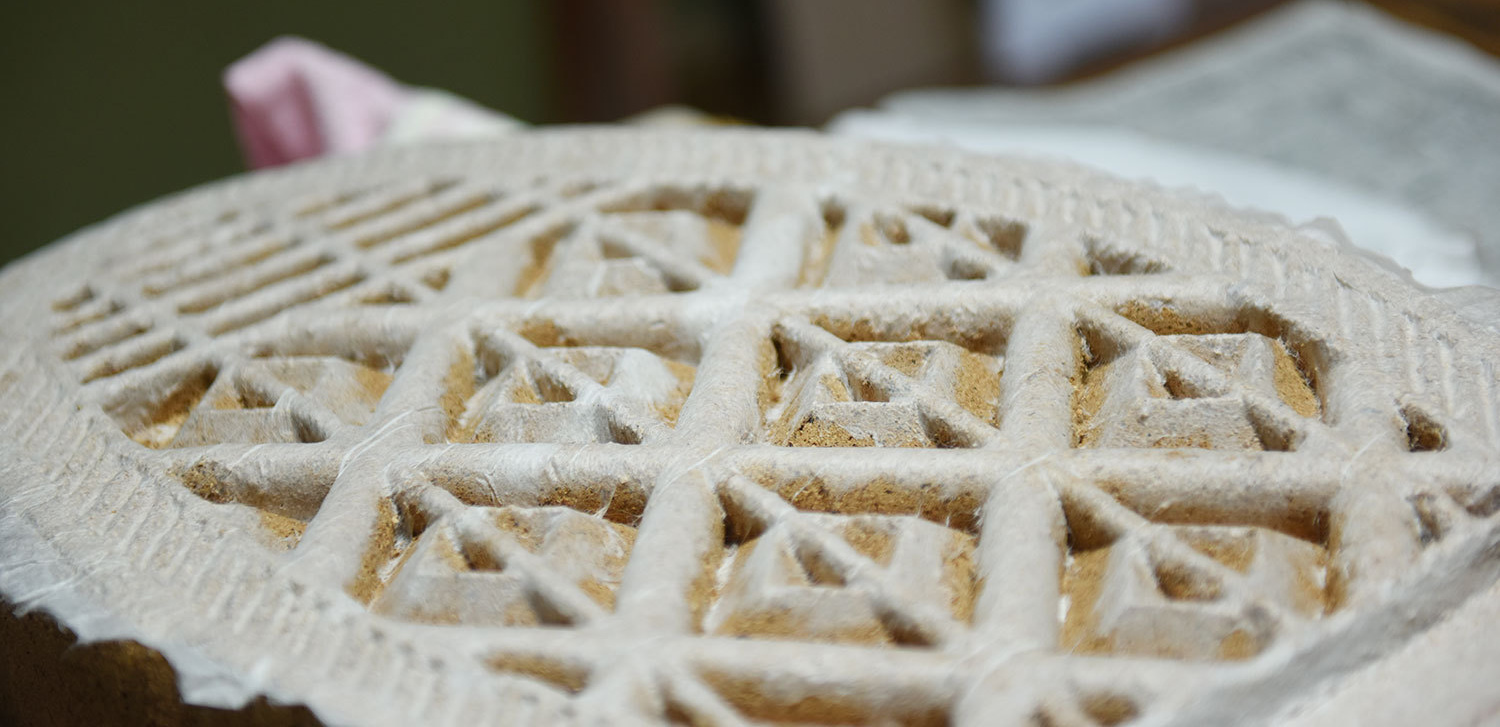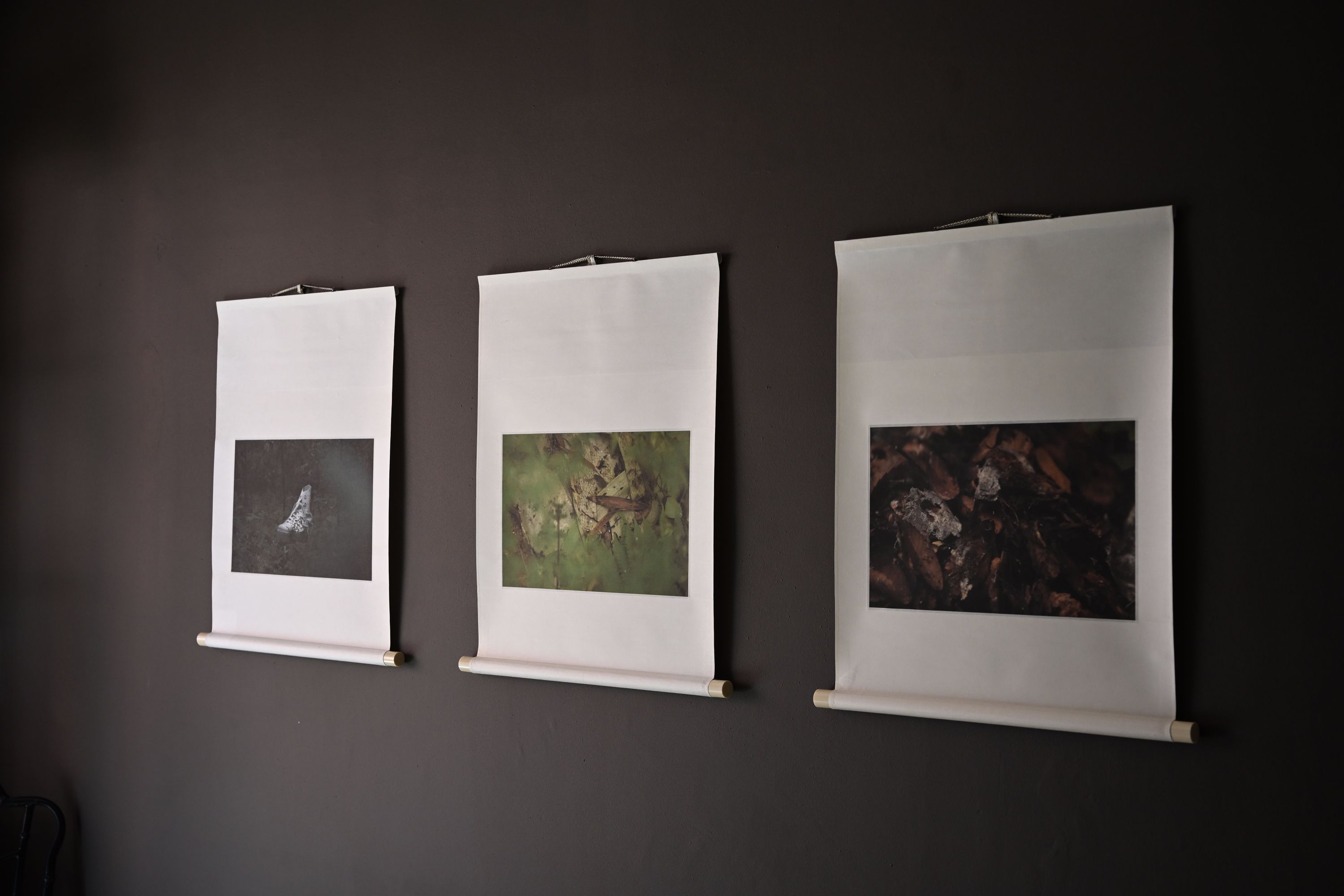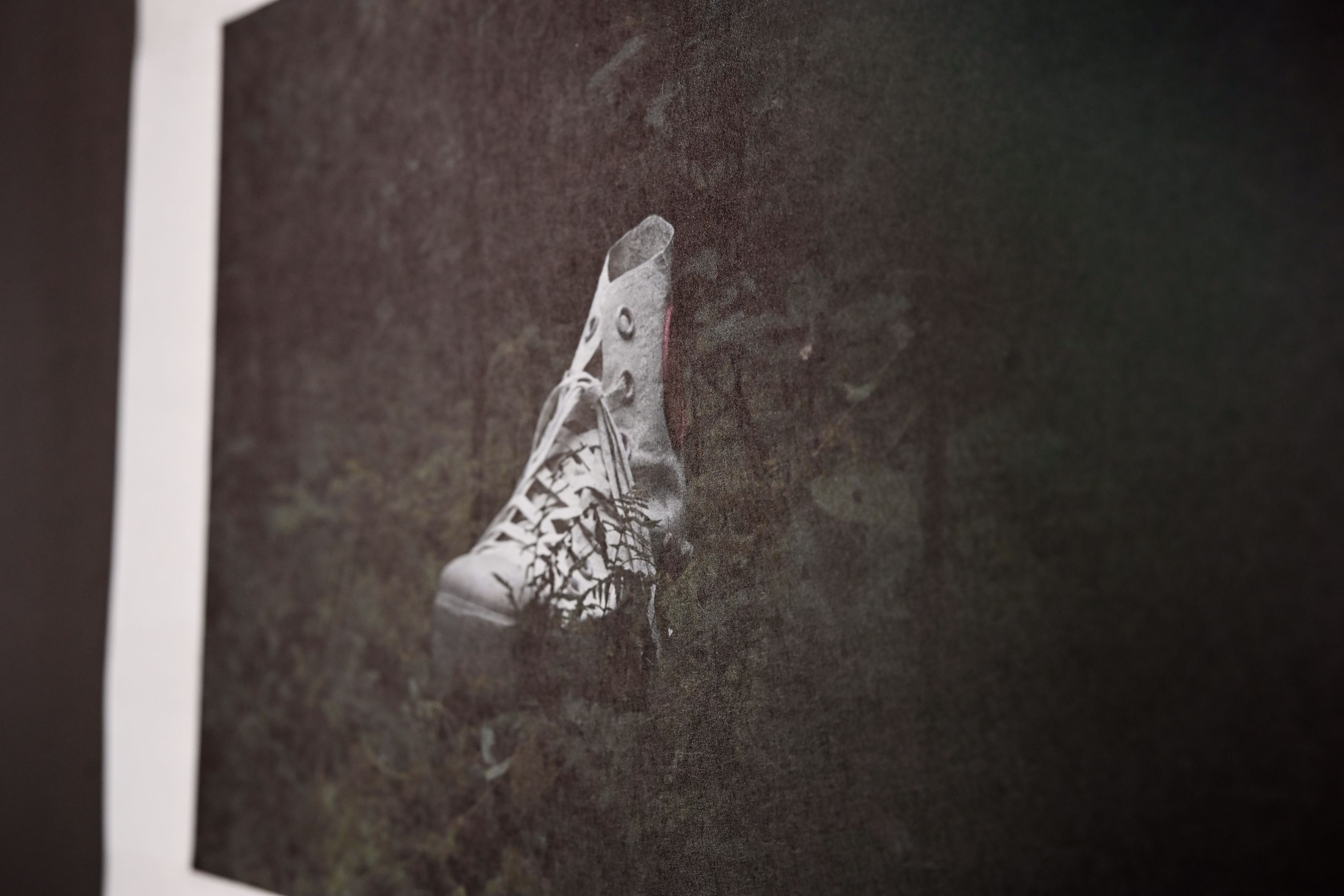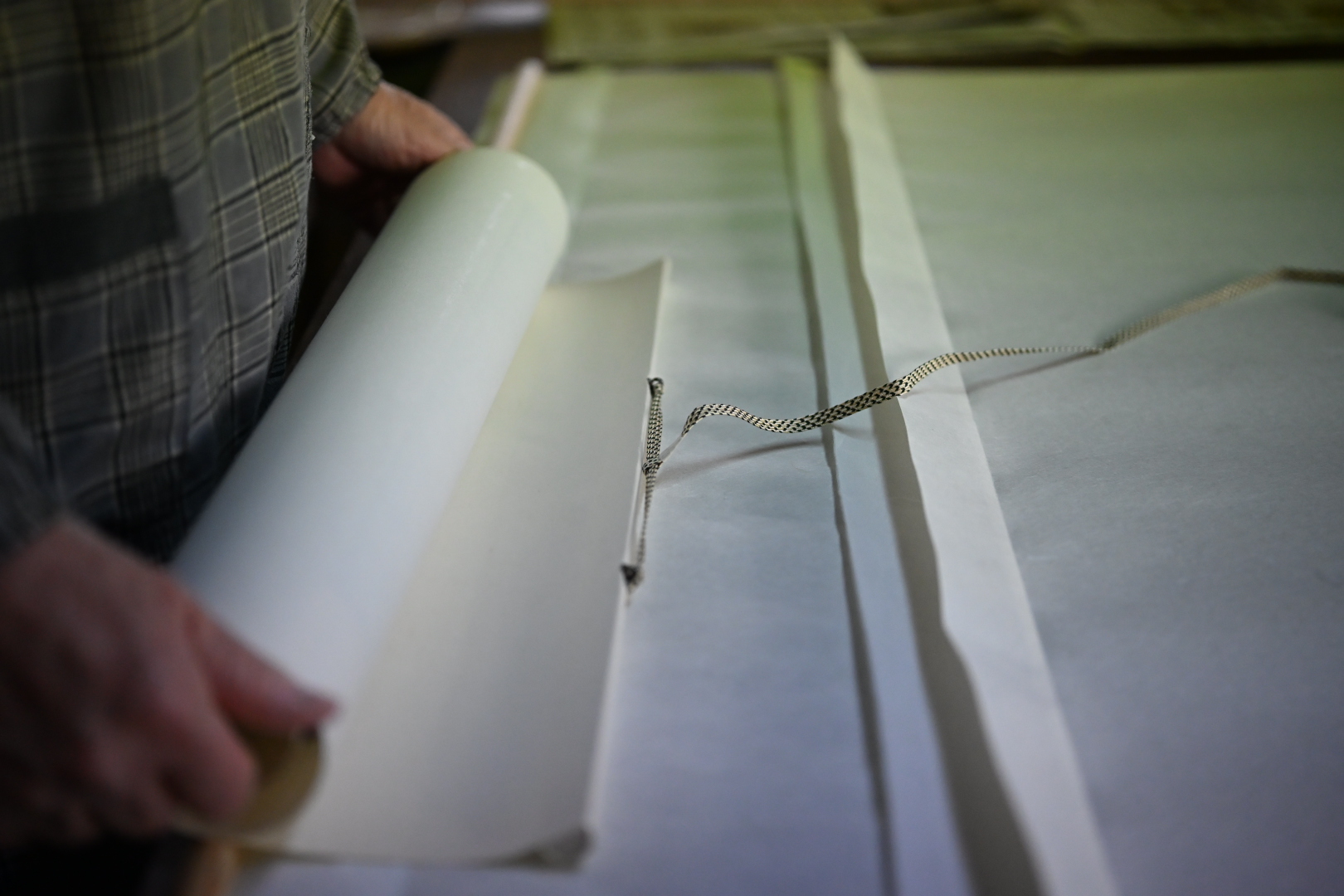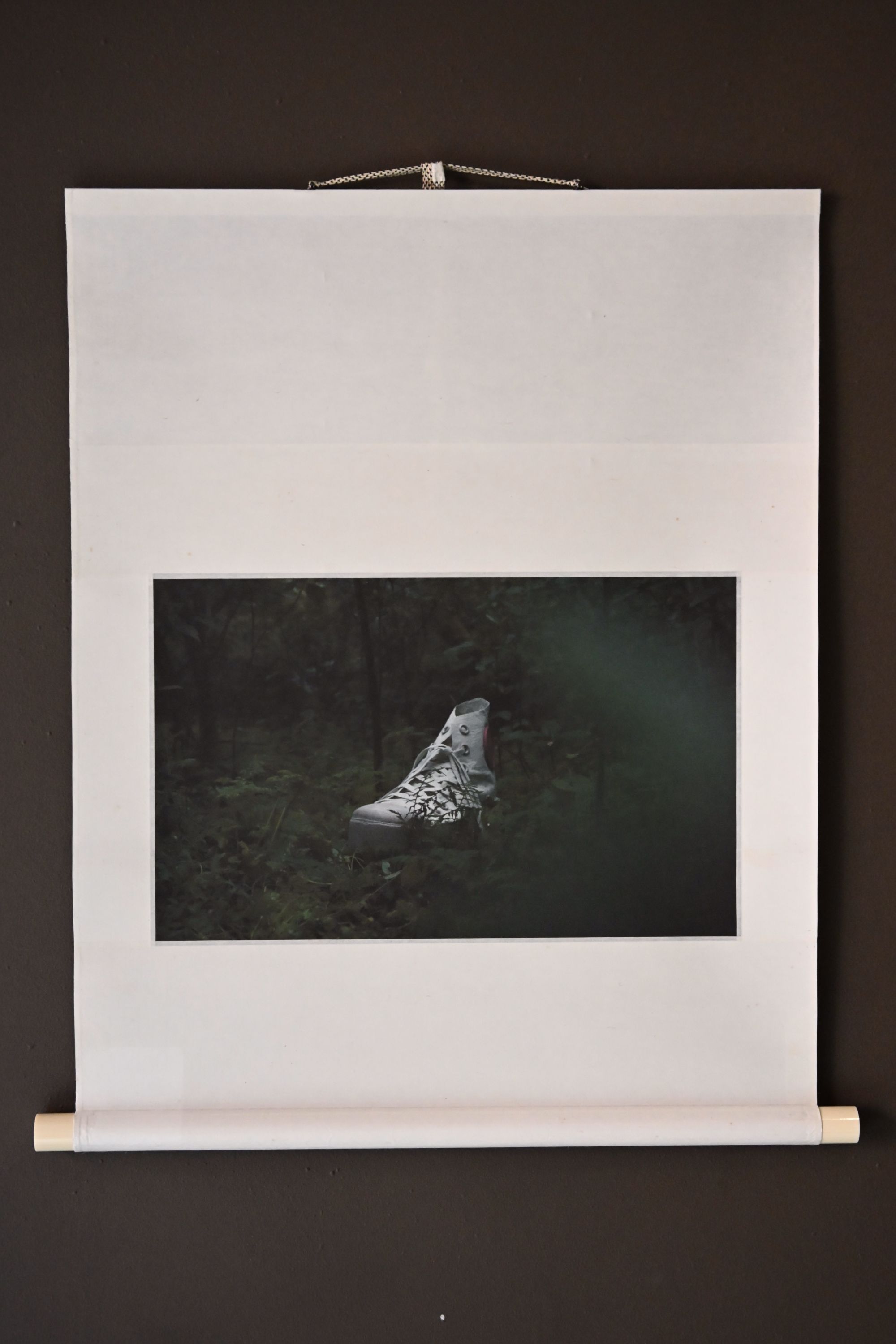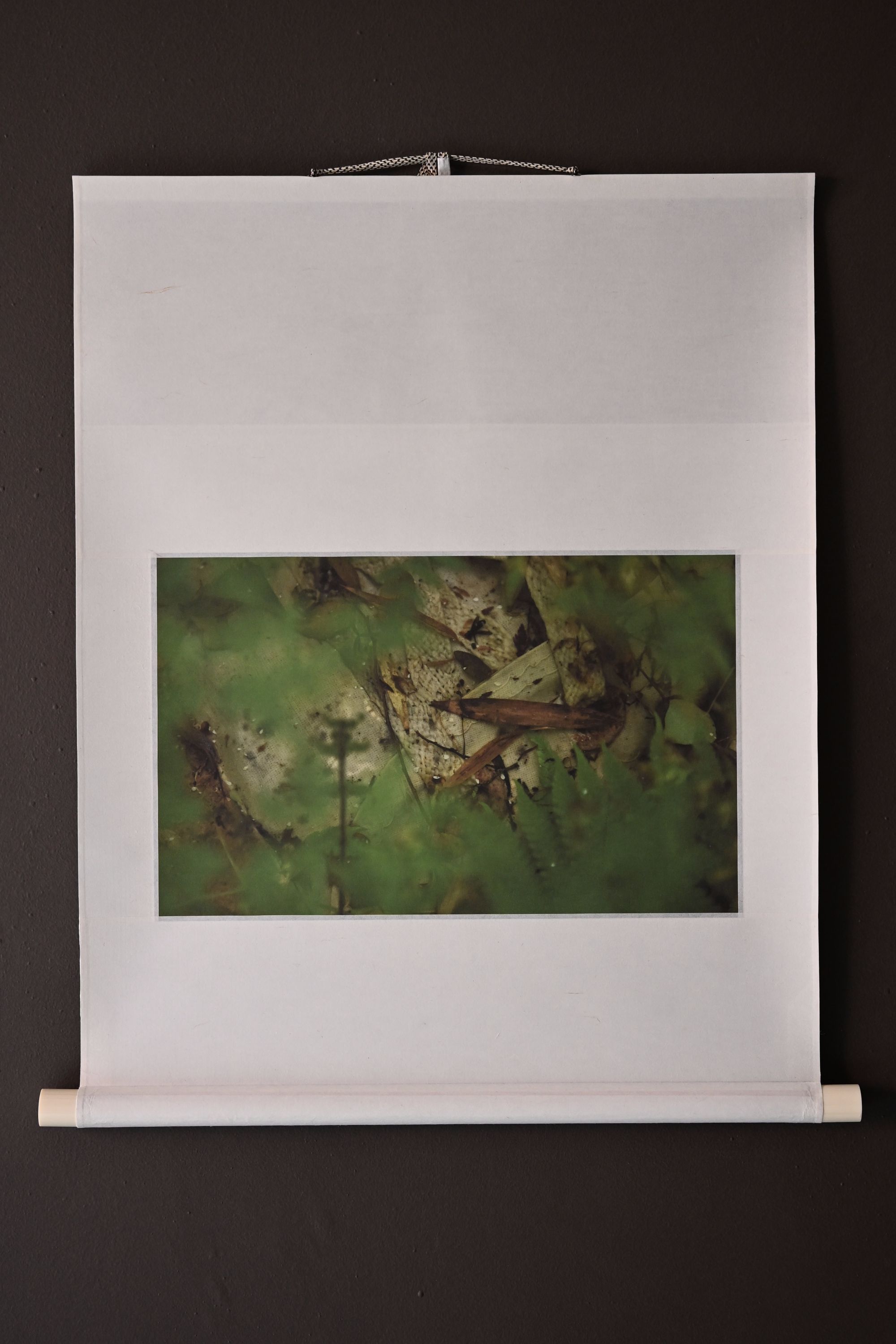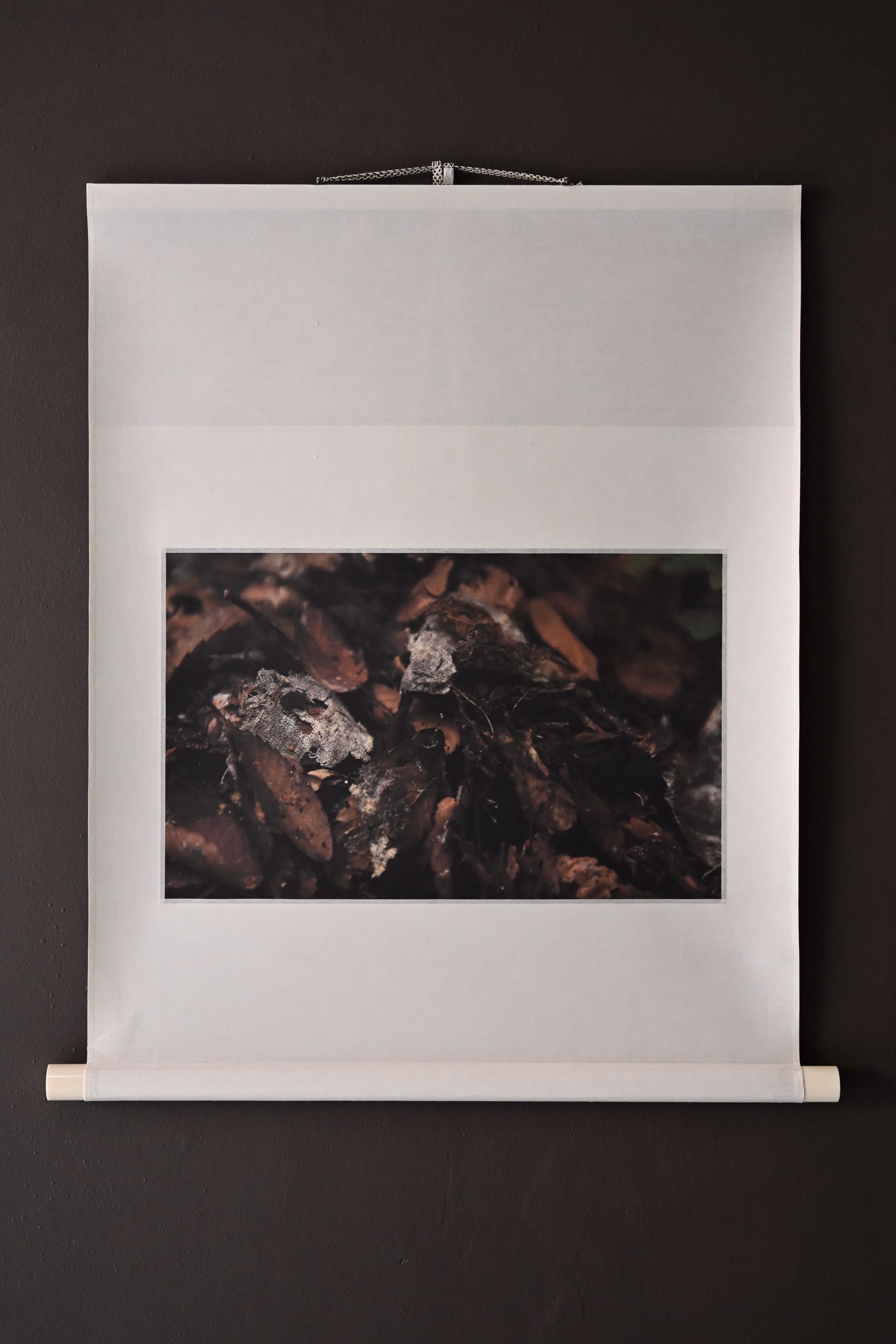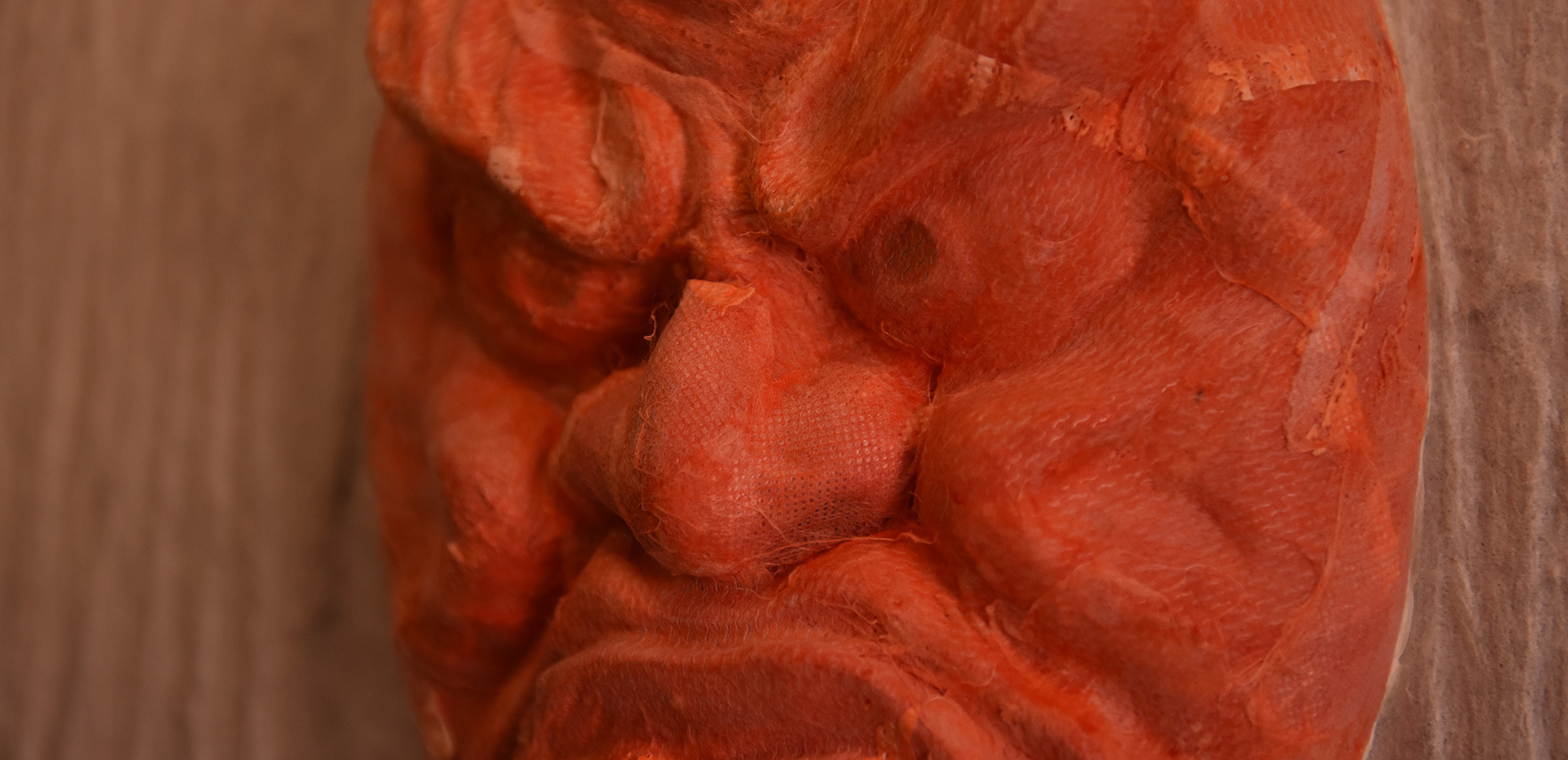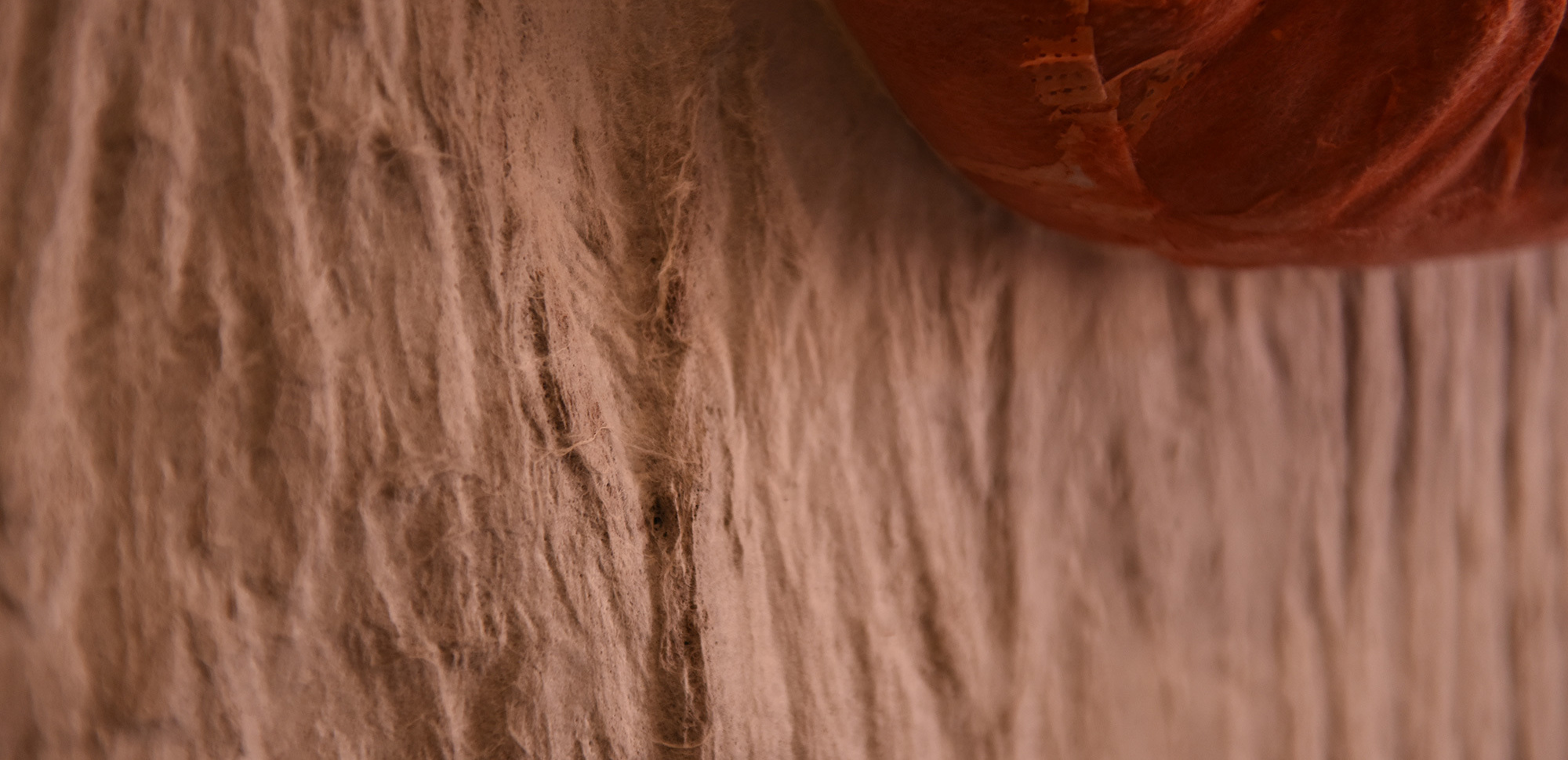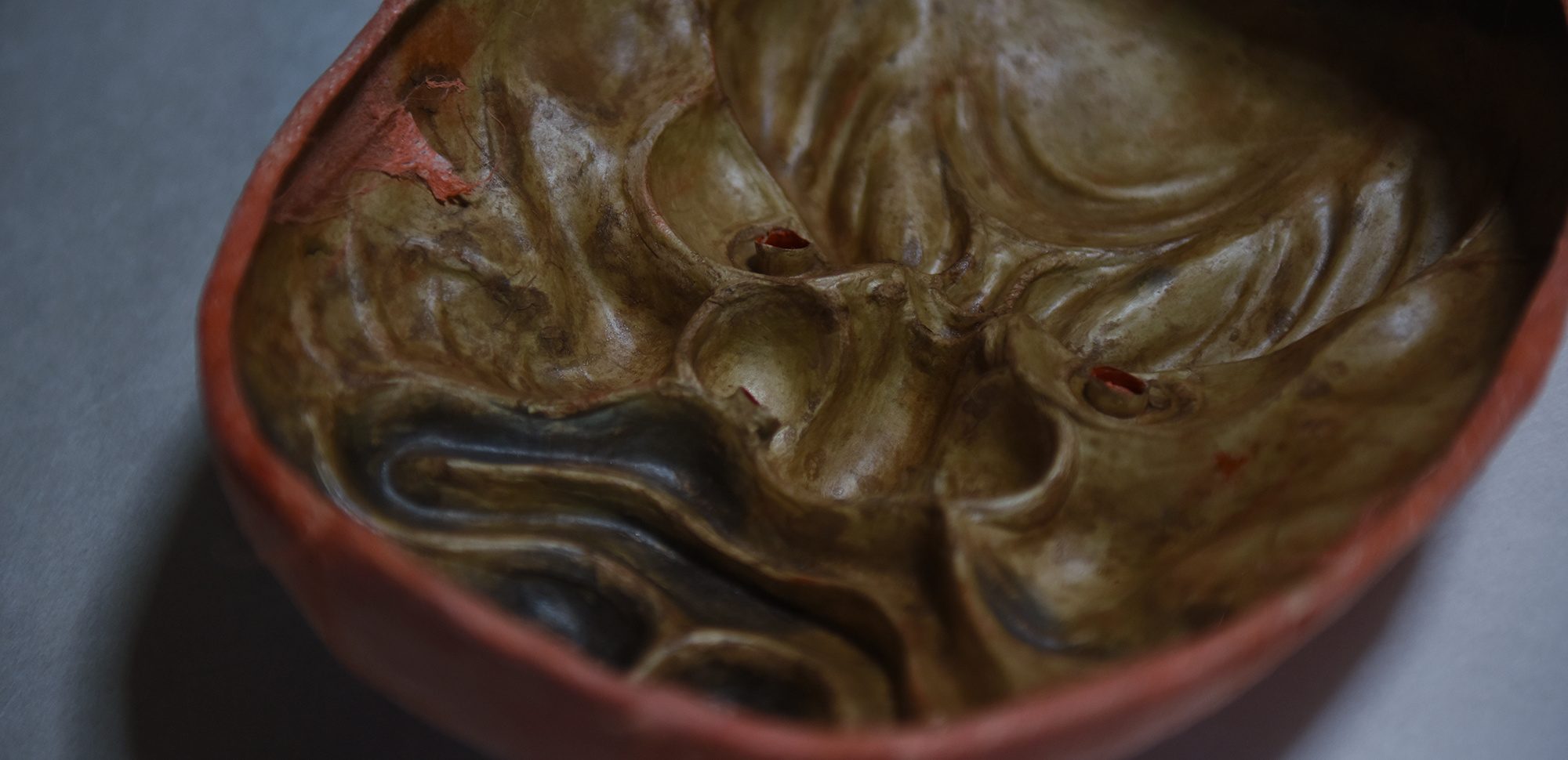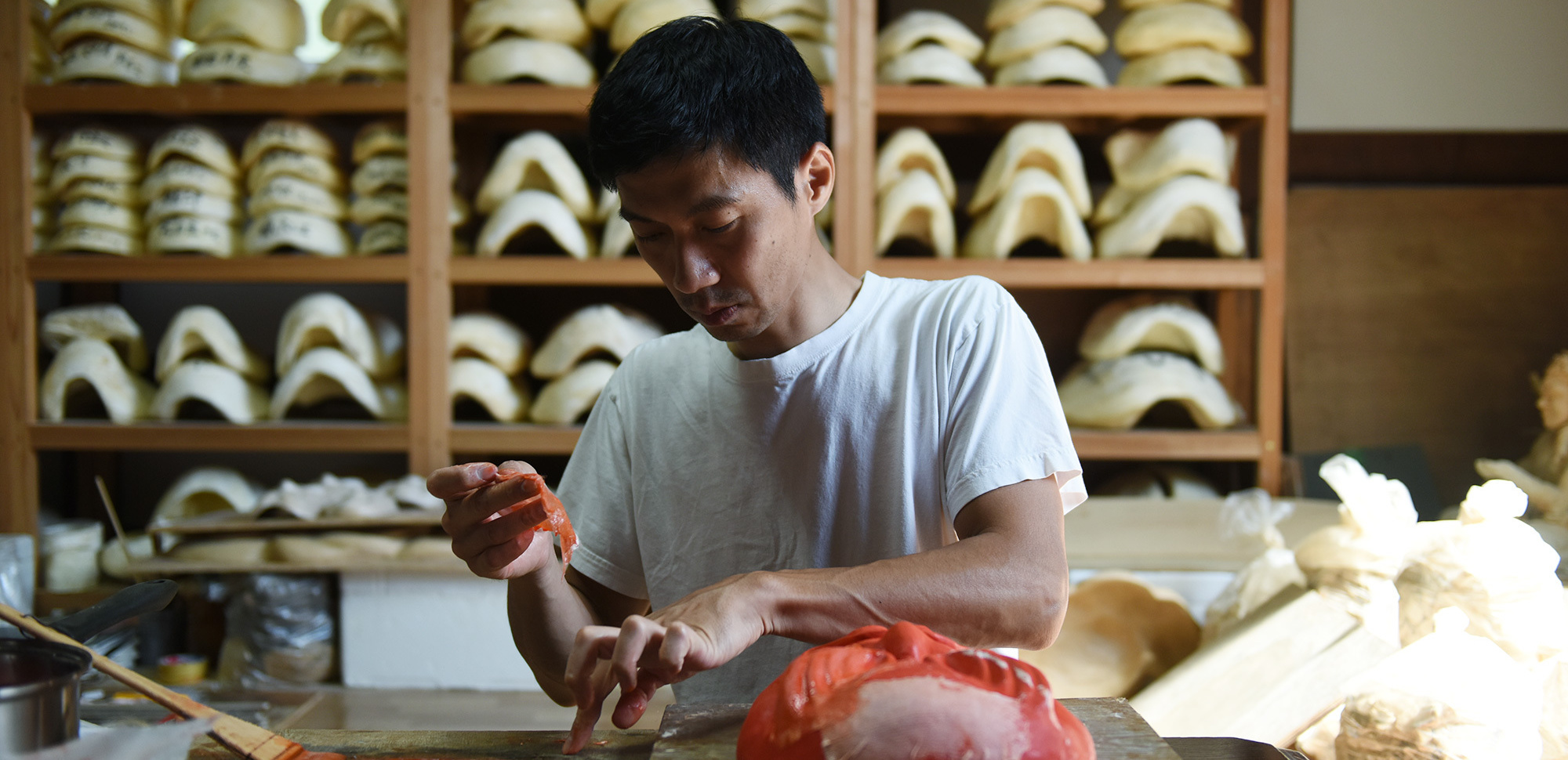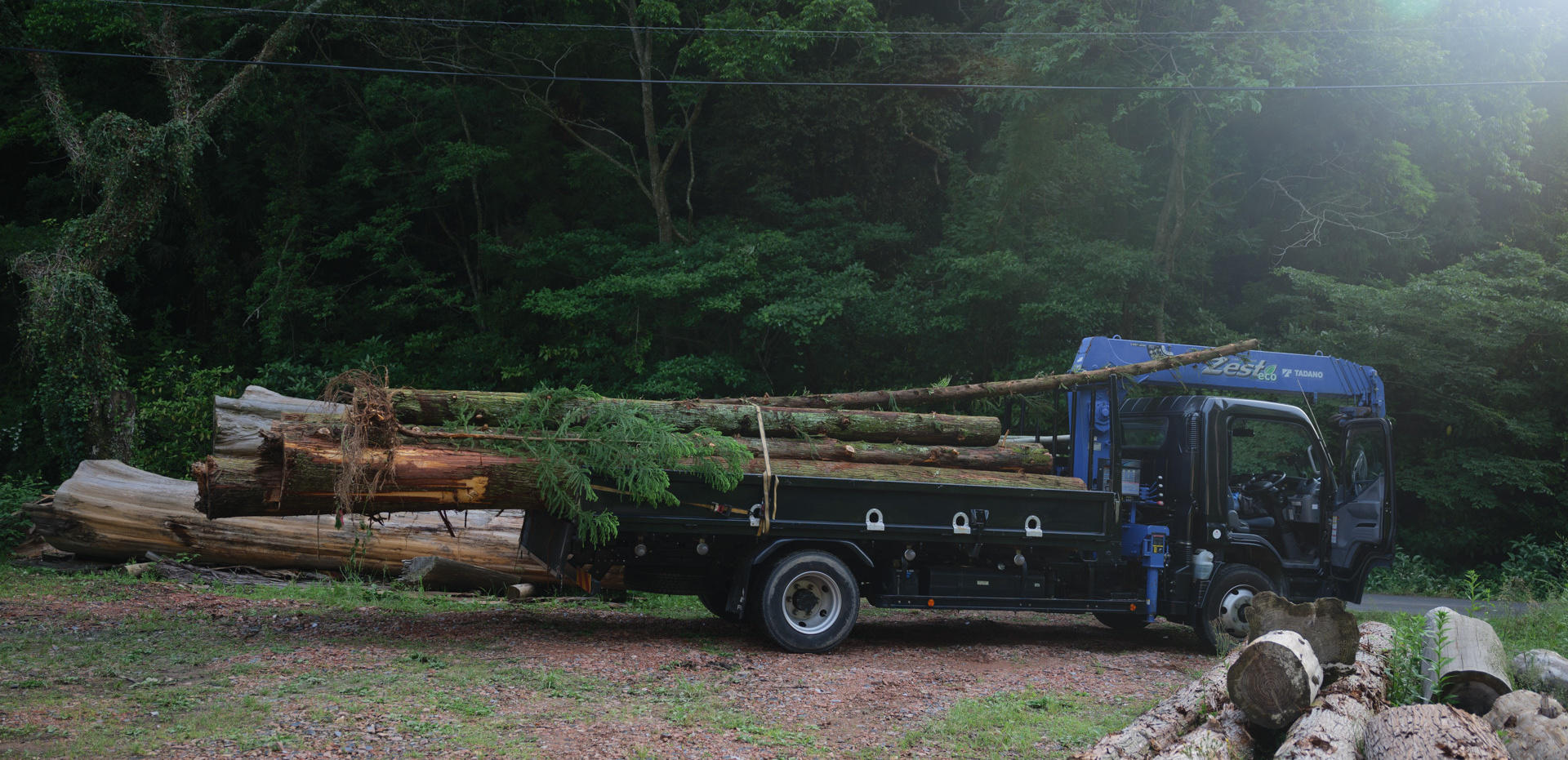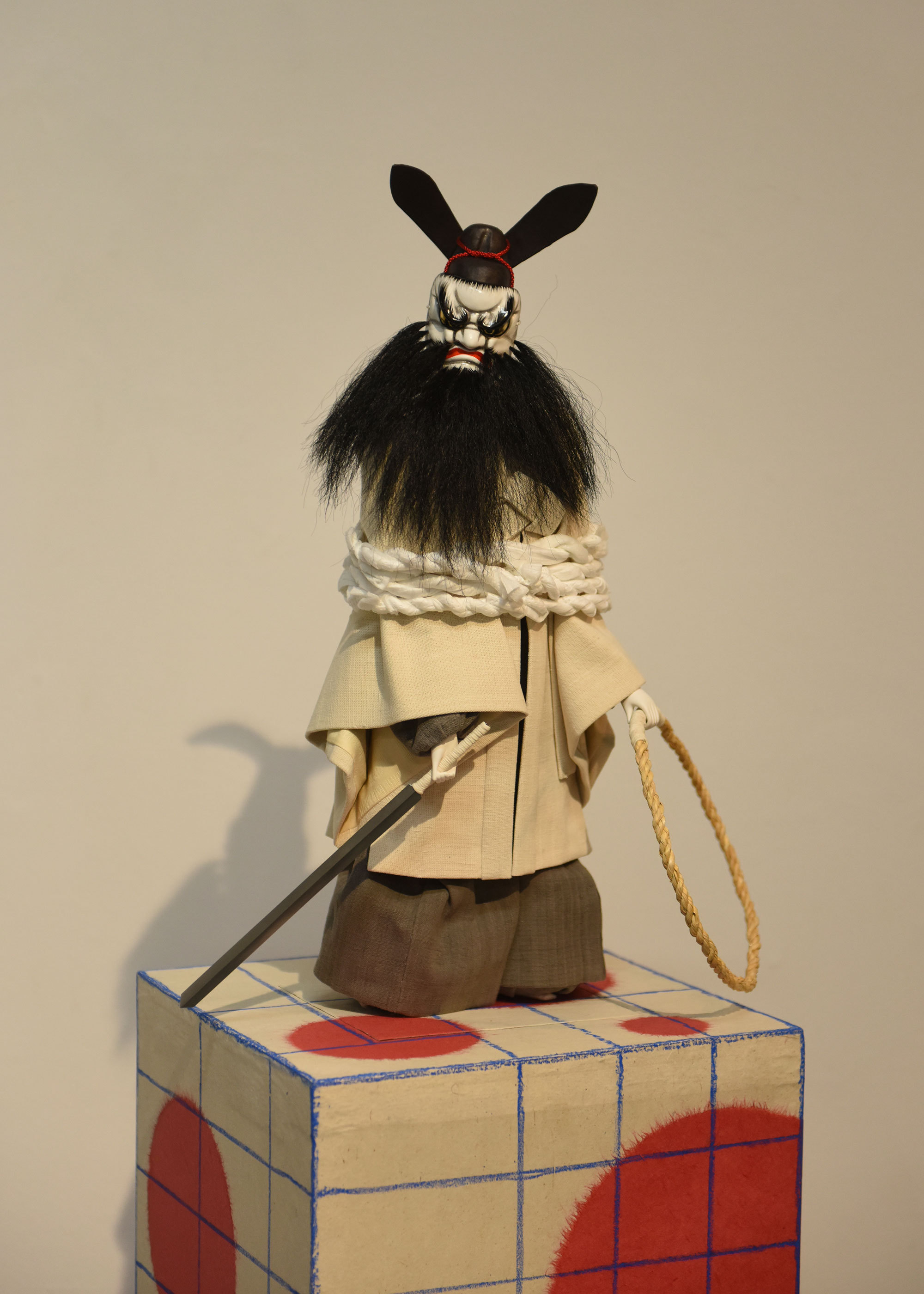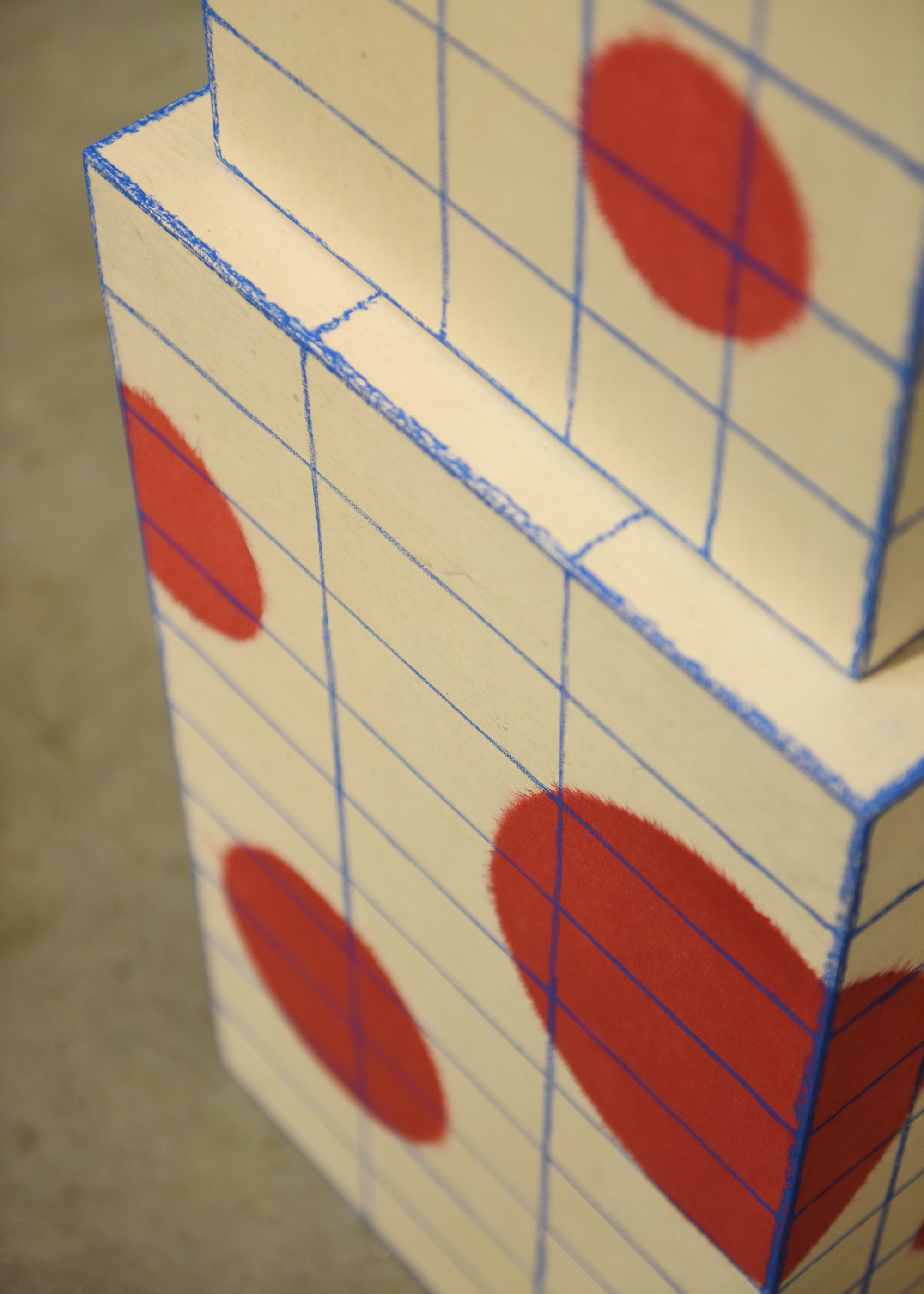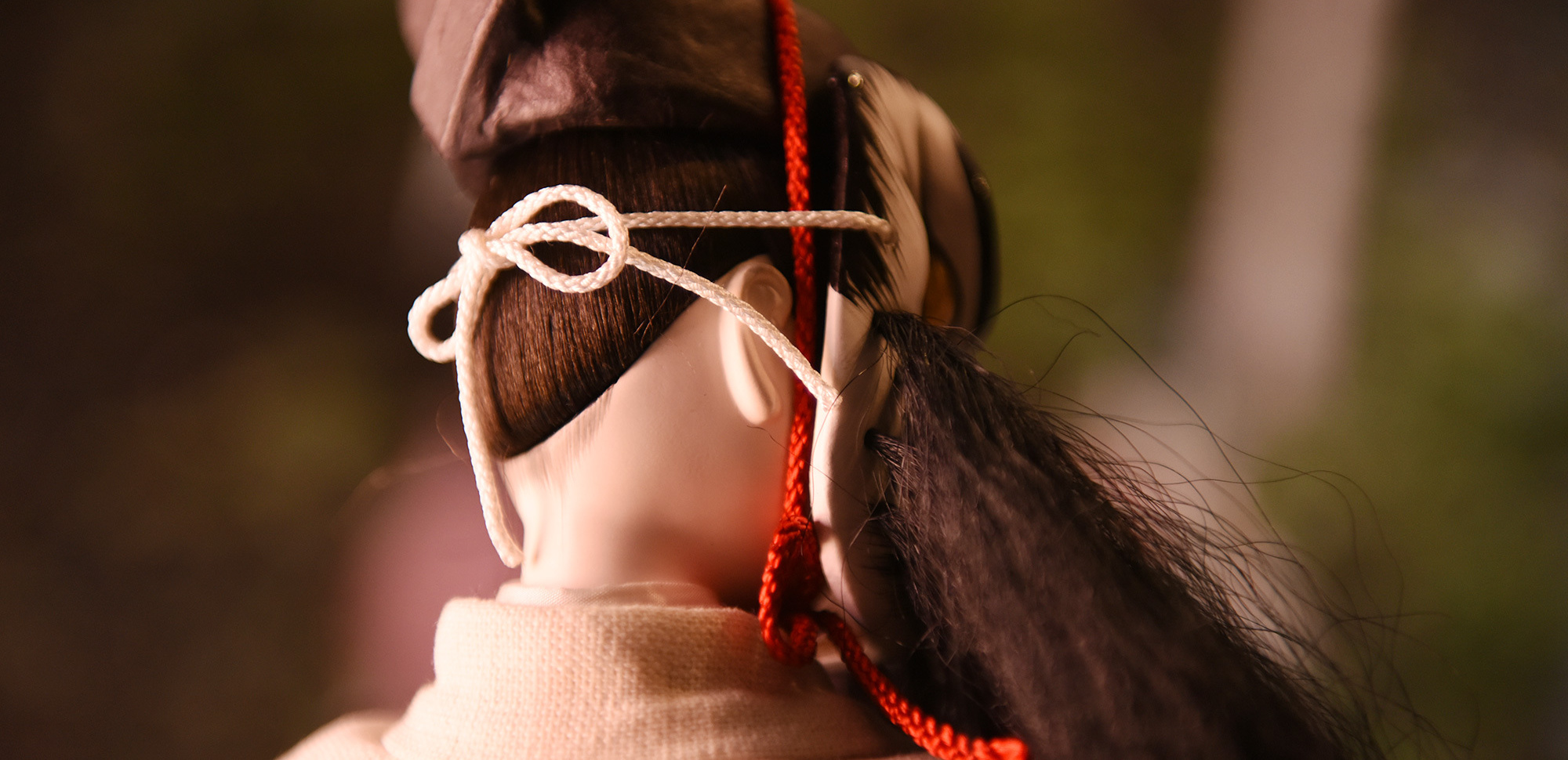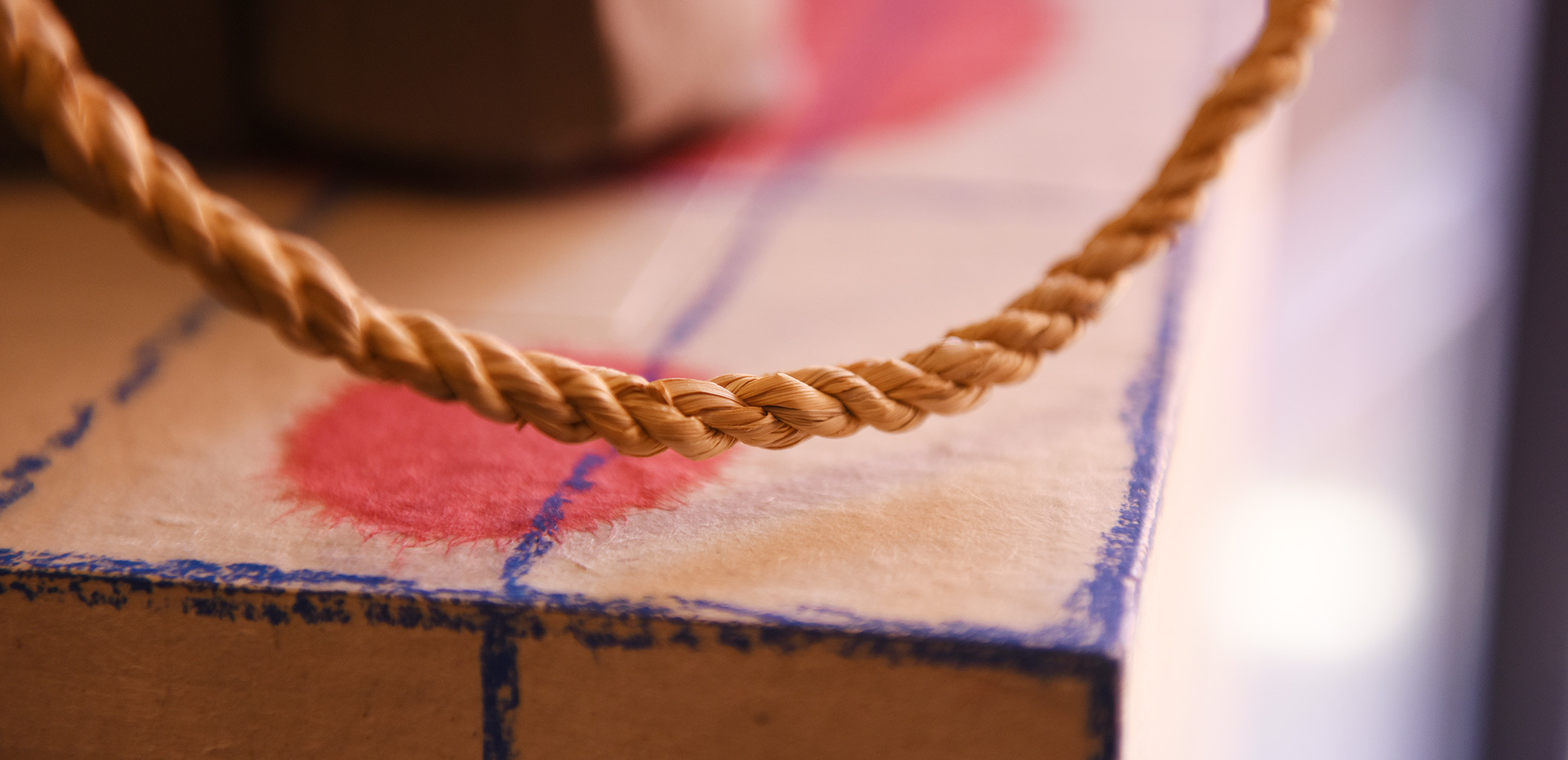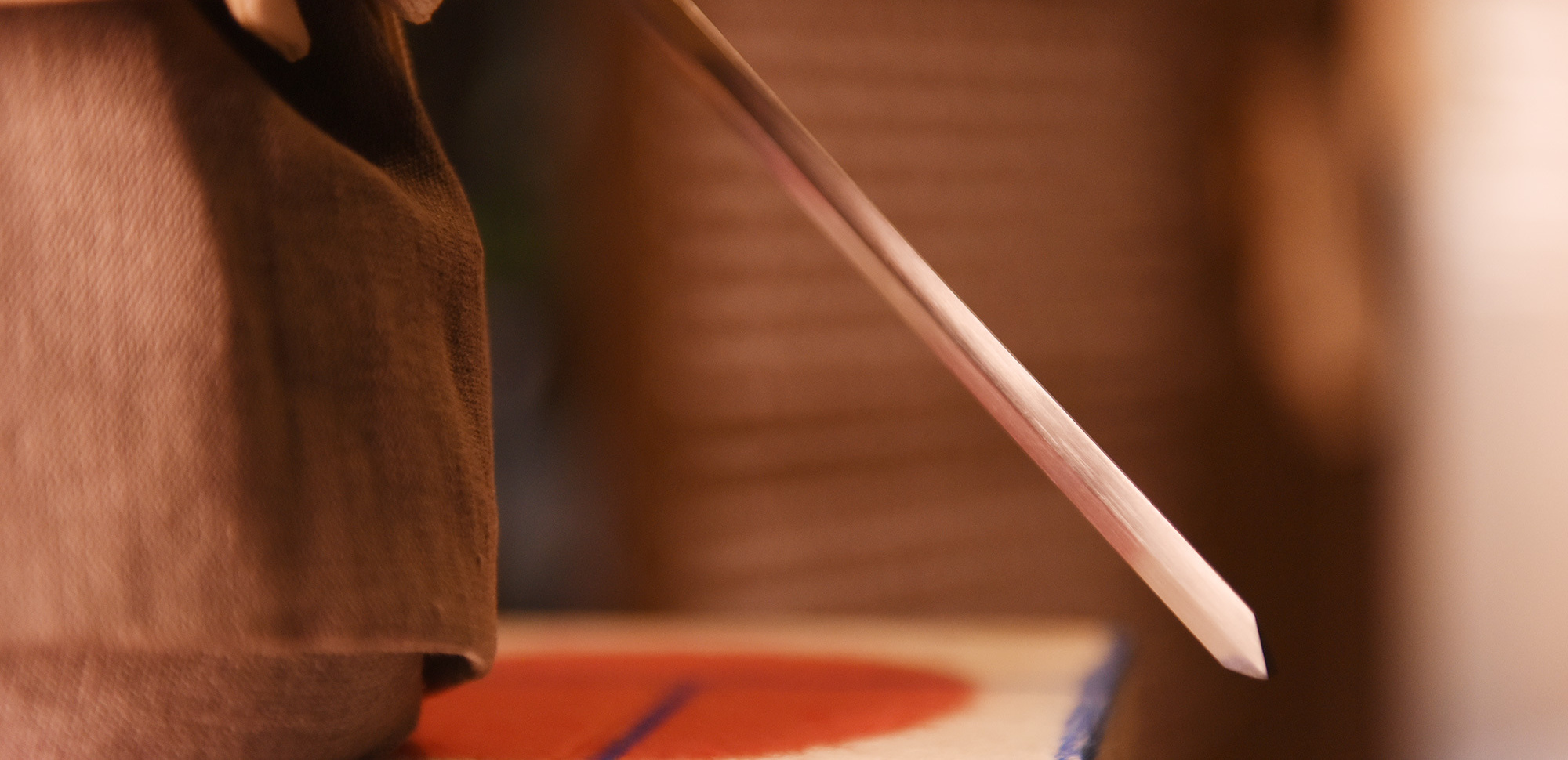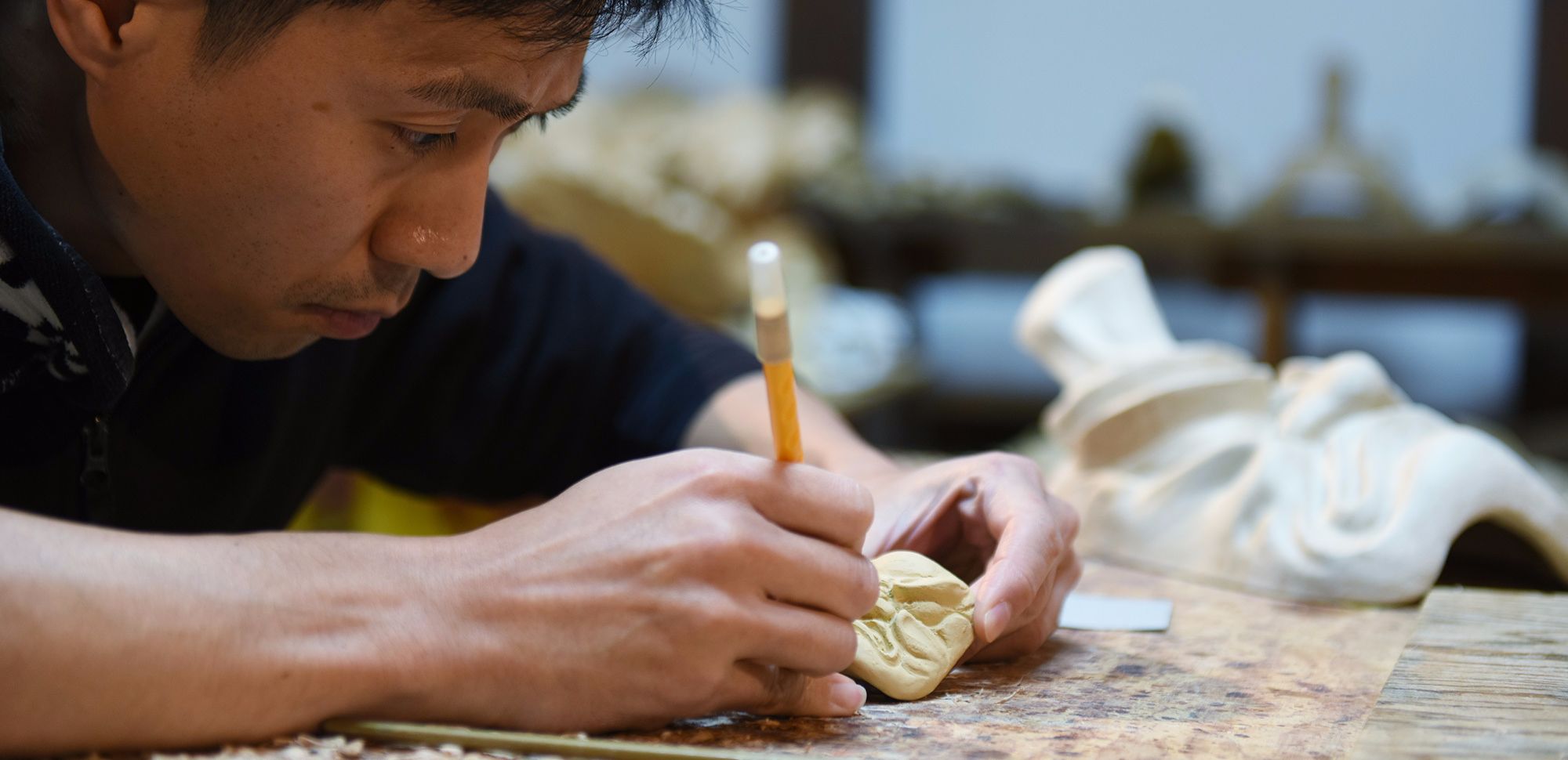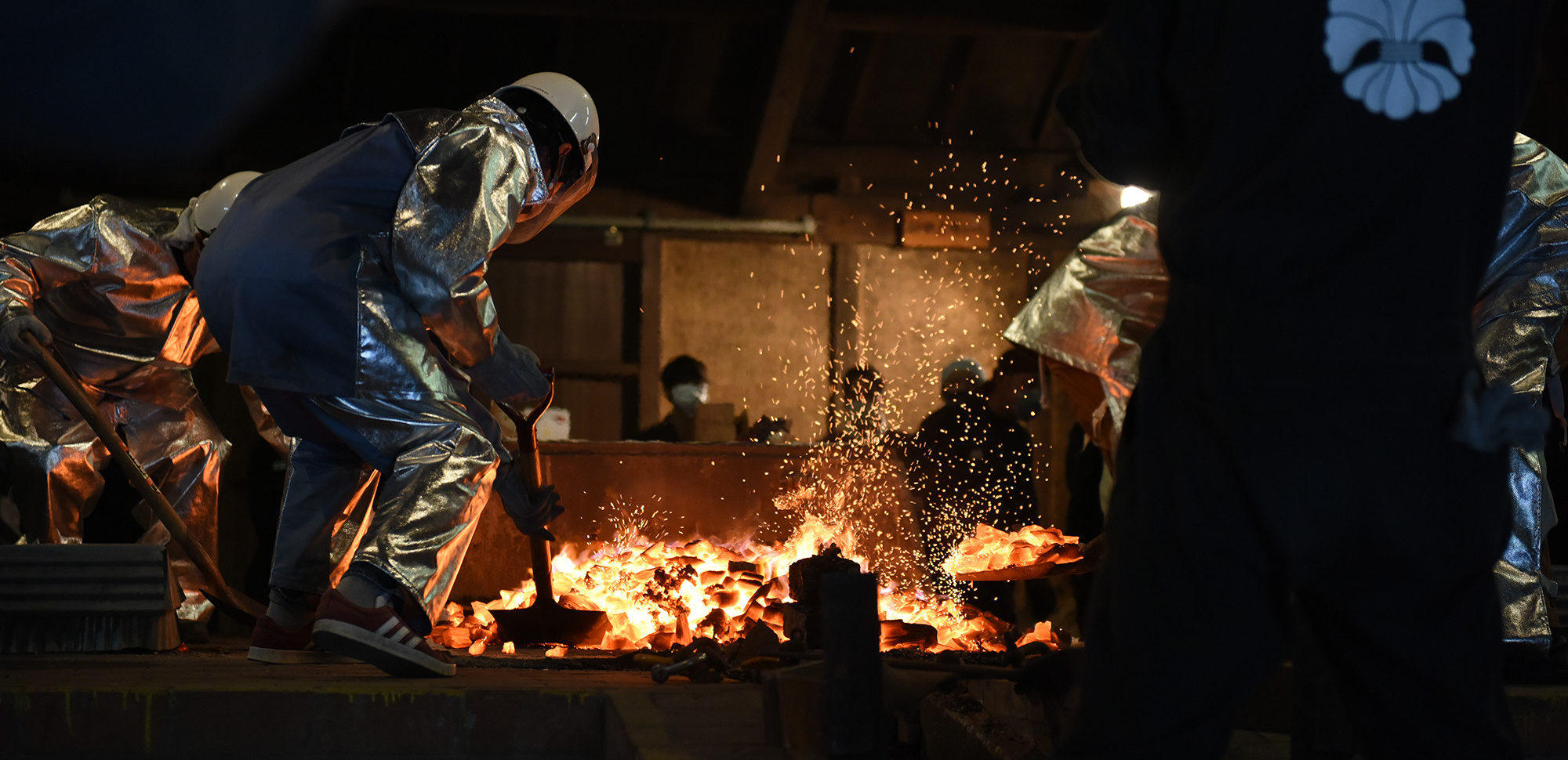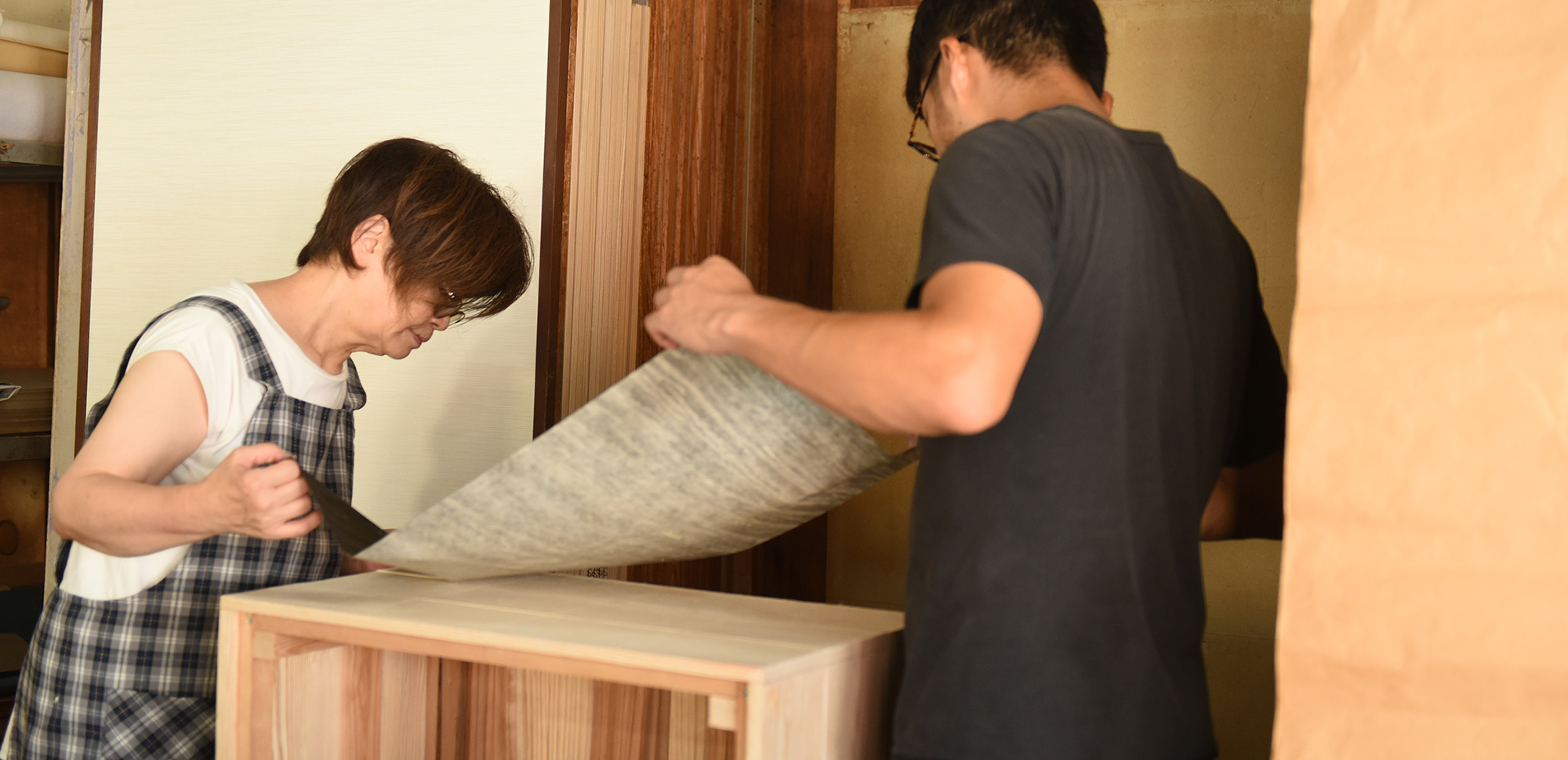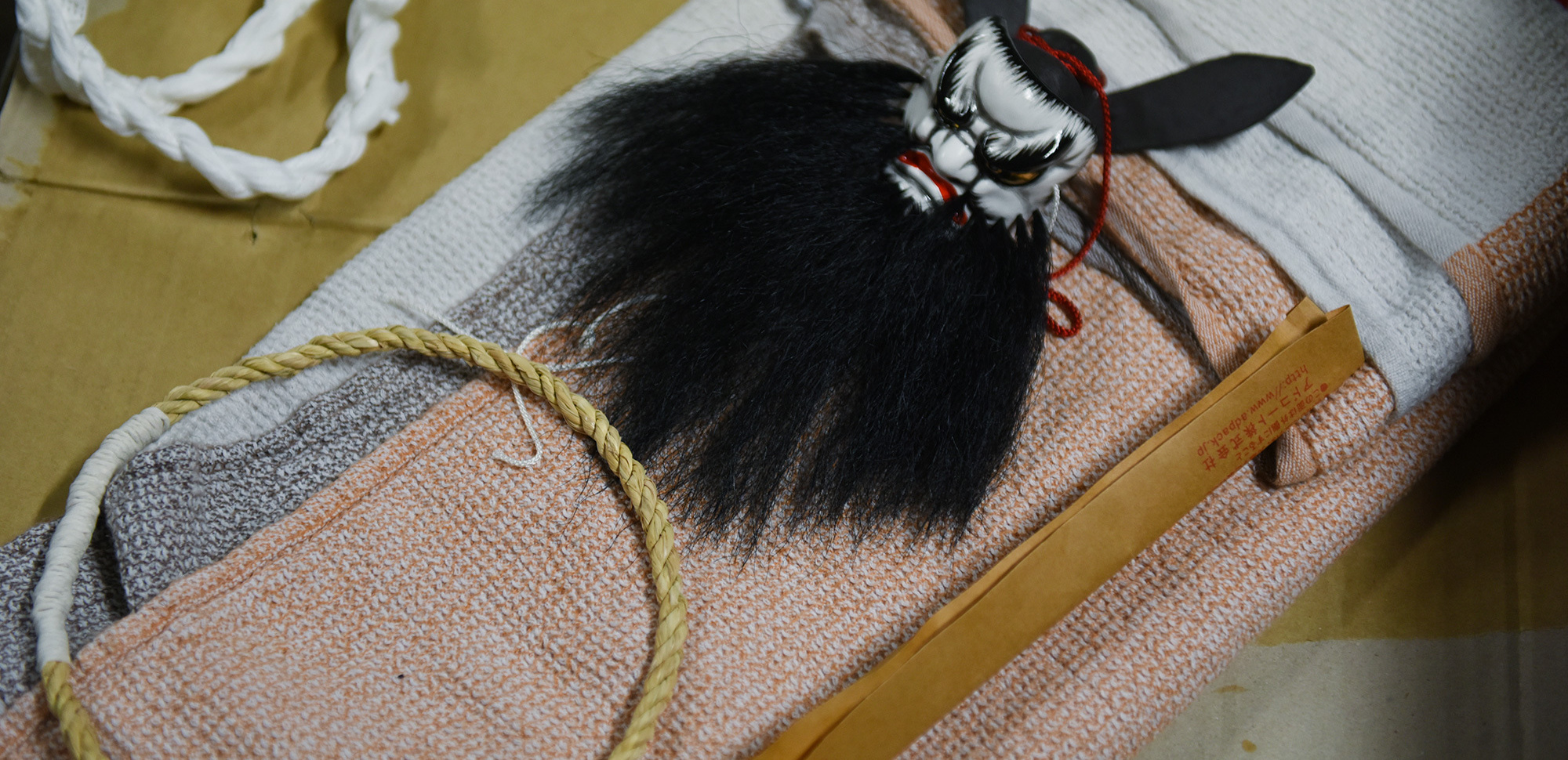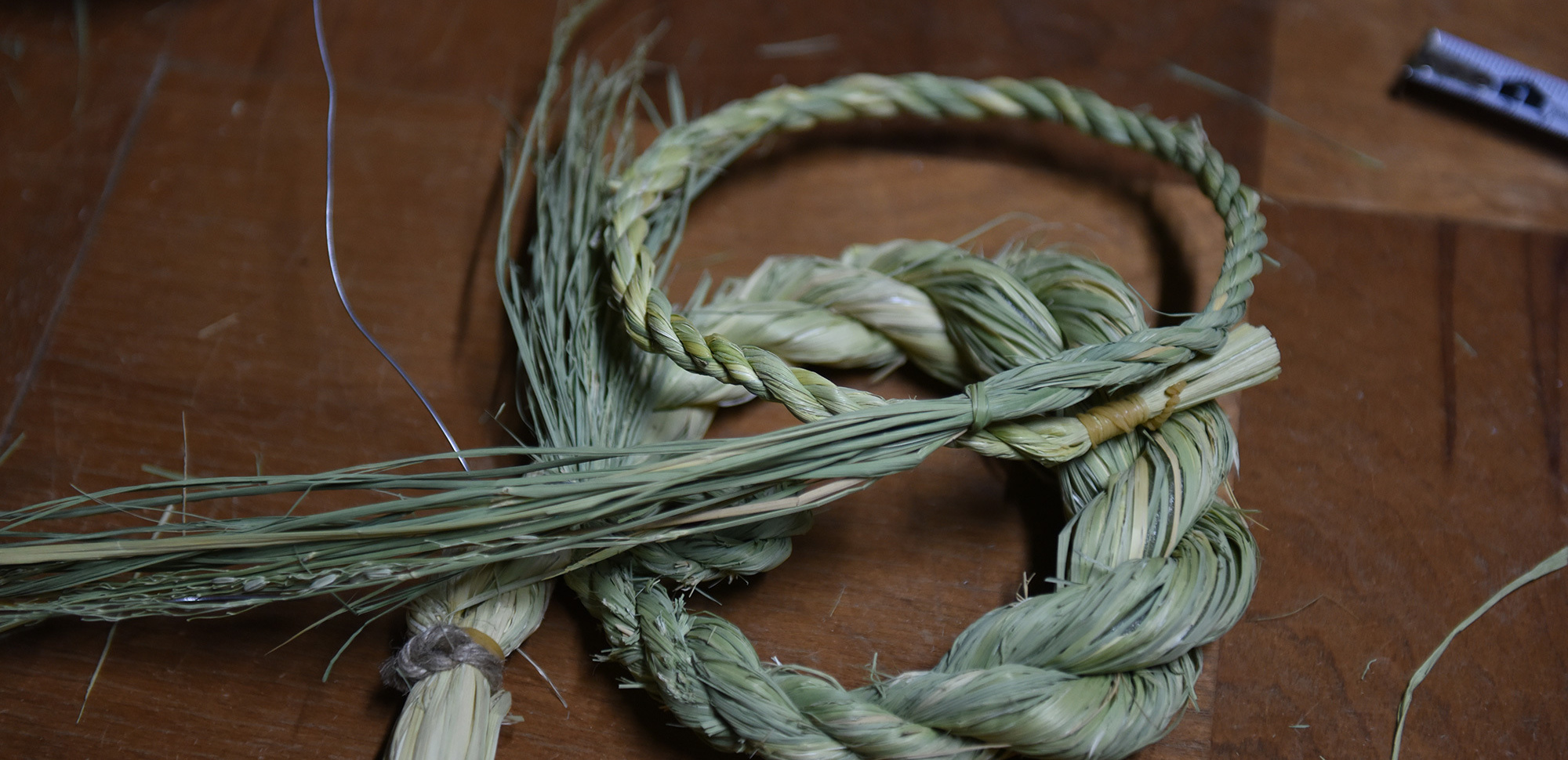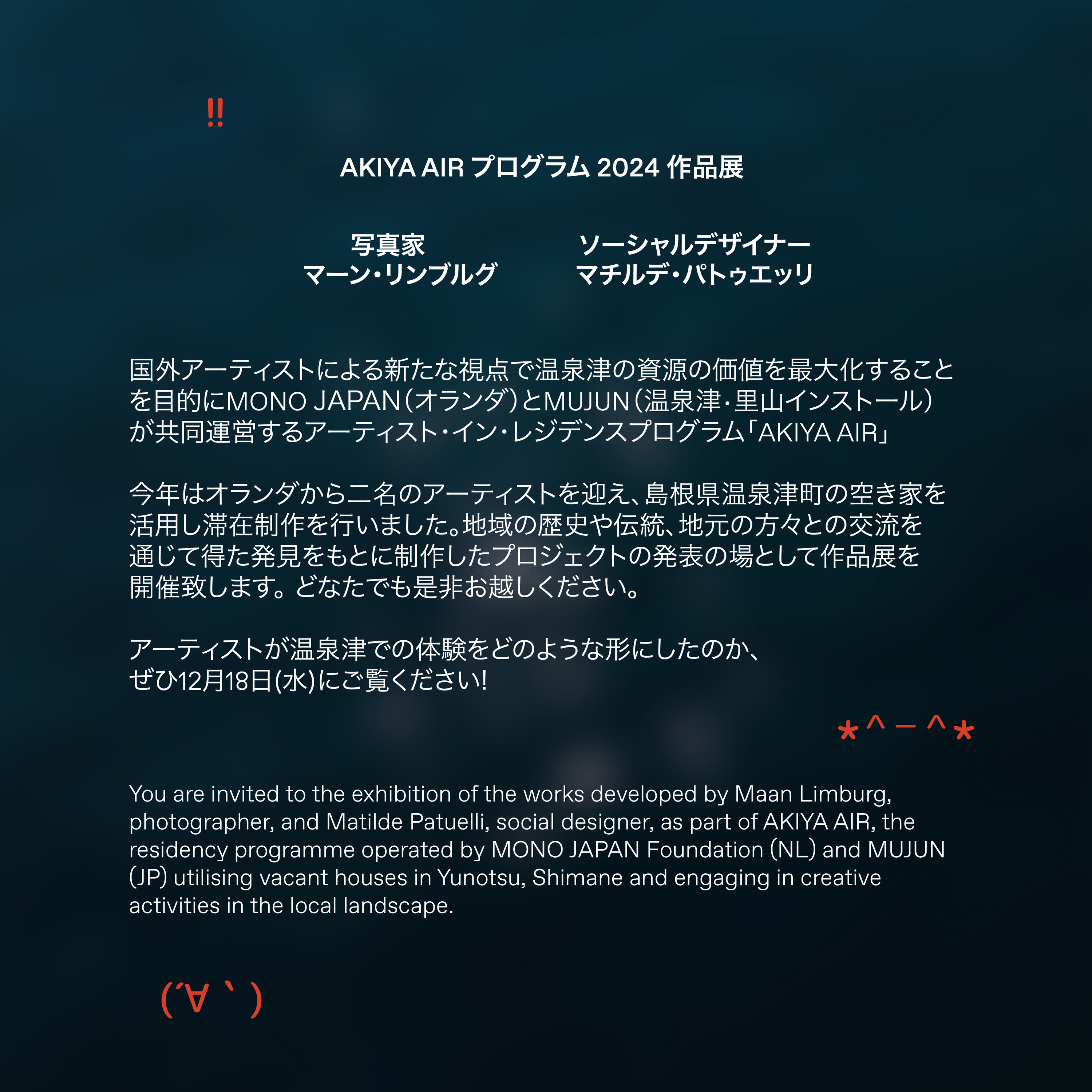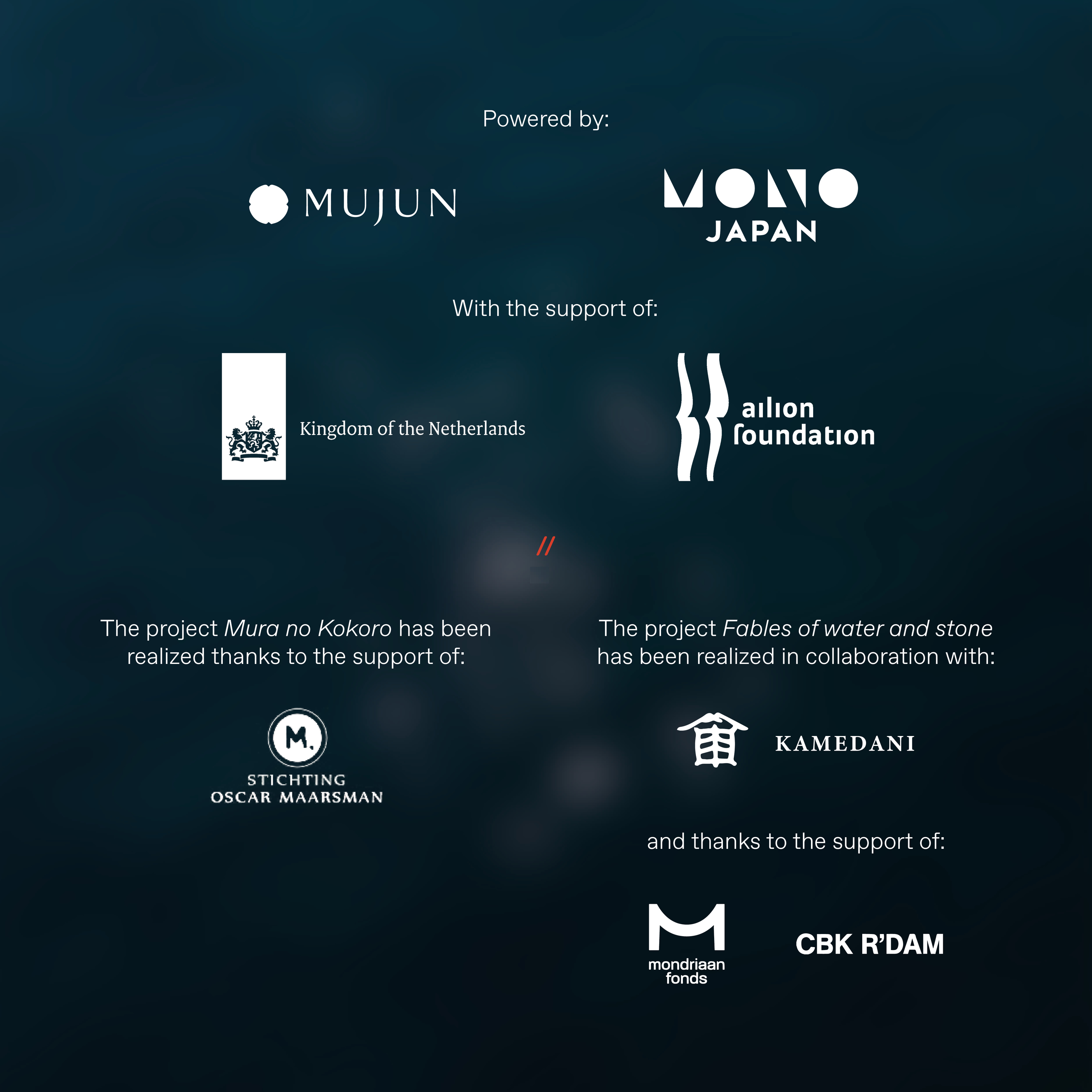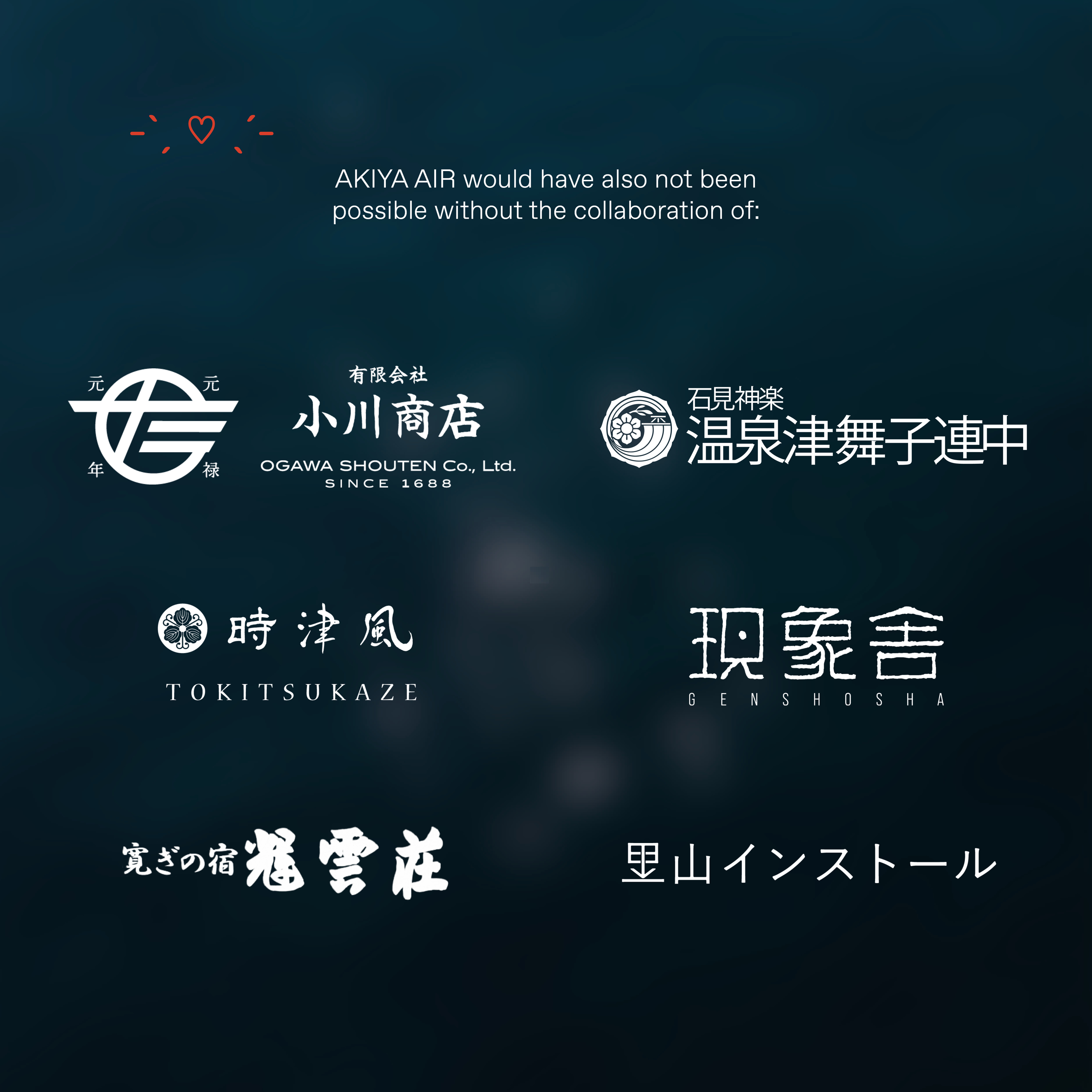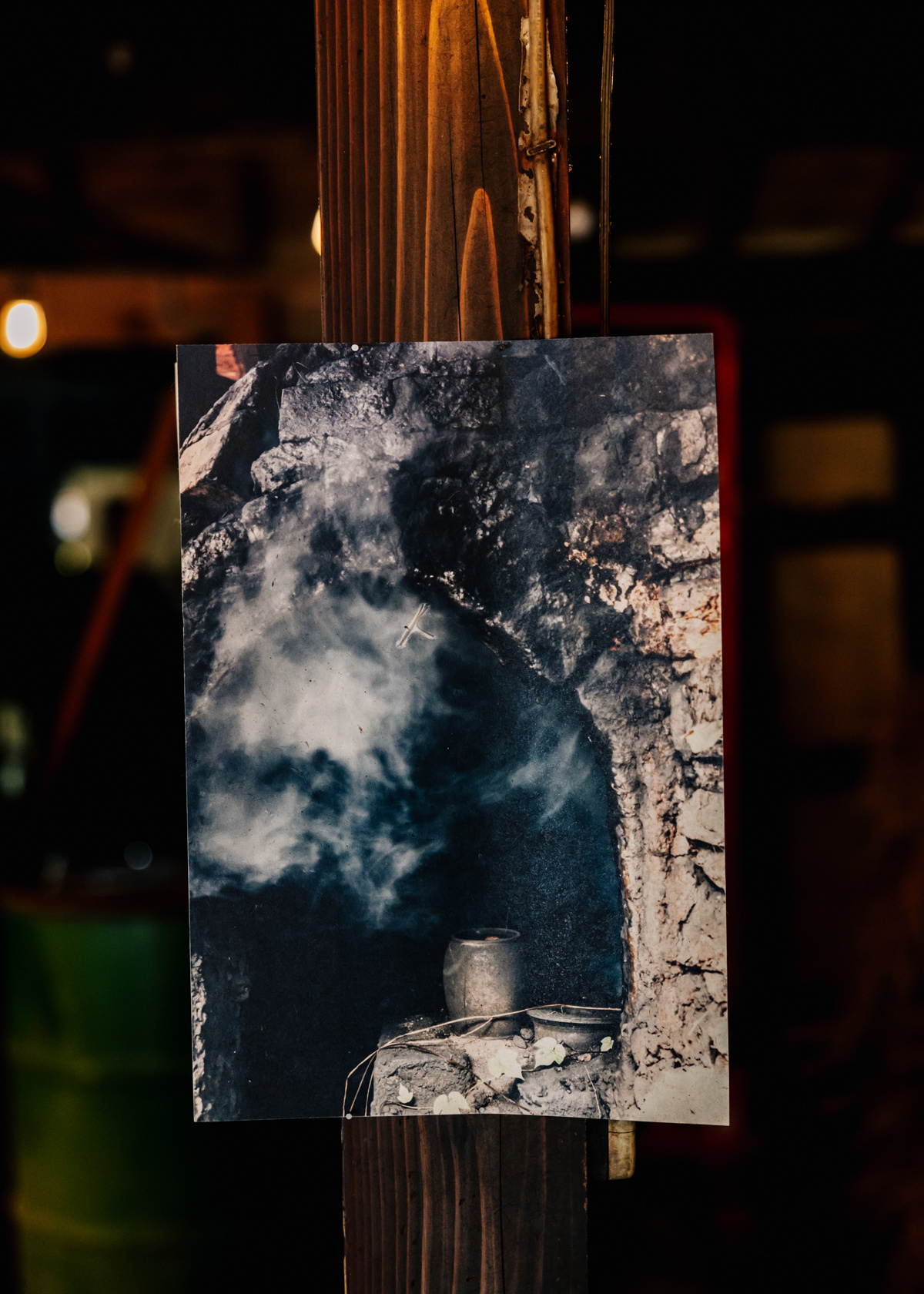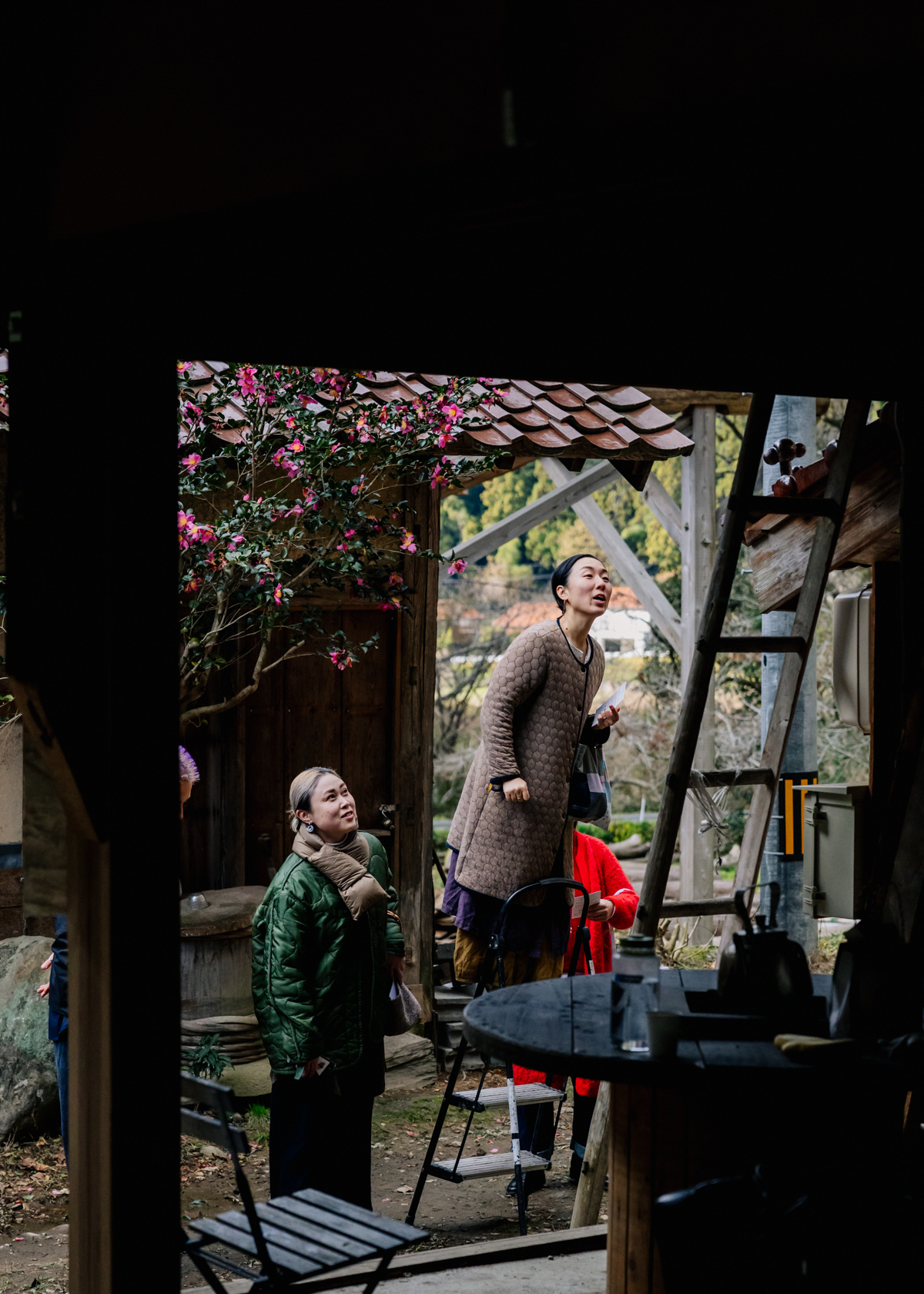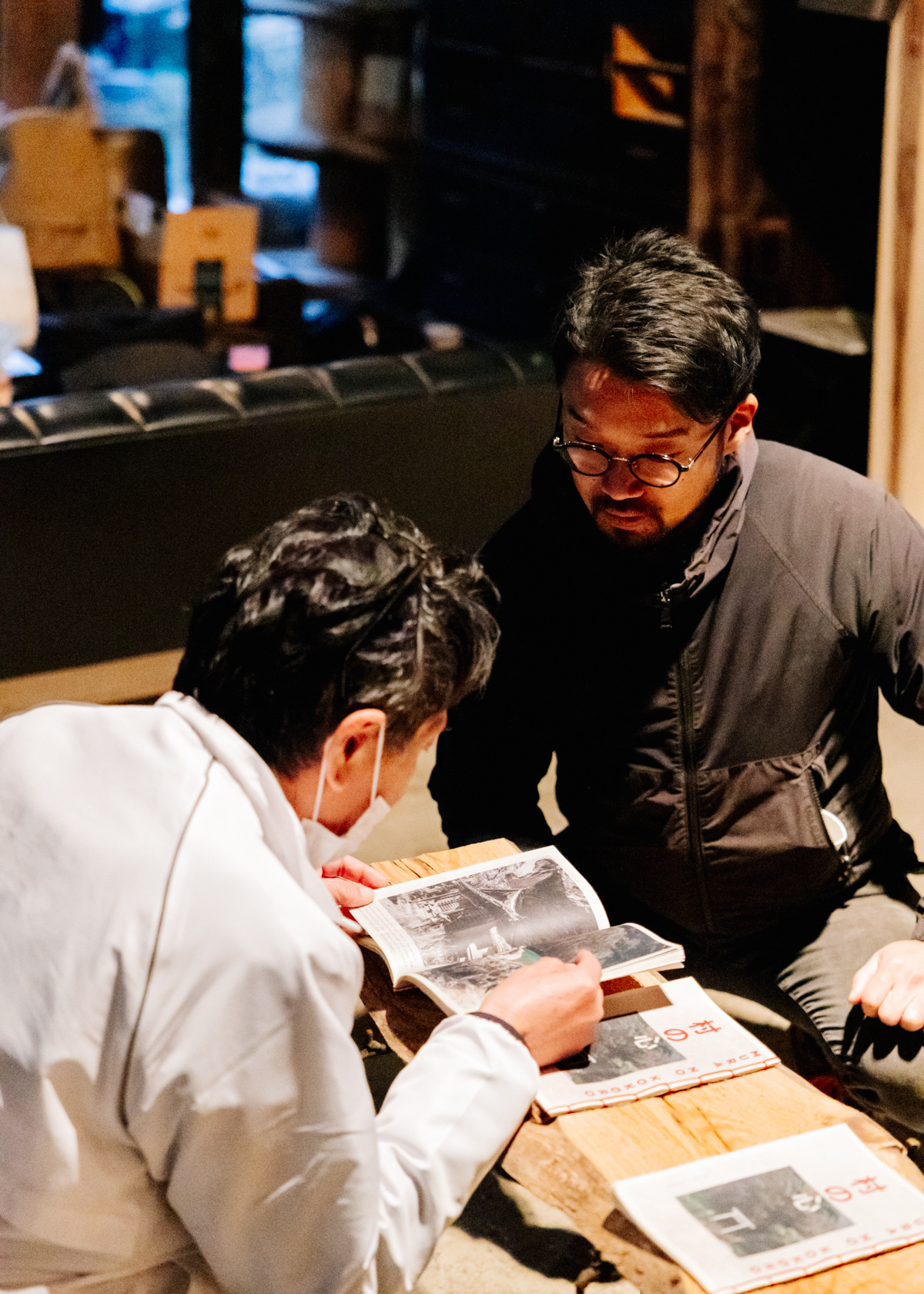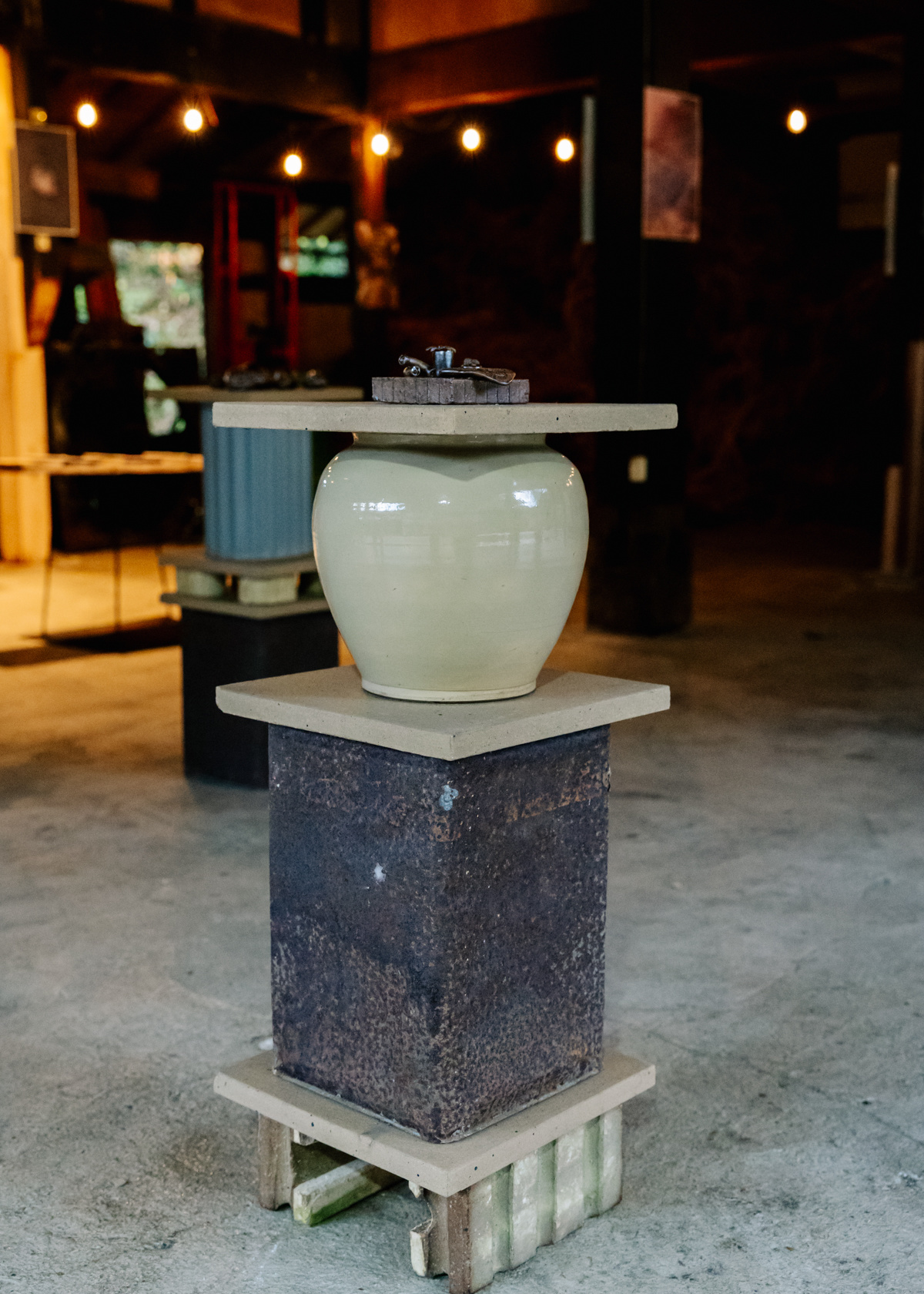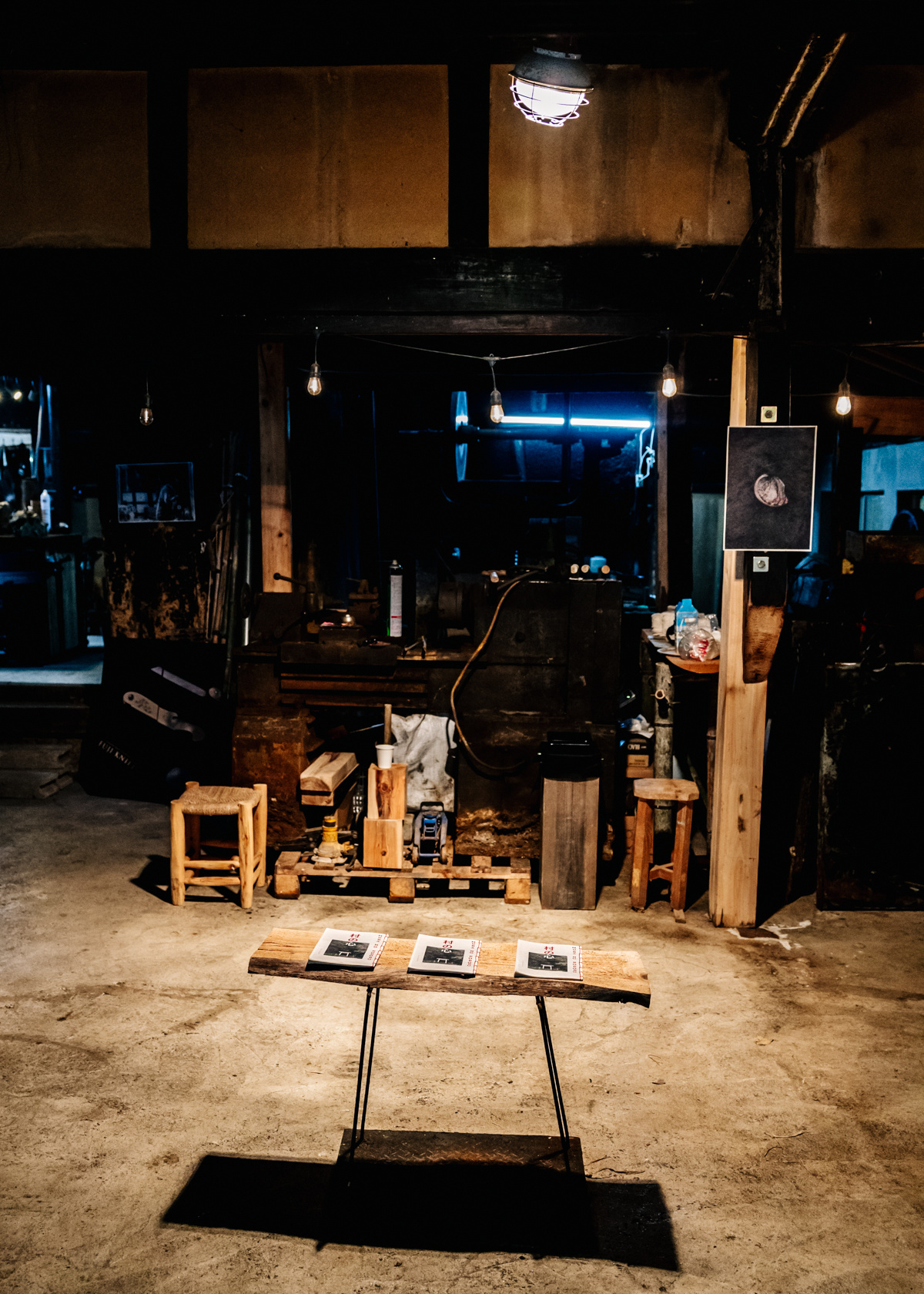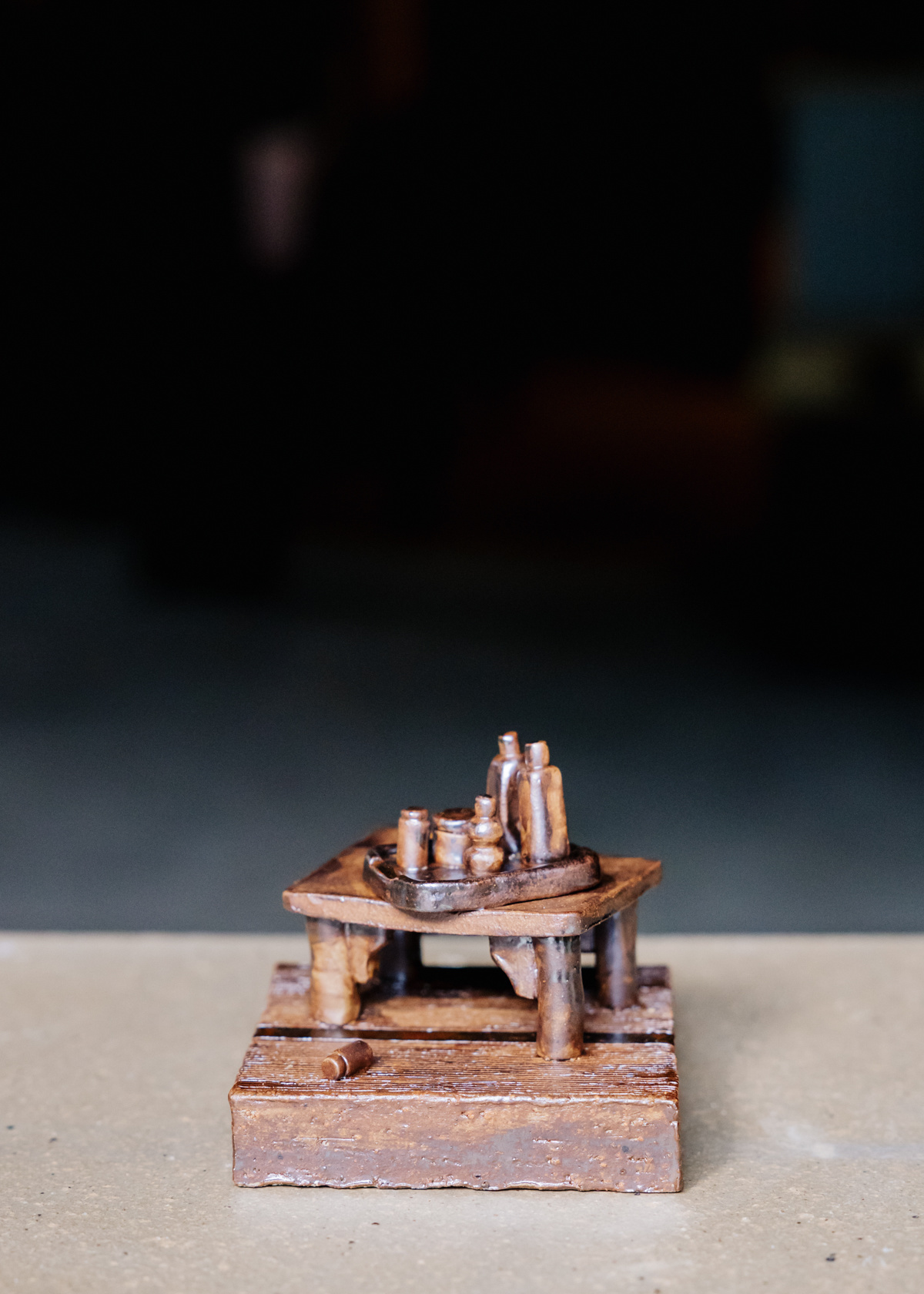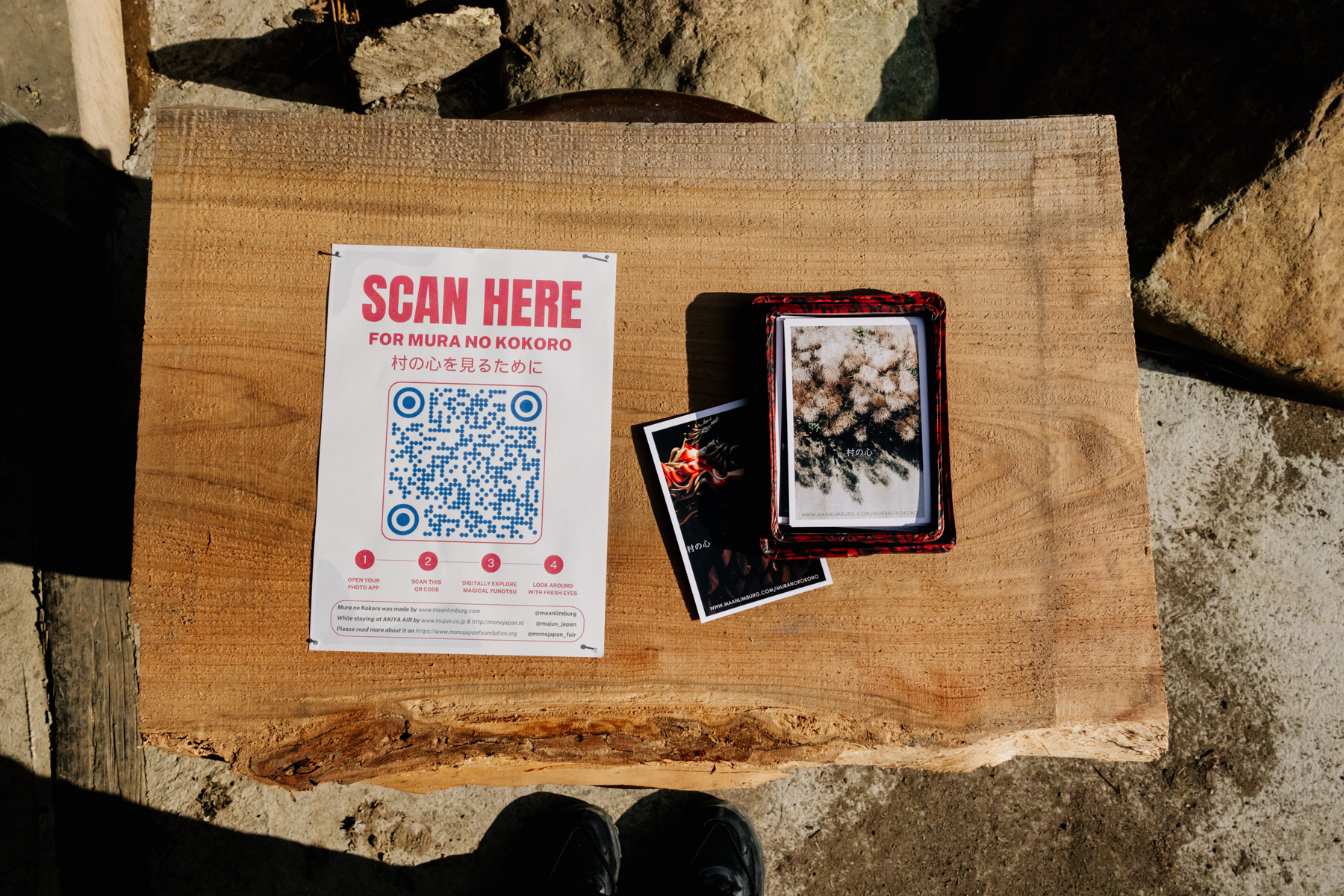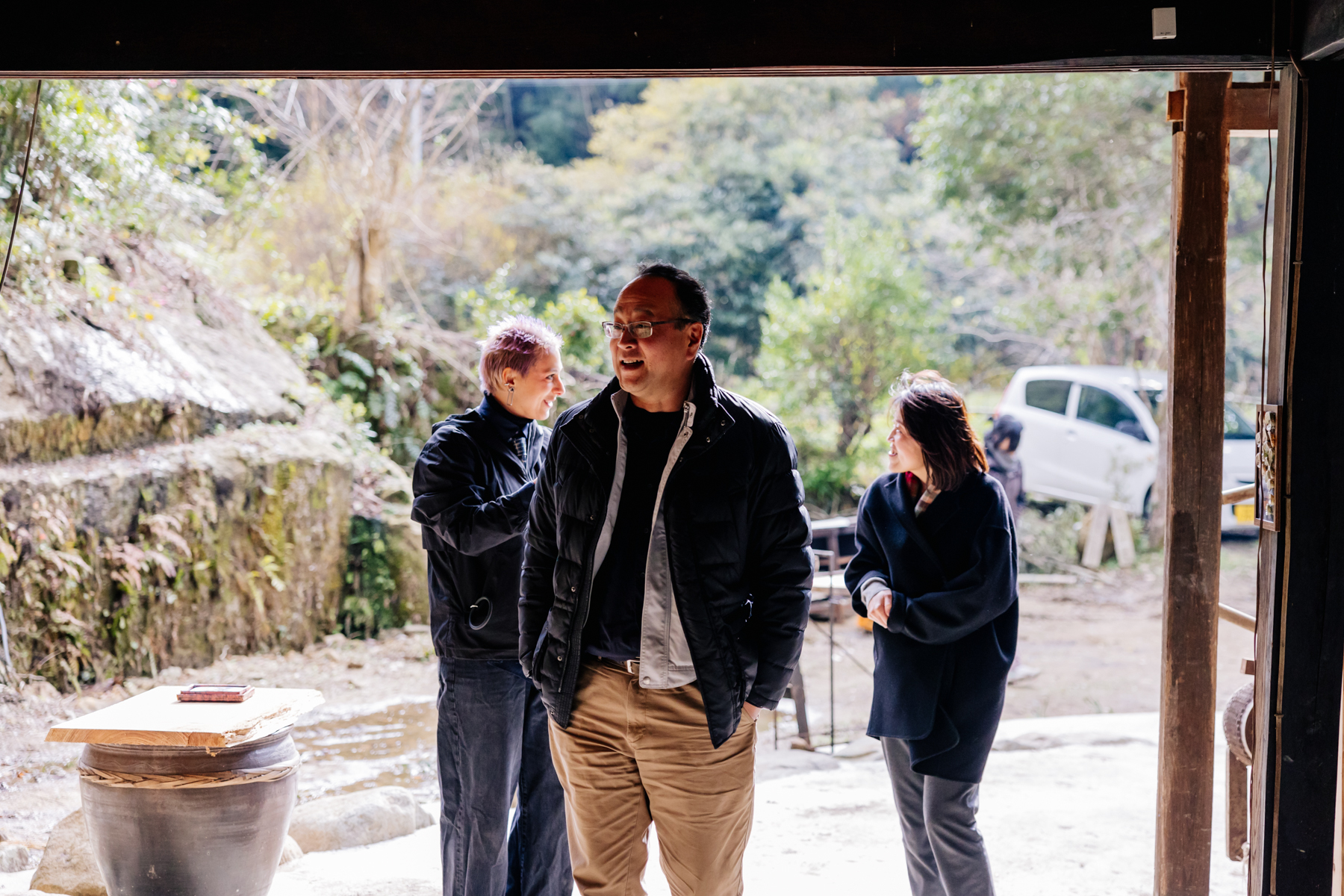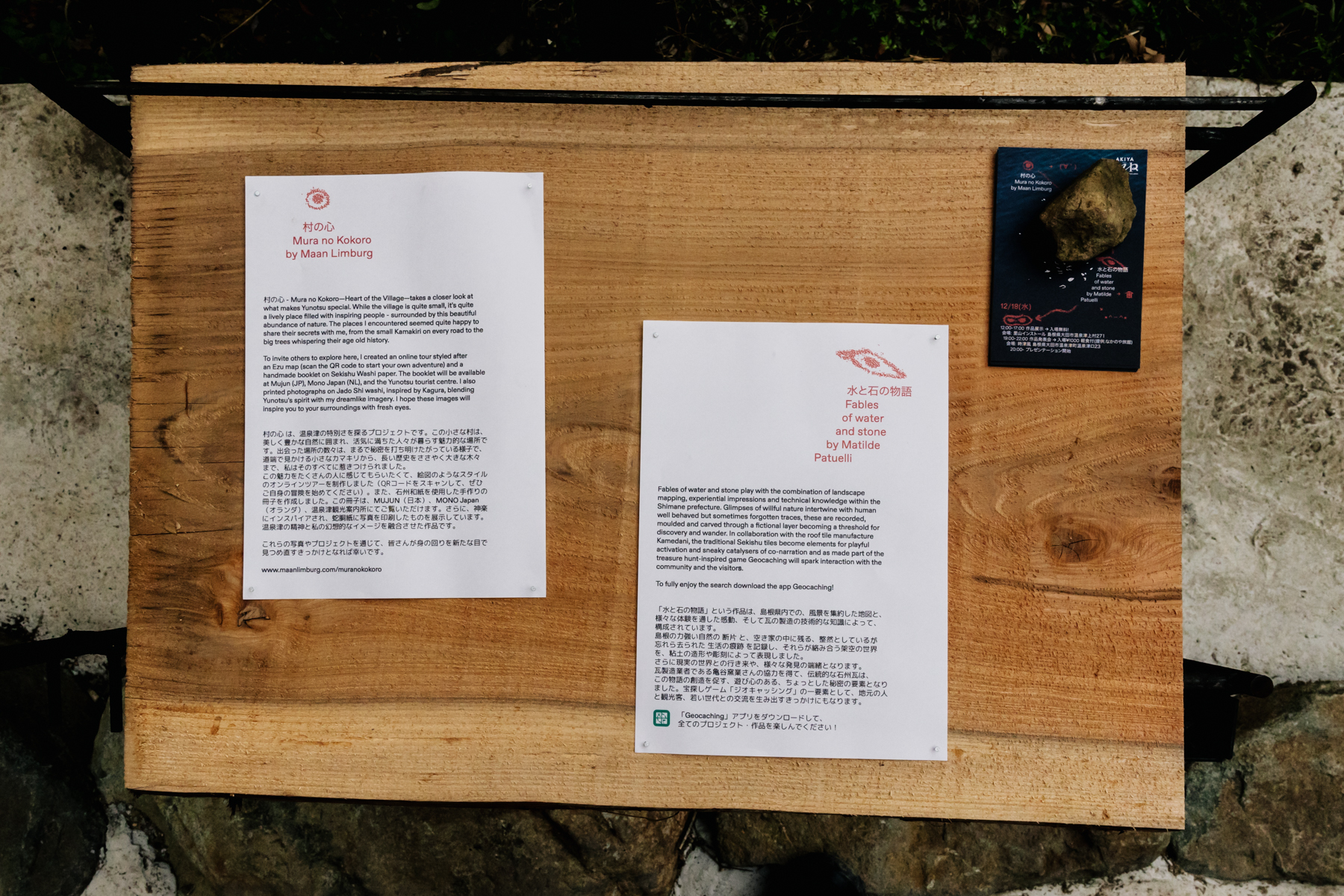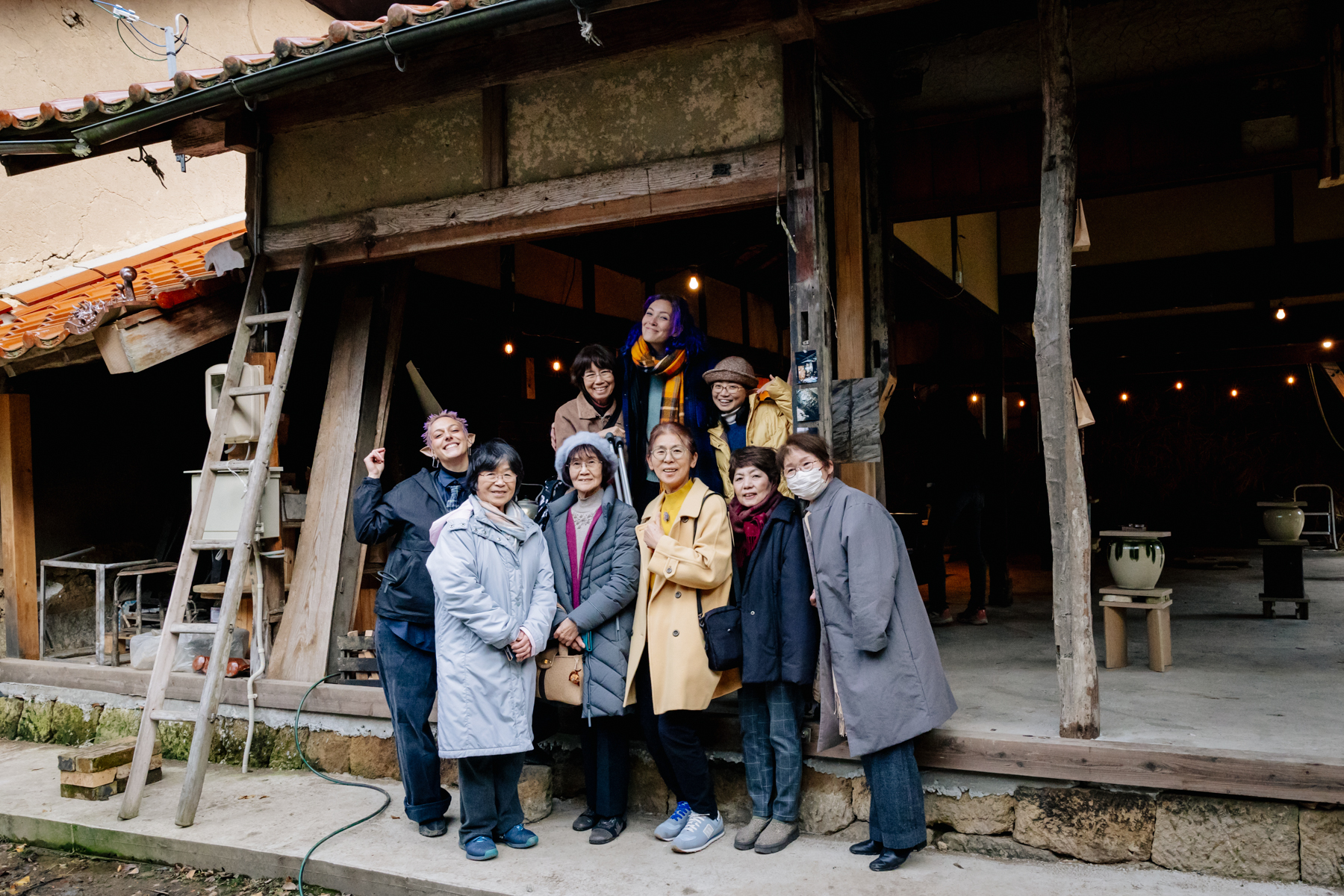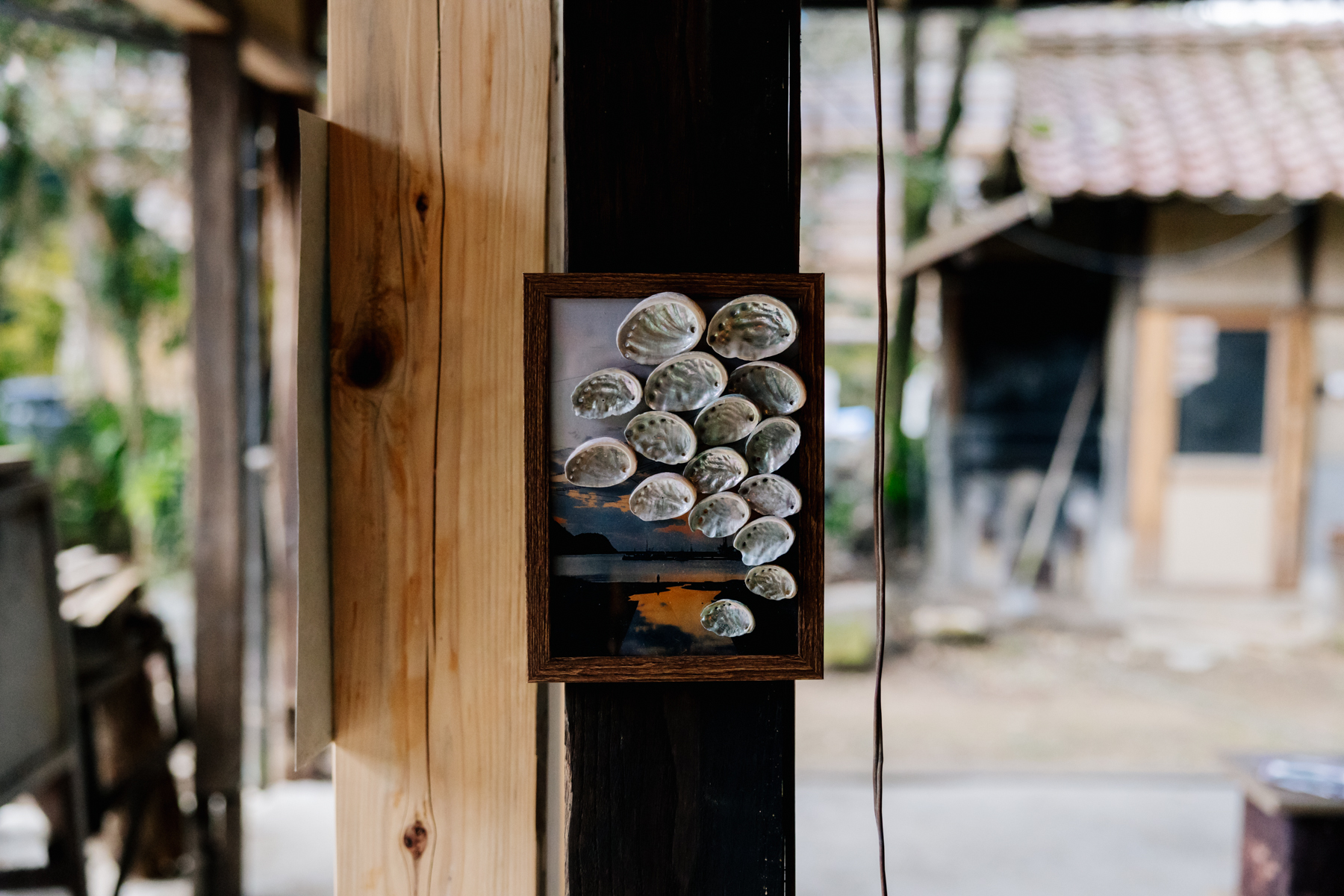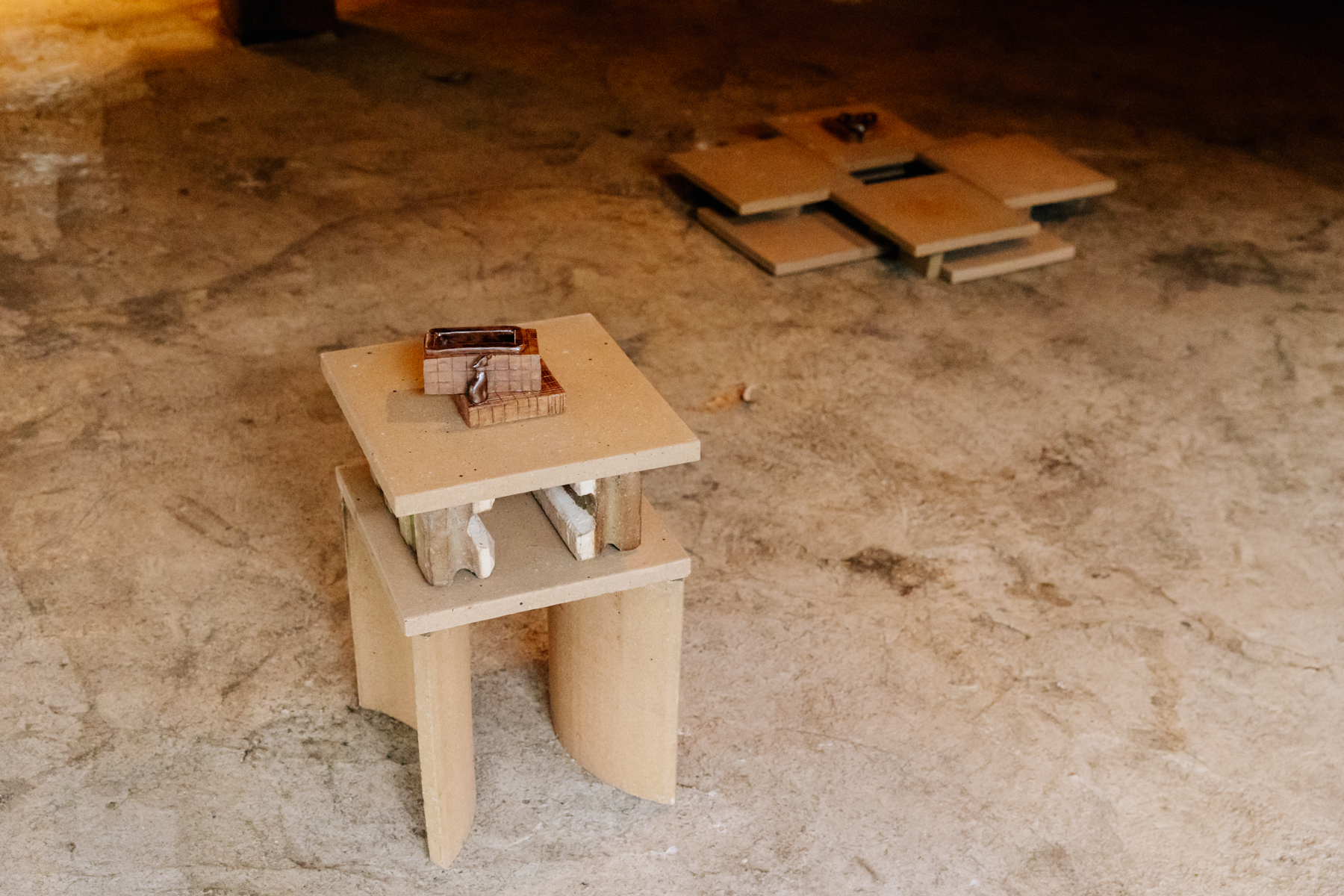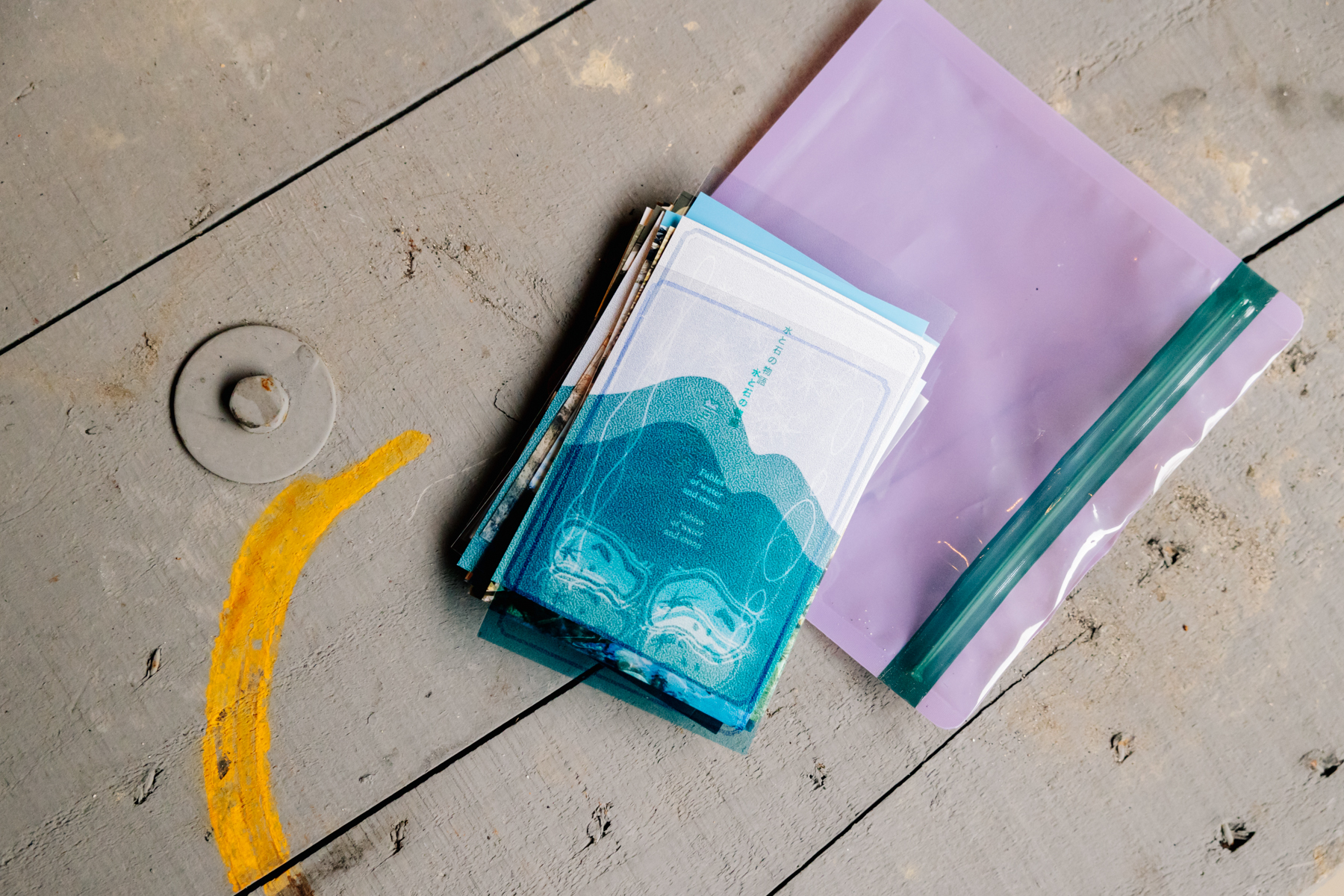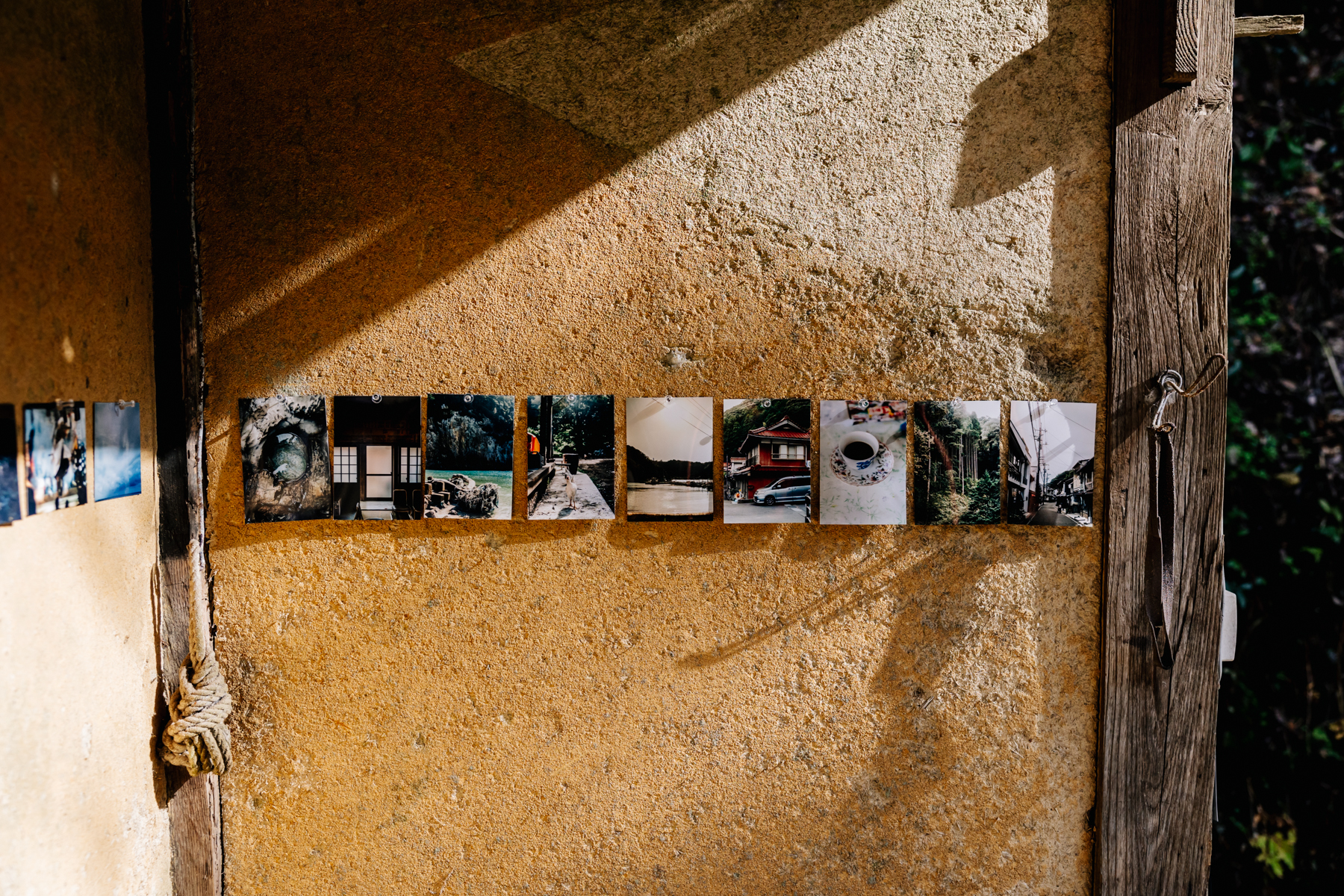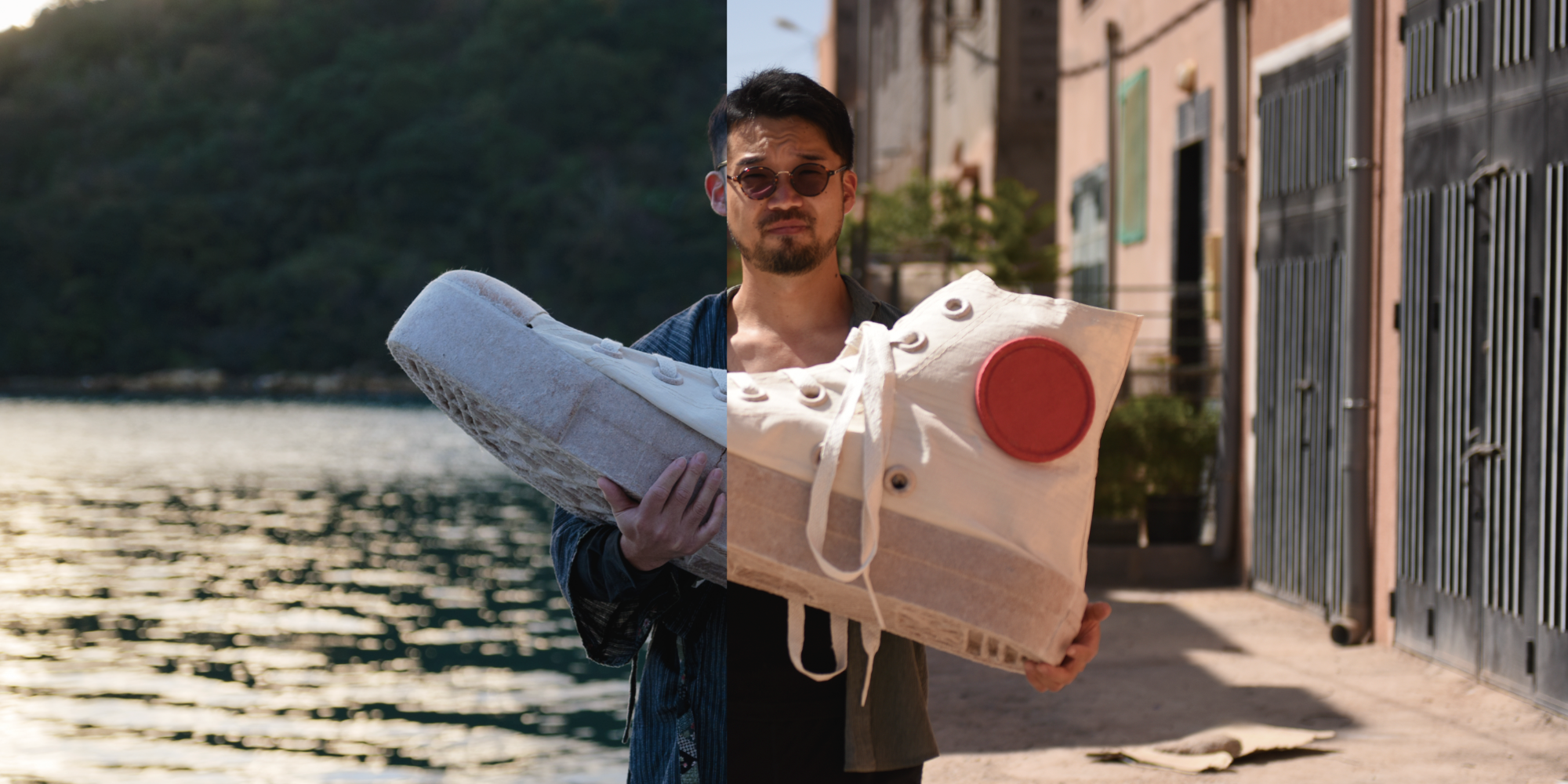
Shinya Kobayashi
1987, Hyogo. Lives and works in Hyogo and Shimane.
Kobayashi is a Japanese multidisciplinary artist who aspires to revive, rejuvenate, and reimagine craft cultures. He initiated the creation of sculptural artwork using natural materials in collaboration with Japanese artisans, drawing inspiration from Eric van Hove, a Belgian artist based in Marrakech known for his close collaboration with Moroccan artisans. Through his art, Kobayashi prompts contemplation on whether we can reconnect to elements such as nature, craftsmanship, and spirituality that are threatened due to hypercapitalism and industrialization. His mission involves rediscovering the enduring cultural assets still present in the rural areas of Japan and passing them on to the next generation. Through the interaction and exchange of ideas with Moroccan artisans, Kobayashi hopes to inspire the Japanese artisans and bring two craft cultures together.
小林新也
1987年兵庫県生まれ。 居住・活動拠点は兵庫県および島根県。
小林は、工芸文化を蘇らせ、活気づけ、再構築するという構想のもと制作活動を行う日本人のマルチディシプリナリー・アーティスト。マラケシュ在住のベルギー人アーティスト、エリック・ヴァン・ホーヴの活動に触発され、日本の職人と一緒に自然素材を使った彫刻作品の制作を開始。彼は作品を通じて、行き過ぎた資本主義と産業化によって失われた自然、職人の技、精神性を取り戻すことはできるのだろうかと問いかける。小林には日本の地方にわずかに残された文化資産を再発掘し、未来に繋げるという使命がある。モロッコの職人たちとのやり取りや交流を通して、小林は日本の職人たちにインスピレーションを与え、2つの工芸文化を結びつけたいと願う。
[ Participating Artisans / 参加した職人たち ]
Artworks
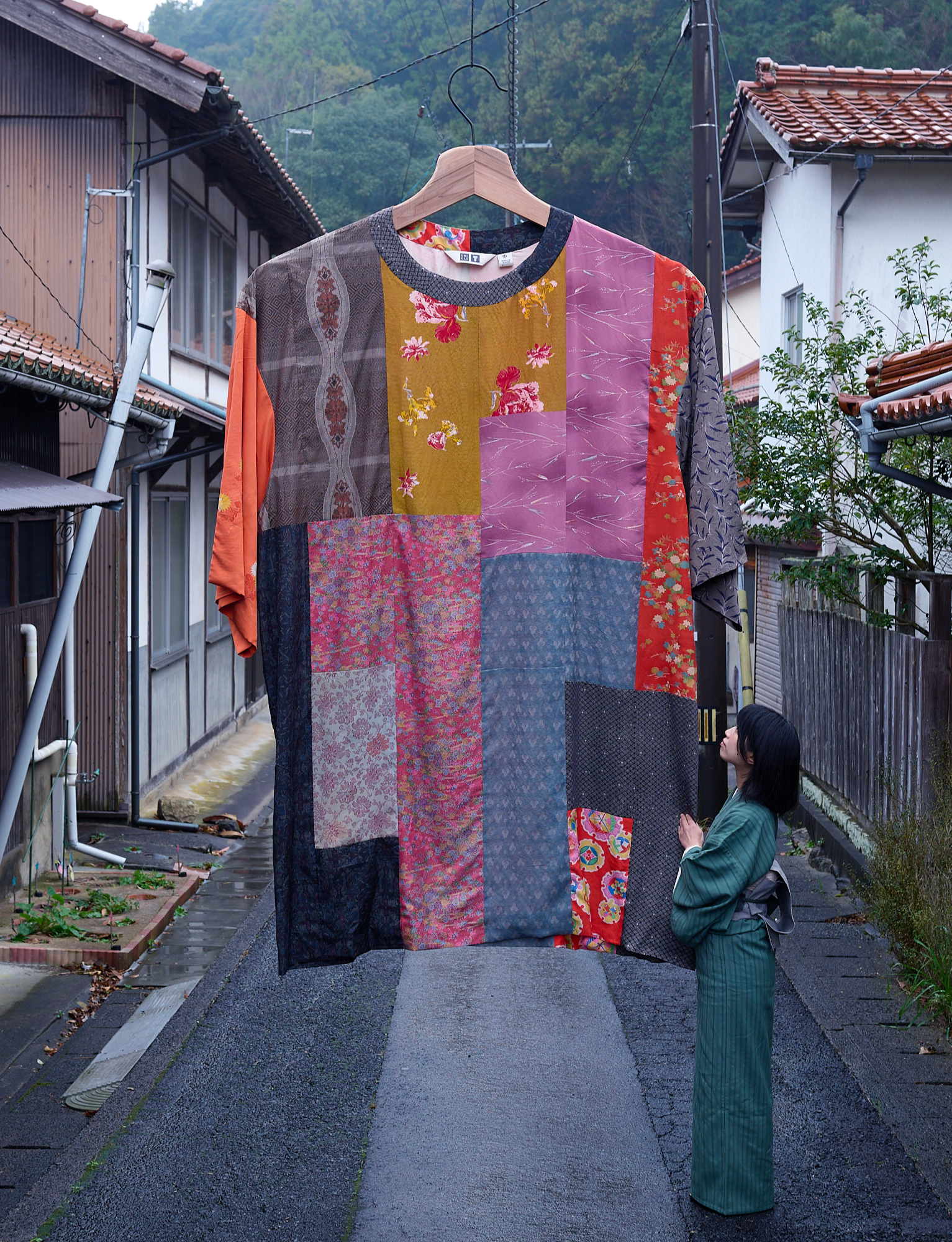
Akiyart
2025
w220 x h280 x d3cm
Materials:
Vintage kimono, kozo paper, iron, Japanese cedar
Exhibit History:
・Room 8, Malhoun, 1-54 Art Fair 2025 (Marrakesh, Morocco)
Akiyart envisions honoring and preserving the cultural heritage and values passed down through generations by repurposing kimono, once tucked away in akiya, (abandoned Japanese houses) that exist across the country - over 9 million of them. In modern Japan, most people wear Western clothing everyday. By stitching together vintage kimono pieces found in akiya to create a large T-shirt, the artist aims to reimagine traditional culture and crafts in a contemporary form.
空き家ートは、全国に存在する900万軒以上の空き家に眠っていた着物を再利用することで、何世代にもわたって受け継がれてきた文化や価値を尊重し、保存することを目指している。現在、日本人のほとんどが毎日洋服を着ている。空き家で見つかったヴィンテージの着物をつなぎ合わせて大きなTシャツを作ることによって、伝統的な文化や職人技を現代に継承したいという想いが込めらている。
Artisans who participated in the work
作品に参加した職人
Yukika Saito | 斎藤 雪香
Yu Yamauchi | 山内 ゆう
Misako Kobayashi | 小林 美佐子
Koharu Yamaguchi | 山口 小春
Technical supporter:
Sekishu Washi Center | 石州和紙会館

Satoyamart
2024, 2025
w96 h126 d66 cm (shoe, base, mirror)
w130 h190 d2.5 cm (photograph on the hanging scroll)
Materials:
kozo paper, Japanese cedar, sawdust, brass,
Shinsha (red pigment), rice glue, kumihimo (braided codes)
Kakishibu (polymeric tannin from persimmon juice)
Exhibit History:
・MONO JAPAN 2023 (Amsterdam, Netherlands)
・Room 8, Malhoun, 1-54 Art Fair 2024 (Marrakesh, Morocco)
・Room 8, Malhoun, 1-54 Art Fair 2025 (Marrakesh, Morocco)
Satoyamart is a series that bridges art with satoyama, a Japanese concept emphasizing the interconnectedness of humans and the natural ecosystem in mountain environments. By recreating globally recognized designs using locally sourced materials and collaborating with regional craftspeople, the series envisions a sustainable future for manufacturing and consumption.
Currently, the majority of shoes are not recycled, with an estimated 22 billion pairs ending up in landfills annually. Shoes, in this context, symbolize how each of us is, often unknowingly, contributing to environmental destruction.
In this work, the left shoe from this pair is displayed here, while the right shoe—fully decomposed or “returned” to the mountain of its origin in the Iwami region in Shimane, Japan—is represented by a photograph on the hanging scroll. The image, taken in April 2024—four months after the shoe was returned to the mountain—serves as a memorial portrait, honoring the right shoe’s prior existence.
When an object is no longer being used, we often consider its life to have ended. However, in the satoyama philosophy, the object is understood as being returned to nature. If hyper-local and genuinely sustainable manufacturing practices become the norm, we might see a shift in mindset—from discarding objects to consciously returning them to the natural world.
This artwork incorporates natural materials and traditional craftsmanship from Shimane, Japan. The upper part is crafted from hand-woven shifu (紙布), a textile made from Japanese washi paper. The process began with cutting a large sheet of Japanese paper into fine strips, which were then painstakingly twisted by hand—a task that took 25 days just to prepare the threads. These threads, totaling over 5,500 meters, were then woven together to create an exquisite paper textile that forms the foundation of this work.
里山ートは、靴を題材に、島根県のさまざまな自然素材と職人の技を融合し、ポップアートとして昇華させた。これはグローバルなデザインを島根県石見地方のハイパーローカルな技と素材で再現することで、見過ごされがちな地域の技と素材の豊富さを称賛する作品だ。靴の大半がリサイクルされず、世界では推計で220億足もの靴がゴミとして埋立地に行き着くという。靴は、誰もが無意識のうちに自然破壊に関与していることを象徴する存在だと言える。この作品の上部は和紙を細長く切って、手作業によるよりをかけるという作業により25日間かけて糸を作り、5500メートル以上の糸を使って織り上げられた紙布を使用している。
靴の左側はここにあるが、右側を生まれた山へ還した。未来のプロダクトは役目を終えた時、捨てるという概念ではなく、還すという行為に変わる。その時どんな還し方をするだろうか。日本の国旗の赤い丸は太陽の神様天照大神を表しており、天皇家はその子孫にあたる。日本人の暮らしが自然と乖離してから日本の愛国心はどこかに行ってしまったように僕は感じる。右側を山に還す行為は、僕の愛国心でもあった。
『里山ート Satoyamart』は、人間の暮らしが山の自然循環の一部だと考える里山とアートを融合させたシリーズ。グローバルに流通するデザインを、地域の素材を使い、地域の職人と再現することによって、これからのものづくりや消費のあり方を提示する。特定の箇所に集中したグローバル規模の大量生産から、いかに分散化したハイパーローカルなものづくりを実現できるか。自然の素材を使い、完全に自然に還るようなサーキュラーなものづくりとは。グローバルなネットワークからデザインをオープンソースして、ハイパーローカルに再現するには?
Artisans who participated in the work
作品に参加した職人
Yu Yamauchi | 山内 ゆう
Seigi Nisida | 西田 誠吉
Sou Kubota | 久保田 総
Sekishu Washi Center | 石州和紙会館
Misako Kobayashi | 小林 美佐子
Mitiaki Kobayashi | 小林 道明
Technical supporters:
Sekishu Washi Center | 石州和紙会館
Kiyomu Ushiro | 宇城 潔
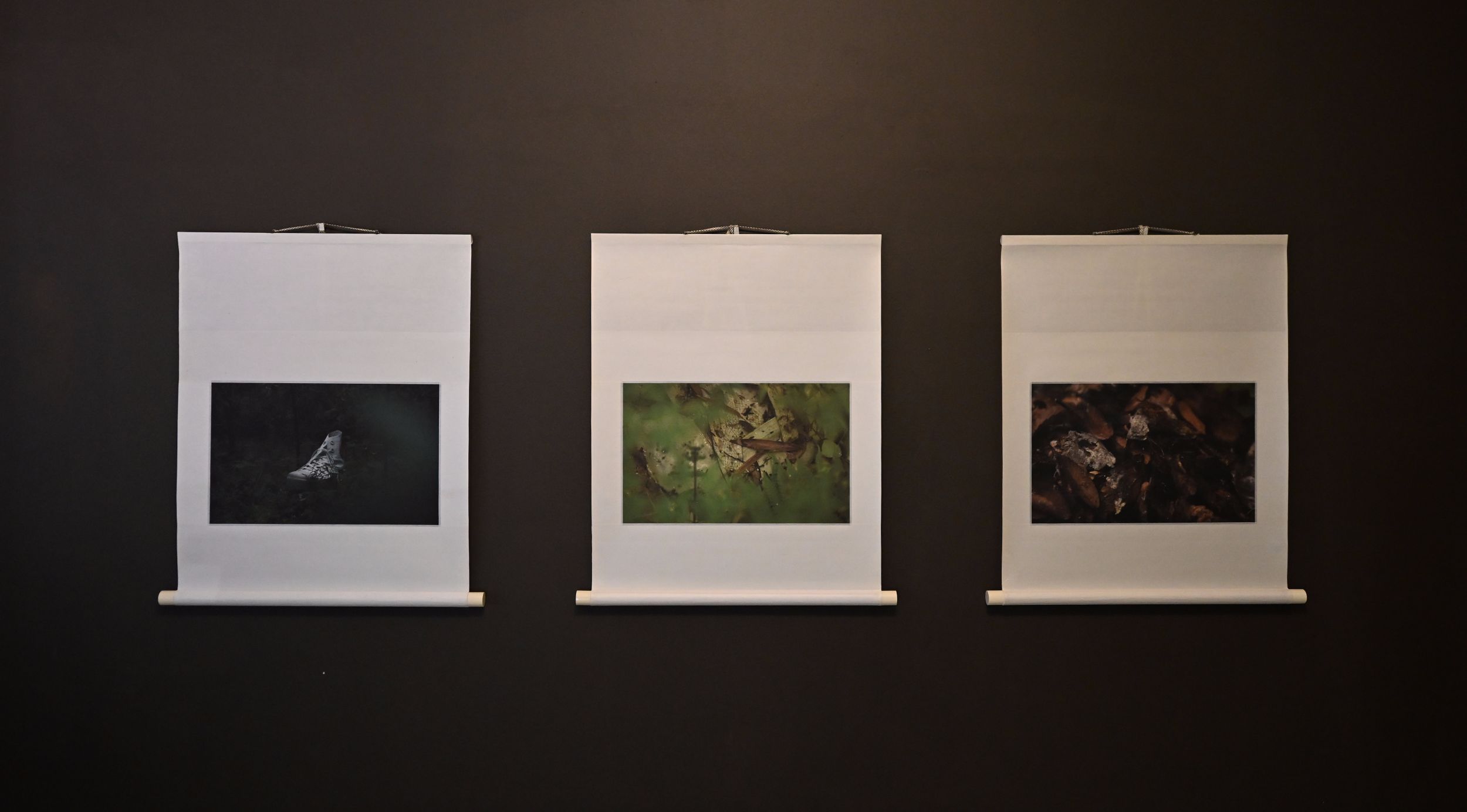
Satoyamar Archive
2025
w55 h74 d2.8 cm
Materials:
kozo paper, mitsumata paper, ganpi paper,
Japanese cedar, kumihimo (braided codes)
Exhibit History:
・Room 8, Malhoun, 1-54 Art Fair 2025 (Marrakesh, Morocco)
This series of photographs documents the year-long journey leading up to the return of the right shoe (“Satoyamart,” 2024) to the mountain. The artwork includes images from November 2023, April 2024, and November 2024, each displayed on a hanging scroll.
この掛軸シリーズは、靴の右側(Satoyamart 2024)が山に戻るまでの1年間の過程の姿を記録したものである。作品には、2023年11月、2024年4月、2024年11月の画像が含まれ、それぞれ日本の3大和紙素材である楮、三俣、雁皮紙で構成された掛け軸に表装されている。
Artisans who participated in the work
作品に参加した職人
Misako Kobayashi | 小林 美佐子
Mitiaki Kobayashi | 小林 道明
Shinichiro Abe | 安倍 信一郎
Sekishu Washi Center | 石州和紙会館
Technical supporters:
Sekishu Washi Center | 石州和紙会館
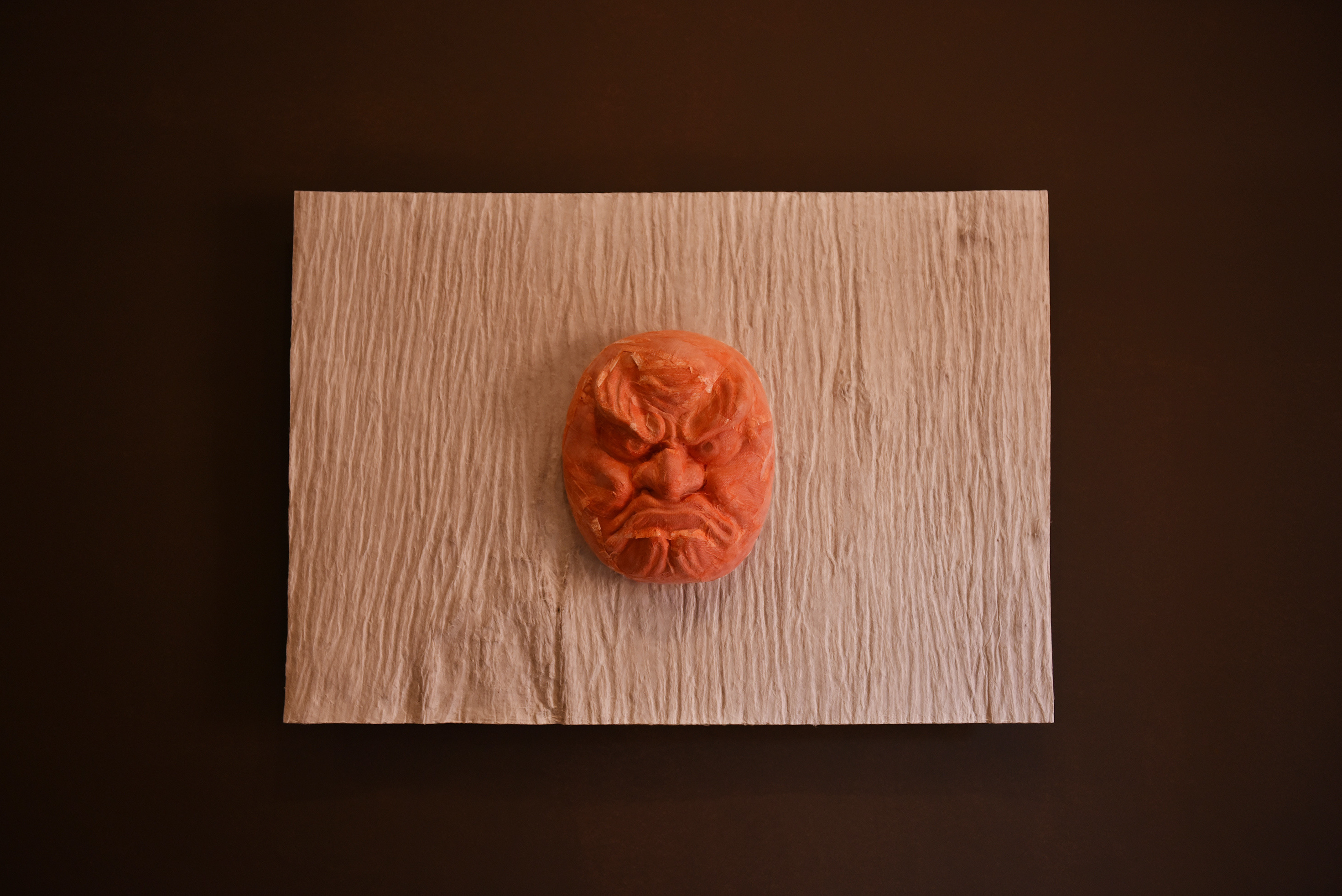
Mask sama
2023
62 x 88 x 15cm
Materials:
washi paper, Japanese cedar, tree bark, rice glue,
Shinsha (red pigment), medical face masks,
Kakishibu (polymeric tannin from persimmon juice)
Exhibit History:
・MONO JAPAN 2023 (Amsterdam, Netherlands)
・Room 8, Malhoun, 1-54 Art Fair 2024 (Marrakesh, Morocco)
・MONO JAPAN 2024 (Lotterdam, Netherlands)
・都市と循環 Circular Cities Conference & Festival 2024 (Kyoto, Japan)
Mask-sama is a work inspired by two masks: a kagura mask used in the traditional kagura dance of the Iwami region in Shimane, Japan and a medical mask symbolizing the COVID-19 pandemic. Regular kagura masks are constructed by layering Japanese washi paper, but in this work, a medical mask (non-woven fabric) is applied on top of the washi paper. The mask is painted vermilion (shuiro, or vivid red color); the color used in shrines meaning prayers or expelling evil. In kagura, vermilion is also used for the masks of demons; hence, the boundary between the gods and demons is blurred in this artwork. If a person wears a mask, s/he can either be a god or a demon. This artwork is also a representation of the Japanese flag. The national flag could be the symbol of respecting and cherishing Japanese culture. However, in contemporary Japanese society, patriotism and the national flag seem to have become political rather than cultural.
マスクさま/Mask-sama(2023)は、島根県の石見地方に伝わる神楽の舞で使われる面(神楽面)と、コロナのパンデミックを象徴する医療用マスクという、2つのマスクをモチーフにした作品。通常、和紙を貼って完成させる神楽面だが、この作品では和紙の上に医療用マスク(不織布)を重ねた。マスクは鳥居や神社において祈りや魔除けの意味を込めて使われる朱色に塗られている。朱色は神楽では鬼の面にも使われるため、この作品では神と鬼の境目が曖昧になっている。面を被れば、神にも鬼にもなれるのかもしれない。この作品は日本の国旗を模している。国旗とは、日本文化を敬い、大事にしたいと思いを象徴するものではないだろうか。しかし、現代日本社会においては、愛国心や国旗は文化的なものではなく政治的なものになってしまっているようだ。
Artisans who participated in the work
作品に参加した職人
Taizo Kobayashi | 小林 泰三
Seigi Nisida | 西田 誠吉
Mitiaki Kobayashi | 小林 道明
Misako Kobayashi | 小林 美佐子

Shoki
2023
175 x 39 x 39cm
Materials:
washi paper, Japanese cedar, straw, medical face masks,
Shinsha (red pigment), rice glue, horsehair,
Kakishibu (polymeric tannin from persimmon juice),
Tamahagane (Steel for Samurai Sword)
Exhibit History;
・MONO JAPAN 2023 (Amsterdam, Netherlands)
・Room 8, Malhoun, 1-54 Art Fair 2024 (Marrakesh, Morocco)
・MONO JAPAN 2024 (Lotterdam, Netherlands)
・都市と循環 Circular Cities Conference & Festival 2024 (Kyoto, Japan)
Shoki is based on the motif of Shoki, a deity known in Japan as the god of evil and protection from evil, which originated in Chinese mythology. In the Iwami region of Shimane, kagura, a sacred dance dedicated to Shinto gods, is deeply rooted in people's lives and the dance is performed by locals every week. However, due to the pandemic, the performance had to be suspended and kagura prayers were disrupted for a long time. The artwork expresses the bound Shoki god but also the hope that the power of gods and prayers will release that bondage. Shoki's kimono is made of washi paper cloth, shifu 紙布 ; it took 12 days just to prepare 2,600 meters of threads. The base of Shoki is made out of 19 boxes that mimic vaccine boxes, representing a concrete building, a symbol of the urbanized modern environment that allowed the virus to thrive. Can we reclaim what we have lost: nature, prayer, and culture?
しょうき /Shoki(2023)は、中国の神話に由来し、厄除け・魔除けの神(元々は鬼だった)として日本でも知られている鍾馗(しょうき)をモチーフにした作品。島根県の石見地方では、神楽の舞が人々の暮らしに根付いており、毎週、神楽の公演が実施されてきたが、パンデミックで公演は長期間中断された。つまり神楽の祈りが中断されてしまったのだ。この作品は、縛られてしまった鍾馗の神を表現しつつ、神や祈りの力はその「縛り」をも解き放つという希望も込められている。しょうきの着物には、和紙を細長く切って、手作業によるよりをかけるという作業により12日間かけて糸を作り、2600メートル以上の糸を使って織り上げられた紙布を使用している。
しょうきの土台部分は、都市化が進んだ近代社会の象徴であるコンクリートのビルを意味している。ウイルスは都会の環境の中で猛威を振るったことを表現するため、ワクチンの箱を19段積み上げた。私たちは、失ってしまったものー自然、祈り、文化ーを、取り戻すことはできるだろうか。
Artisans who participated in the work
作品に参加した職人
Yu Yamauchi | 山内 ゆう
Taizo Kobayashi | 小林 泰三
Seigi Nisitada | 西田 誠吉
Tsugio Okada | 岡田 次雄
Kouji Miyanohara | 宮之原 康詞
Tamahagane | 田鍋家の玉鋼
Kiyoshi Shibahara | 芝原 清
Mitiaki Kobayashi | 小林 道明
Misako Kobayashi | 小林 美佐子
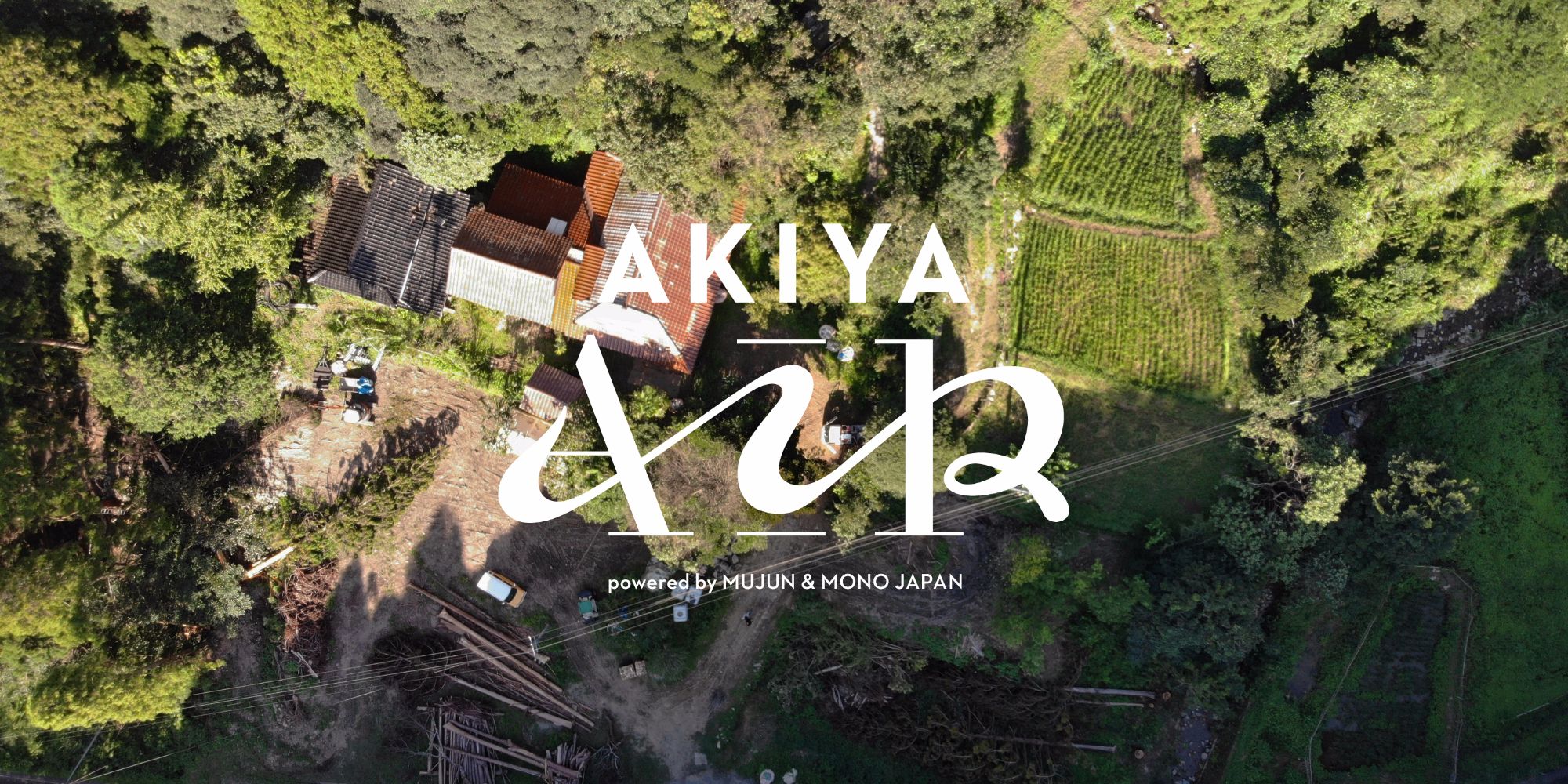
AKIYA AIR
2024~
Artist in Residence
Exhibit History:
・MUJUN Workshop Yunotsu (Yunotsu, Oda-city, Shimane, Japan)
・Gallery Toki (Yunotsu, Oda-city, Shimane, Japan)
・Expo 2025 Gallery East (Expo 2025 site, next to National Day Hall)
Next:
・MONO JAPAN 2026 (Lotterdam, Netherlands)
Link:
Web site;
https://www.monojapanfoundation.org/akiya-air-2024
Youtube;
Lecture of AKIYA AIR 2024 / MONO JAPAN 2024
AKIYA AIR is a collaborative residency program operated by MONO JAPAN Foundation based in the Netherlands and MUJUN in Yunotsu, Shimane Prefecture. Utilising vacant houses in Yunotsu, the program hosts creators from the Netherlands, offering them opportunities to experience traditional rural living, engage with local craftsmanship, explore cultural traditions such as Iwami Kagura, delve into the history of Iwami Ginzan located in the depths of Yunotsu, and immerse themselves in the abundant natural resources of the region. Participants also interact with the local community and engage in creative activities, such as producing artwork through their experiences. Participating artists contribute to maintaining vacant houses through activities like cleaning and upkeep, aiming to foster the influx of creative talents and community formation in Yunotsu's future endeavours.
AKIYA AIR(アーティスト・イン・レジデンス)は、オランダに拠点を置くMONO JAPAN財団と島根県温泉津町にある我々MUJUNが共同で運営するレジデンスプログラムです。温泉津の空き家(古民家、神社仏閣、山林、耕作放棄地、海岸など人口減少により維持管理が難しくなっている場所をAKIYAと表現)を活用し、オランダからのクリエーターを受け入れ、伝統的な田舎暮らしの体験、地元の職人技との関わり、石見神楽などの文化伝統の探求、温泉津の奥地にある石見銀山の歴史の掘り下げ、温泉津の豊かな自然資源に触れる機会を提供している。また、参加者は地域社会と交流し、体験を通して作品を制作するなどの創作活動を行う。参加アーティストは、空き家の清掃や維持管理など、空き家の維持管理に貢献し、将来の温泉津町におけるクリエイティブな才能の流入とコミュニティ形成を目指す。

